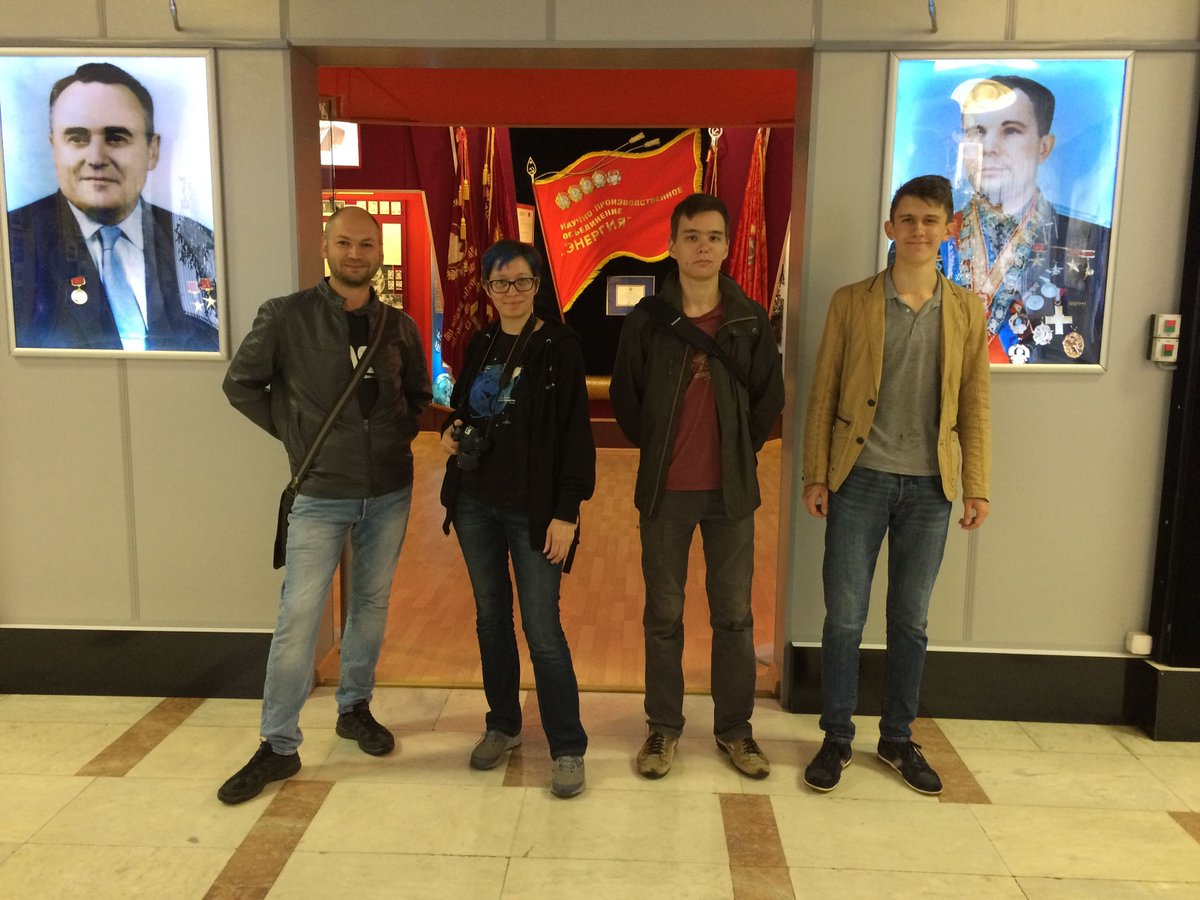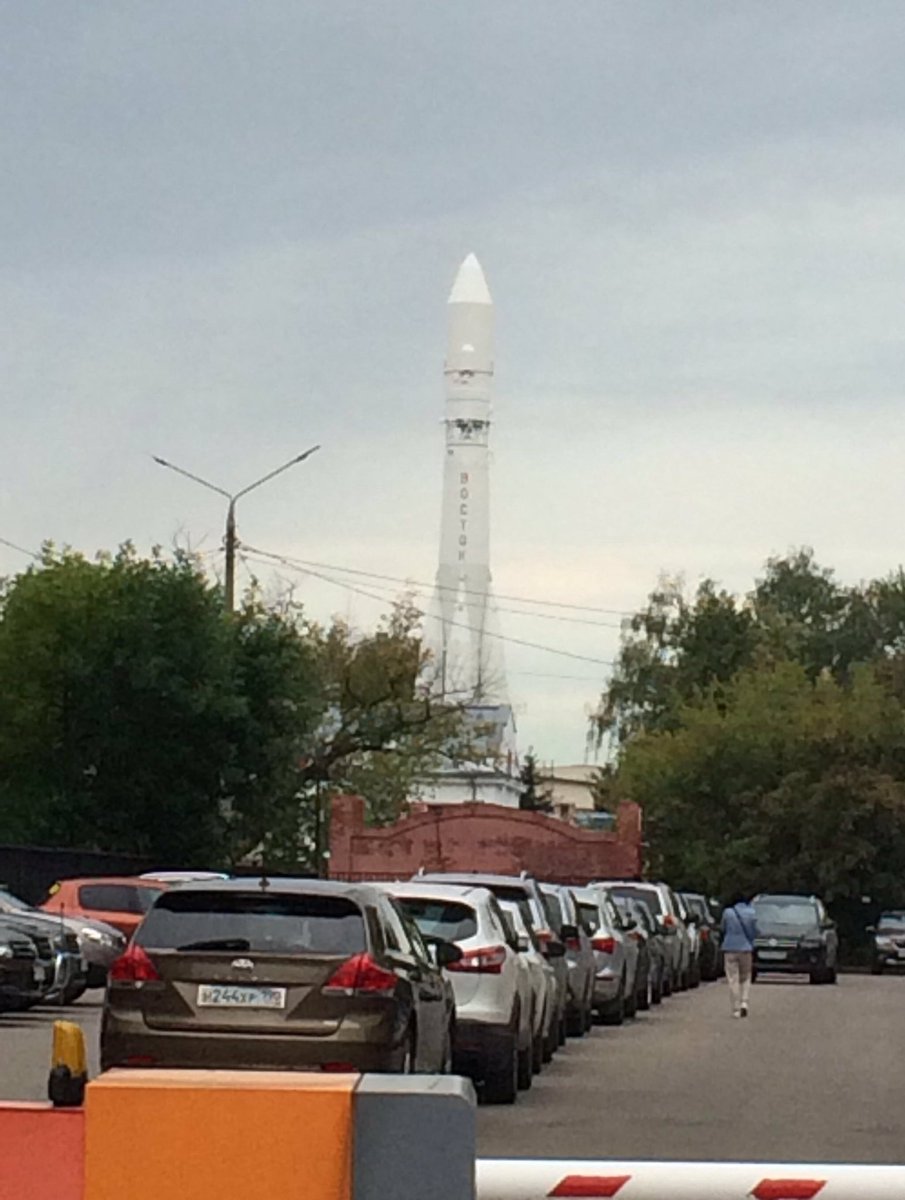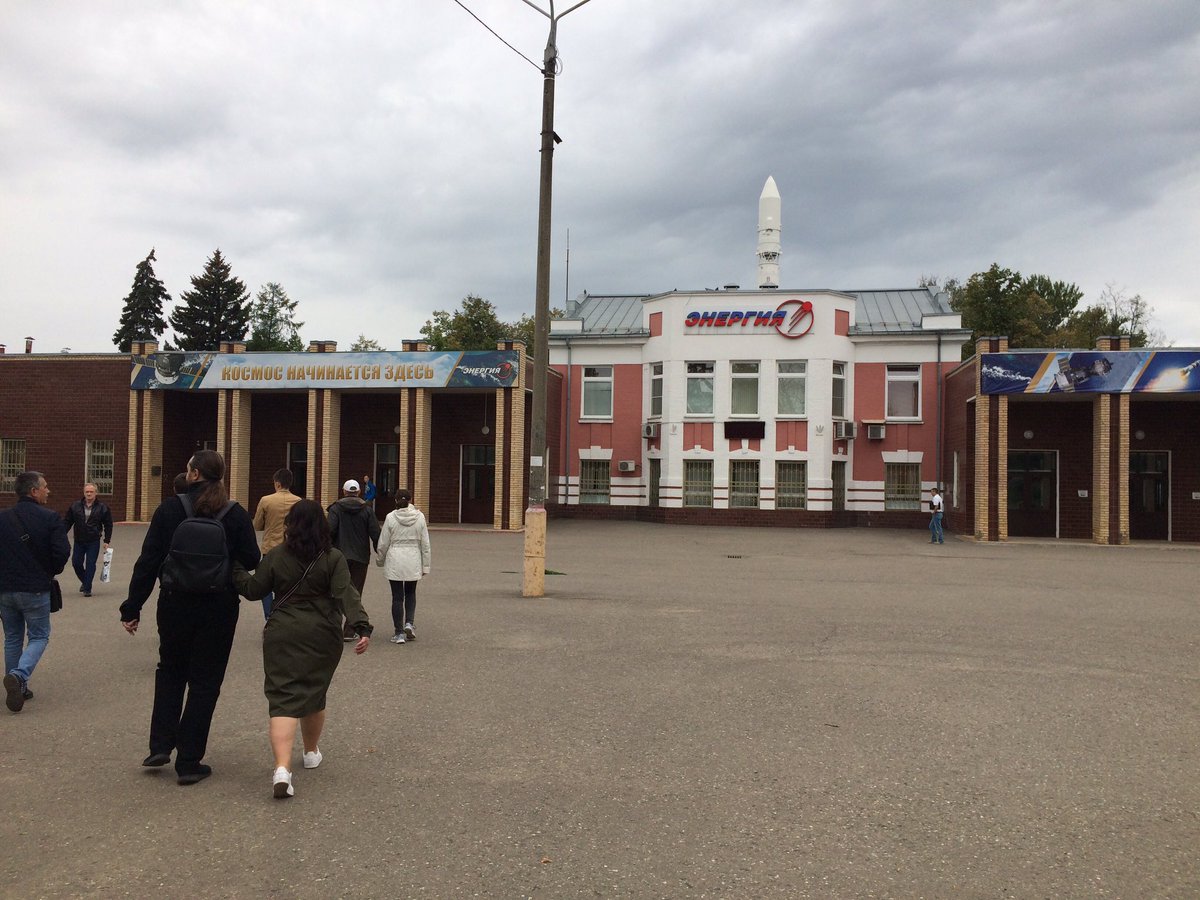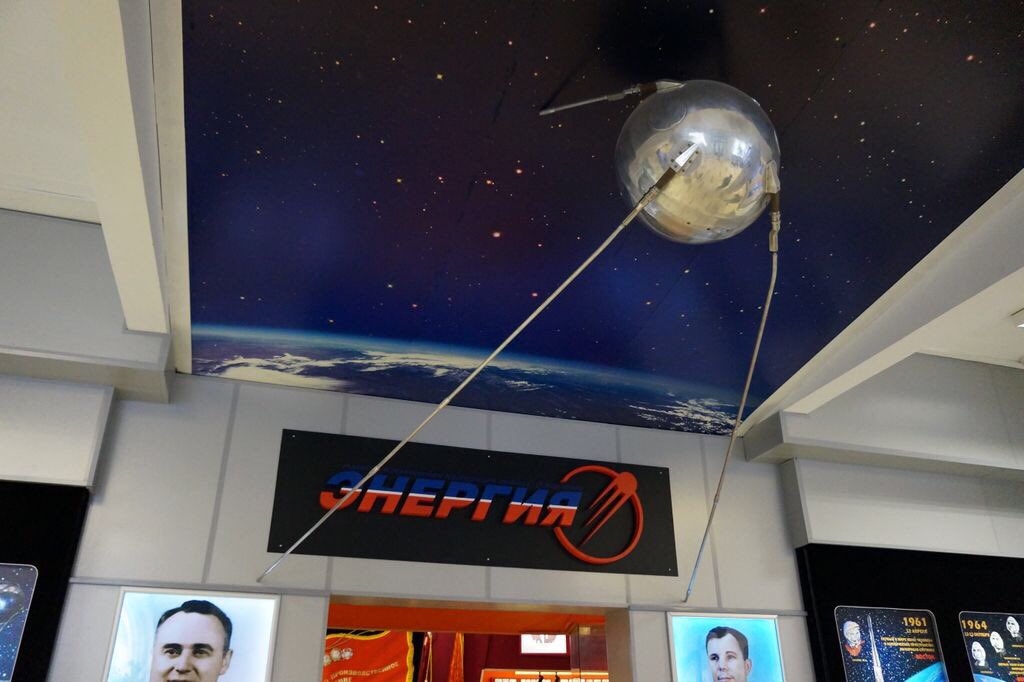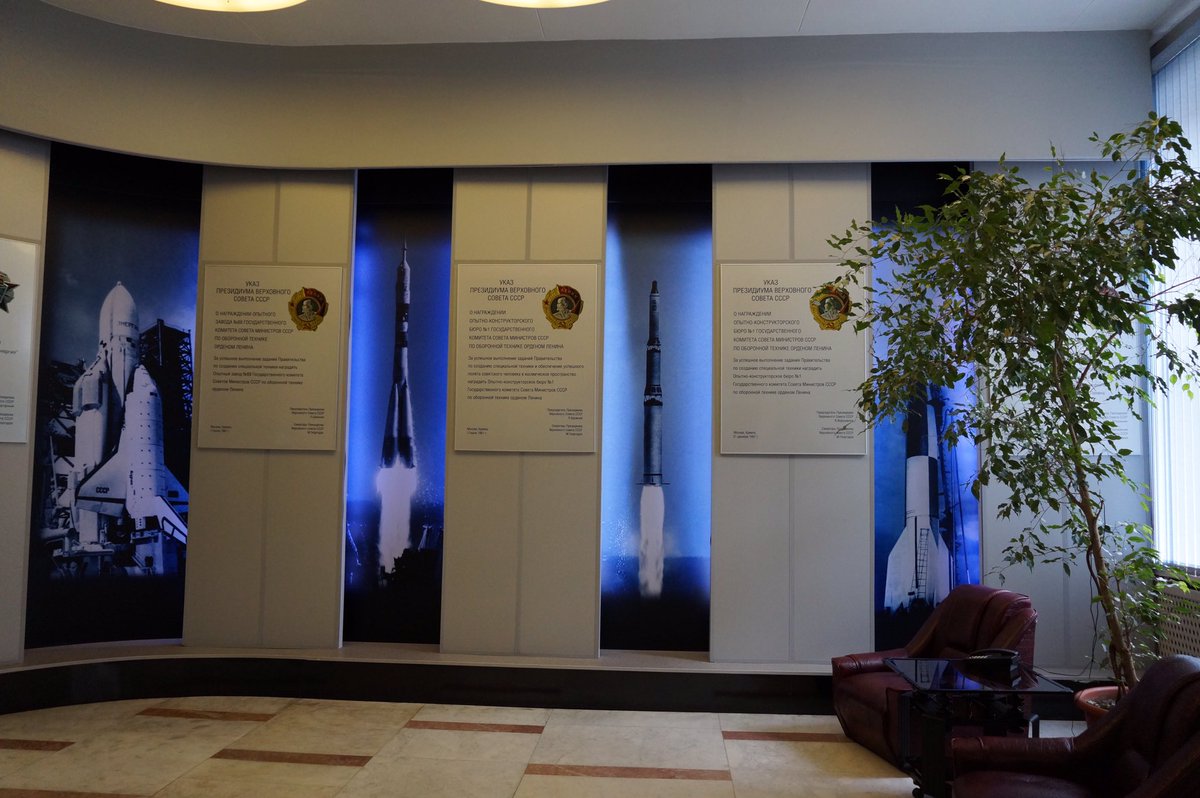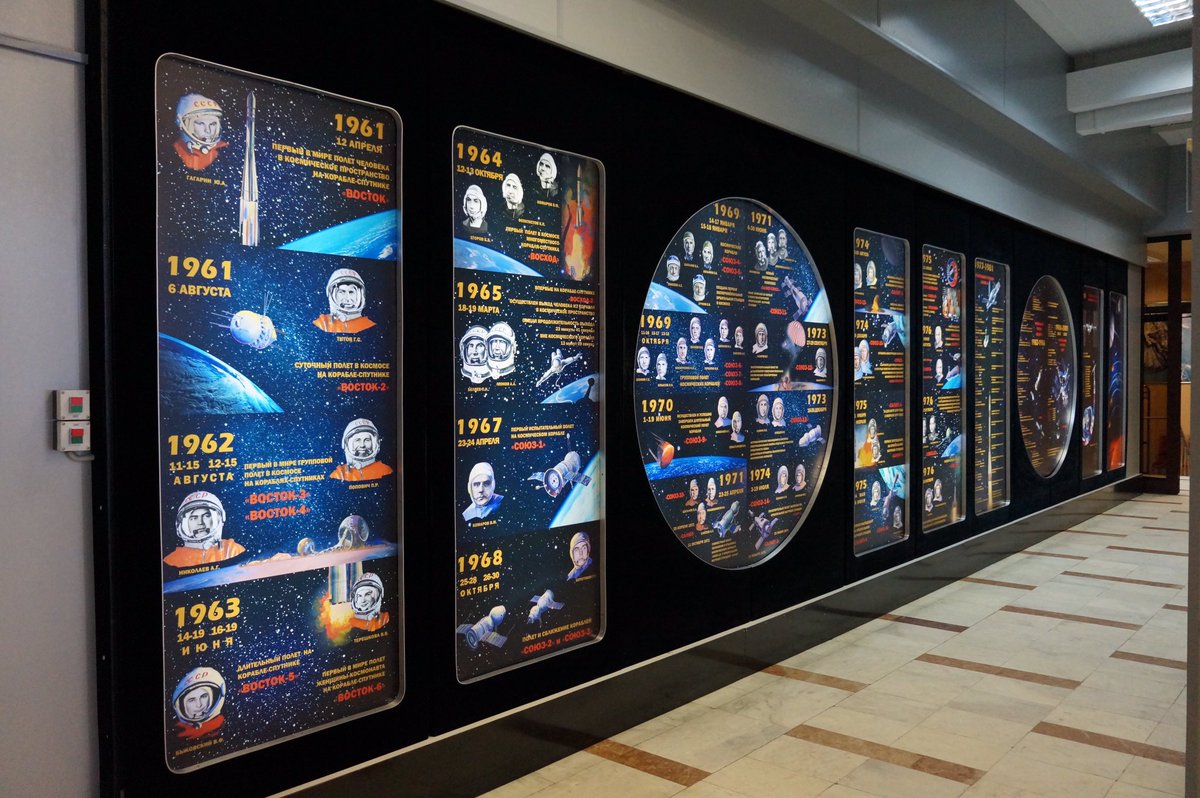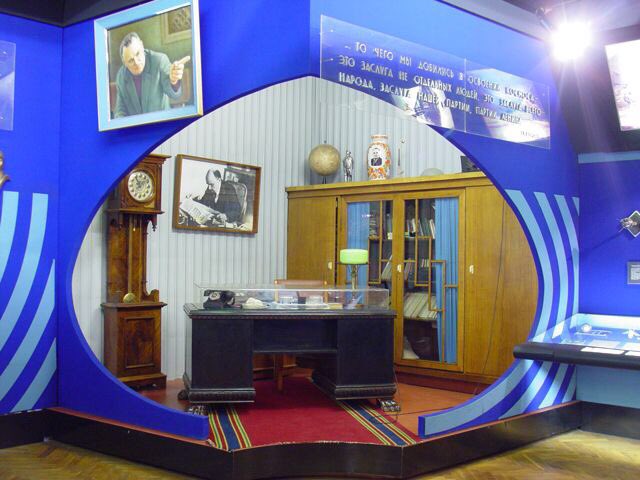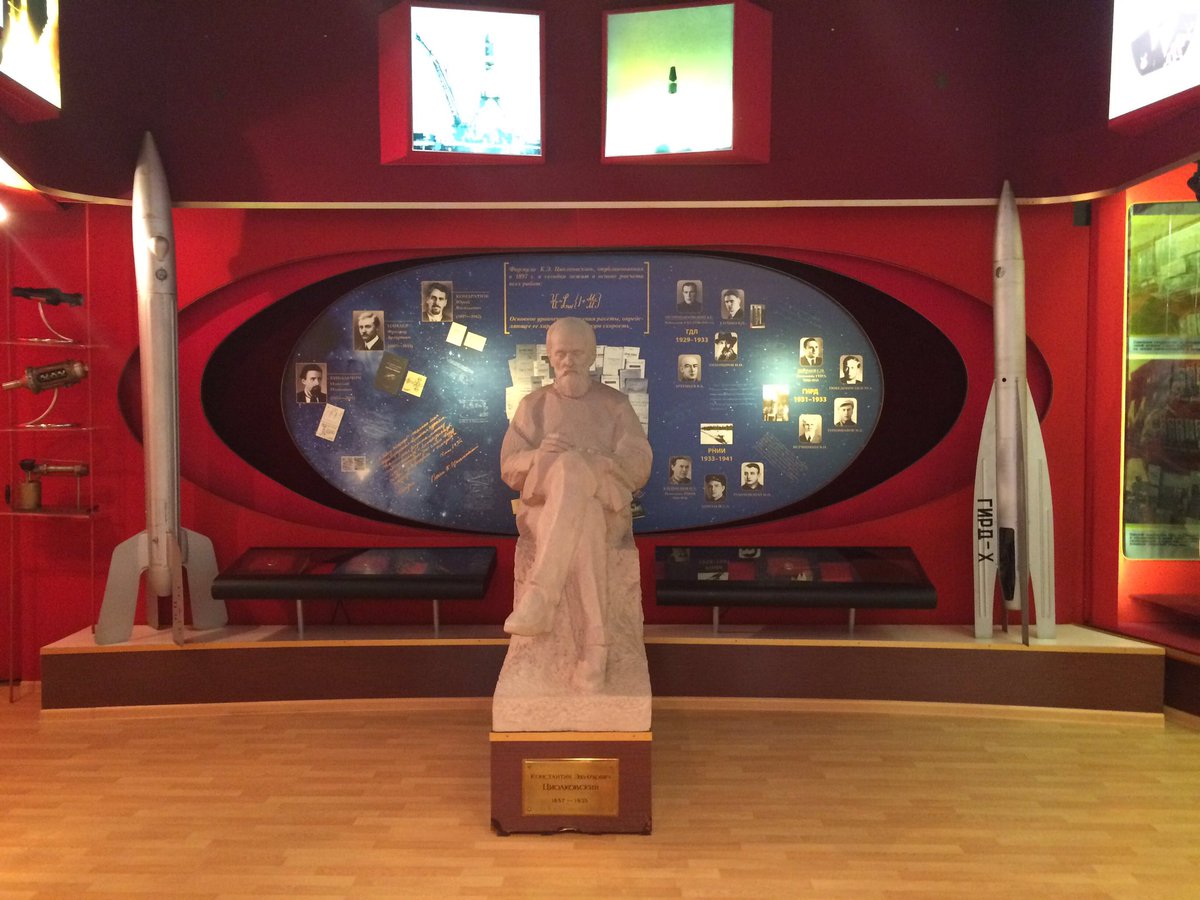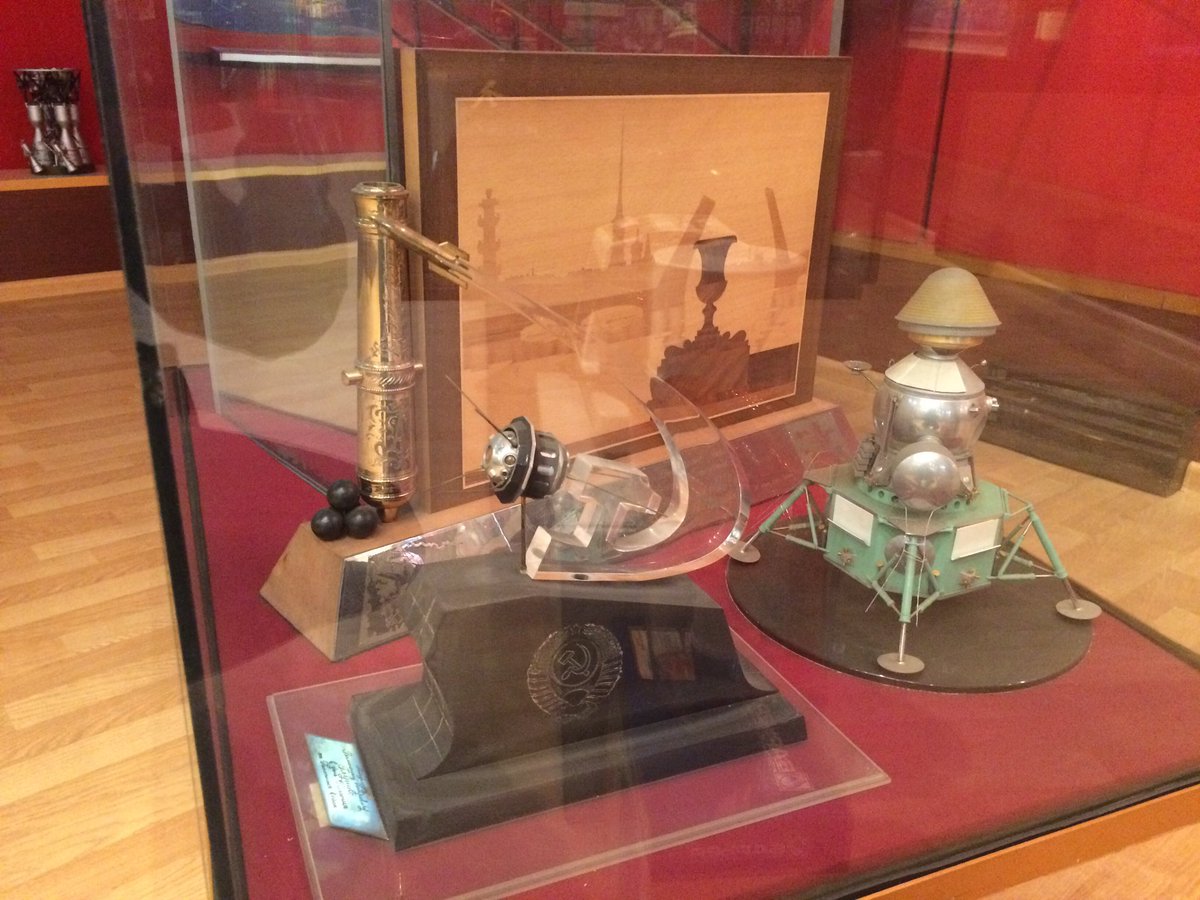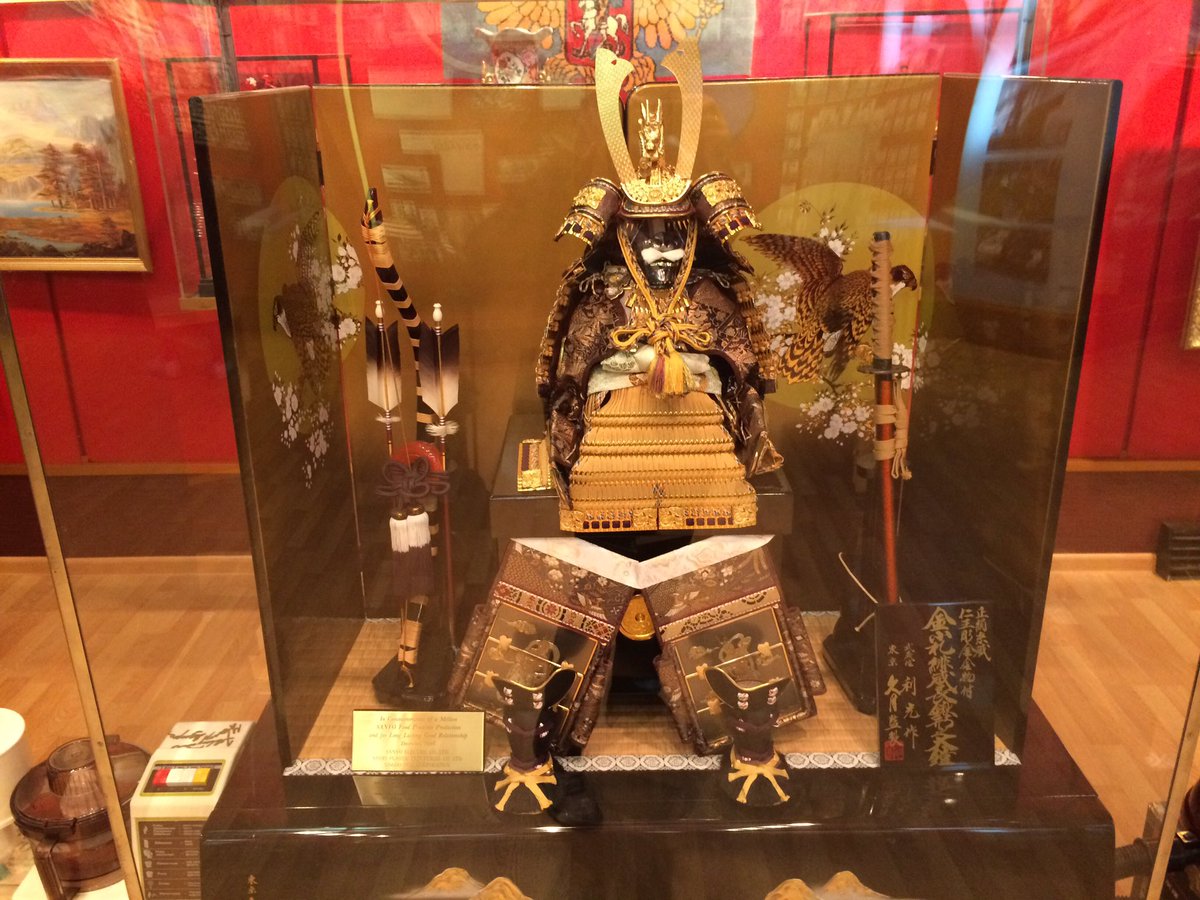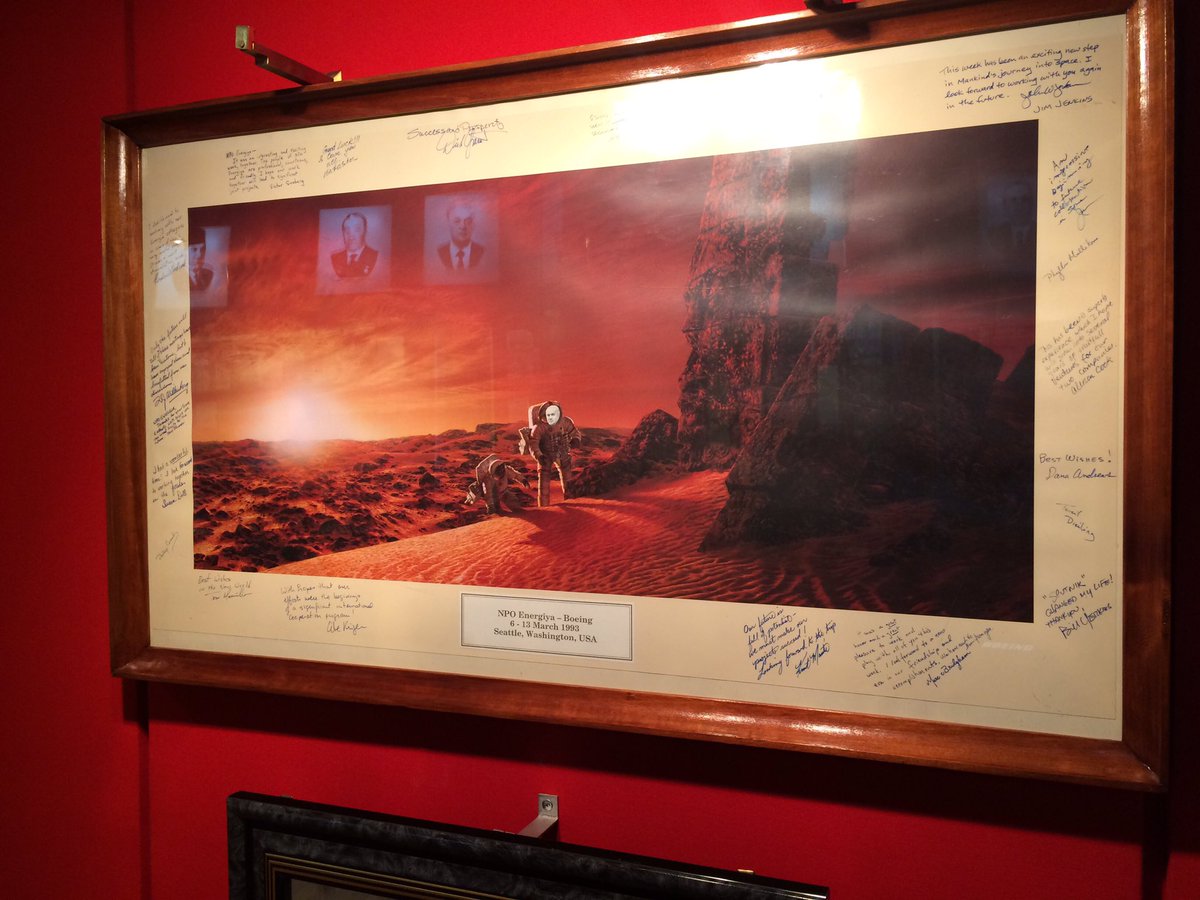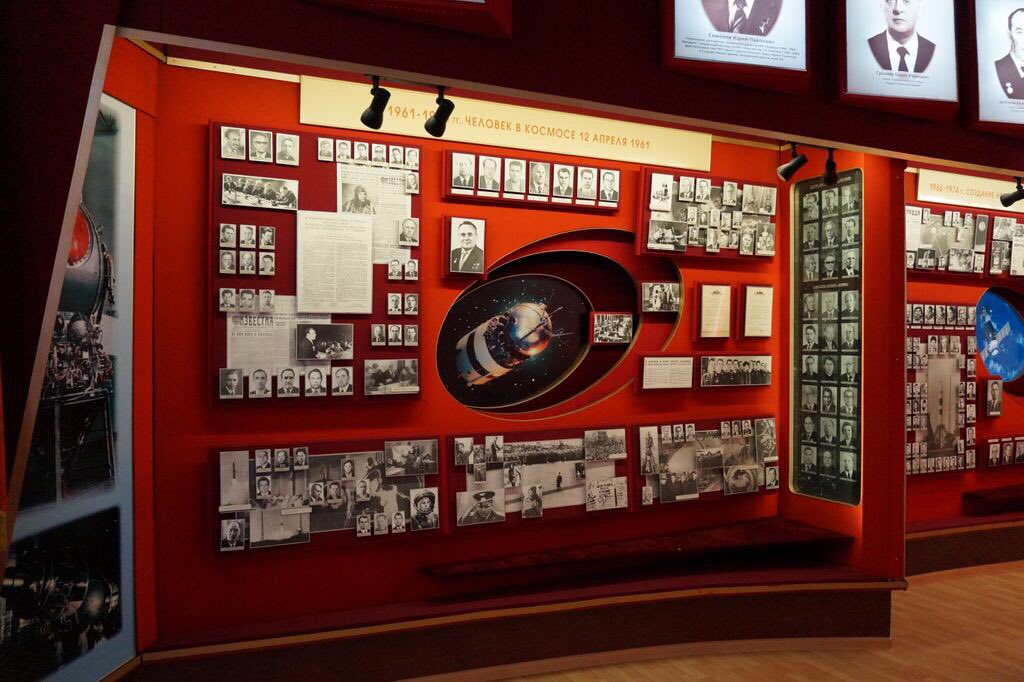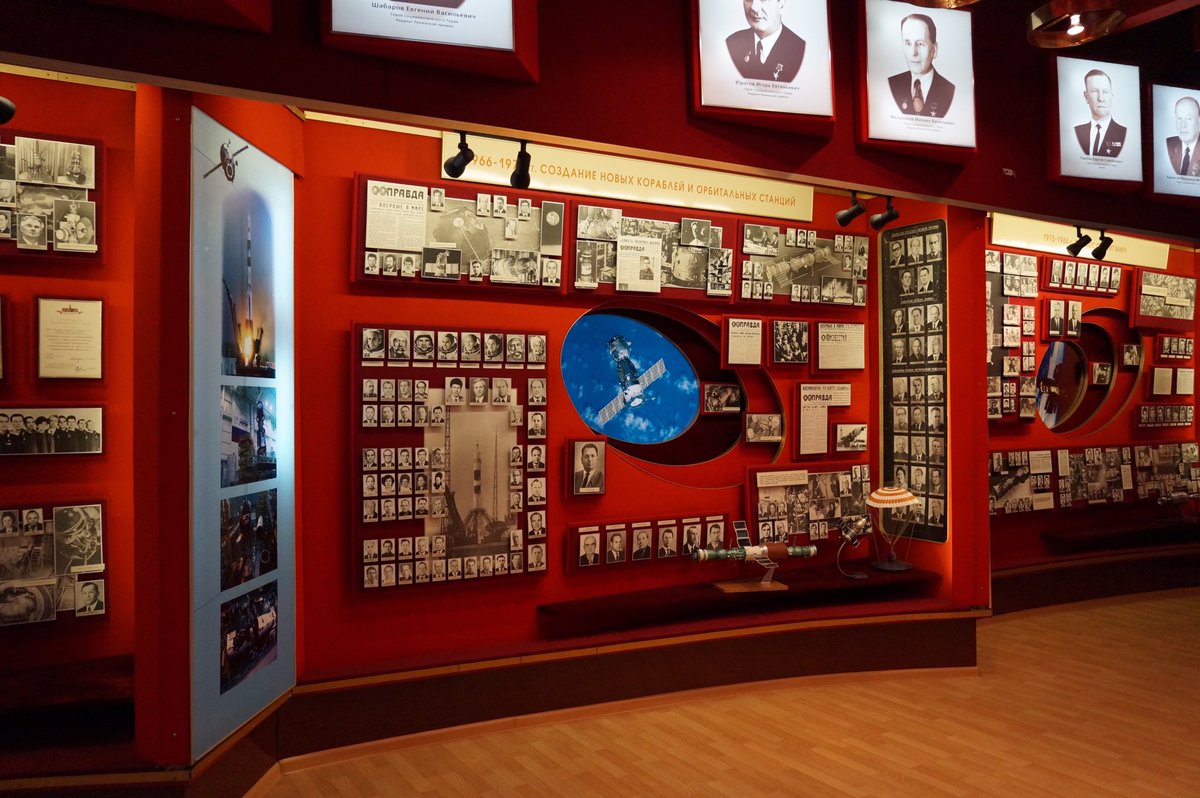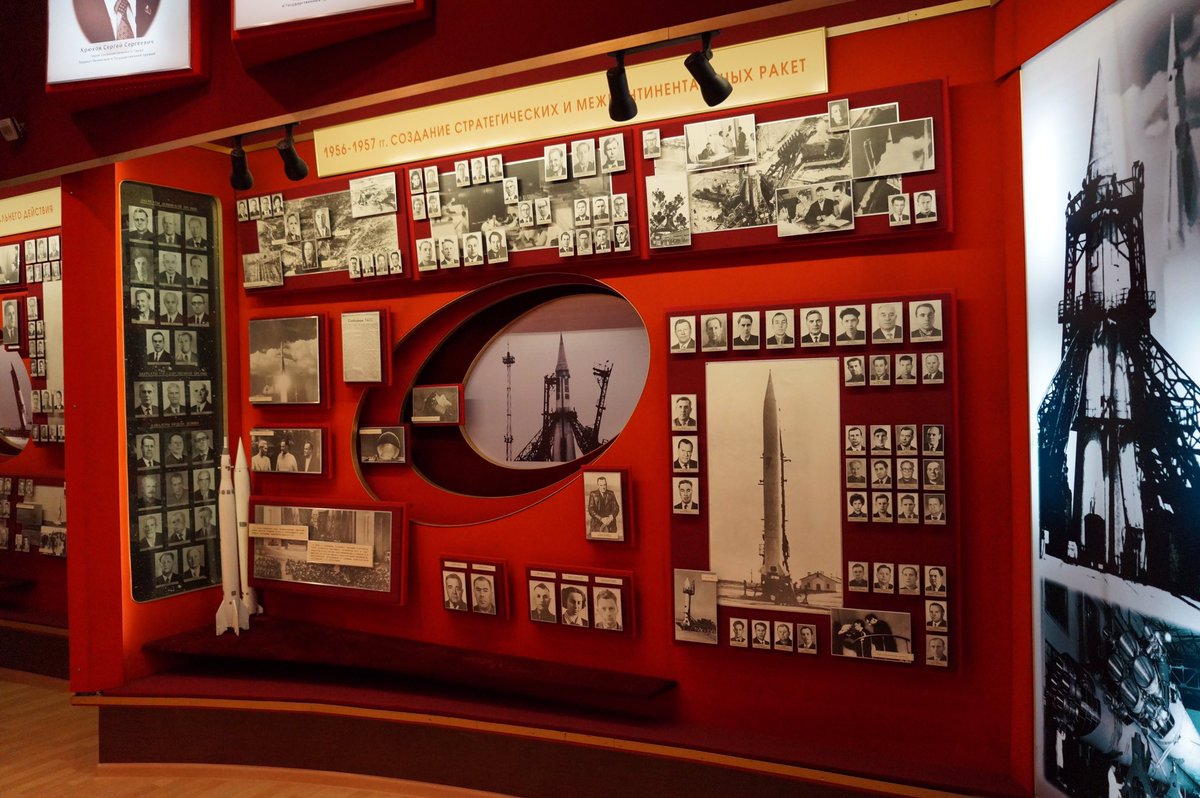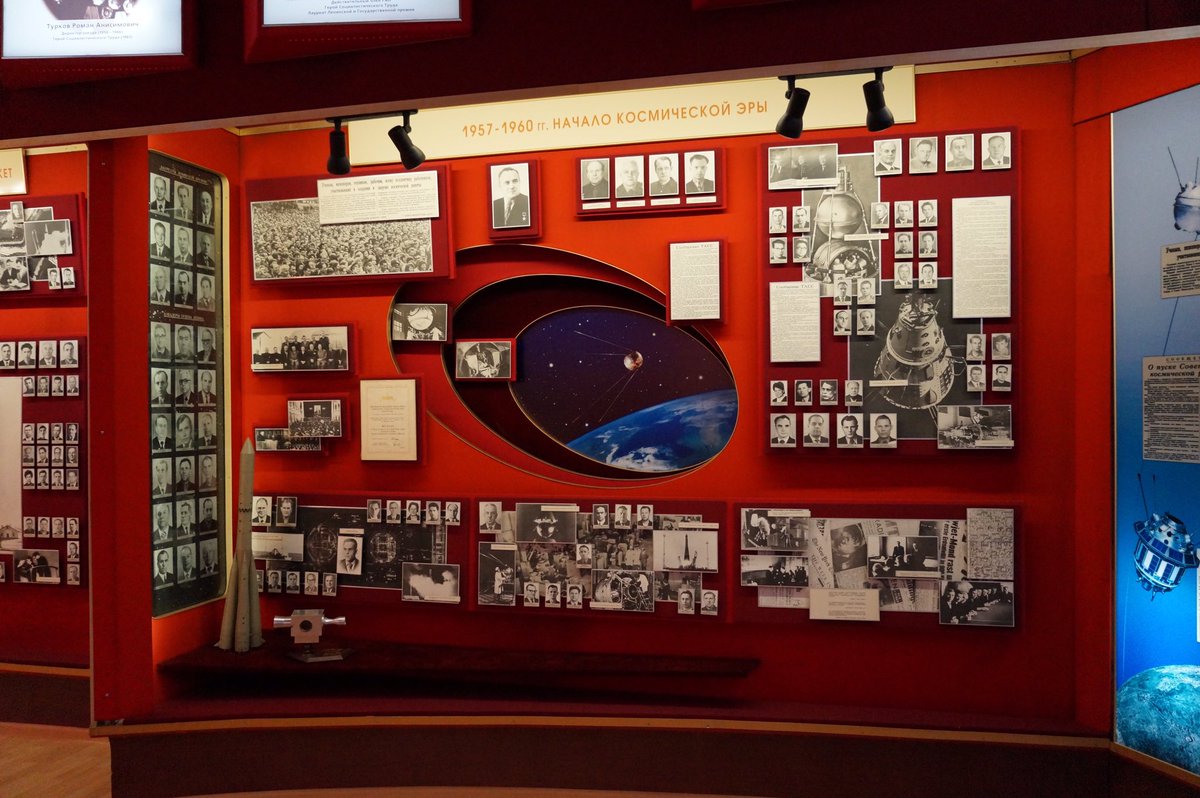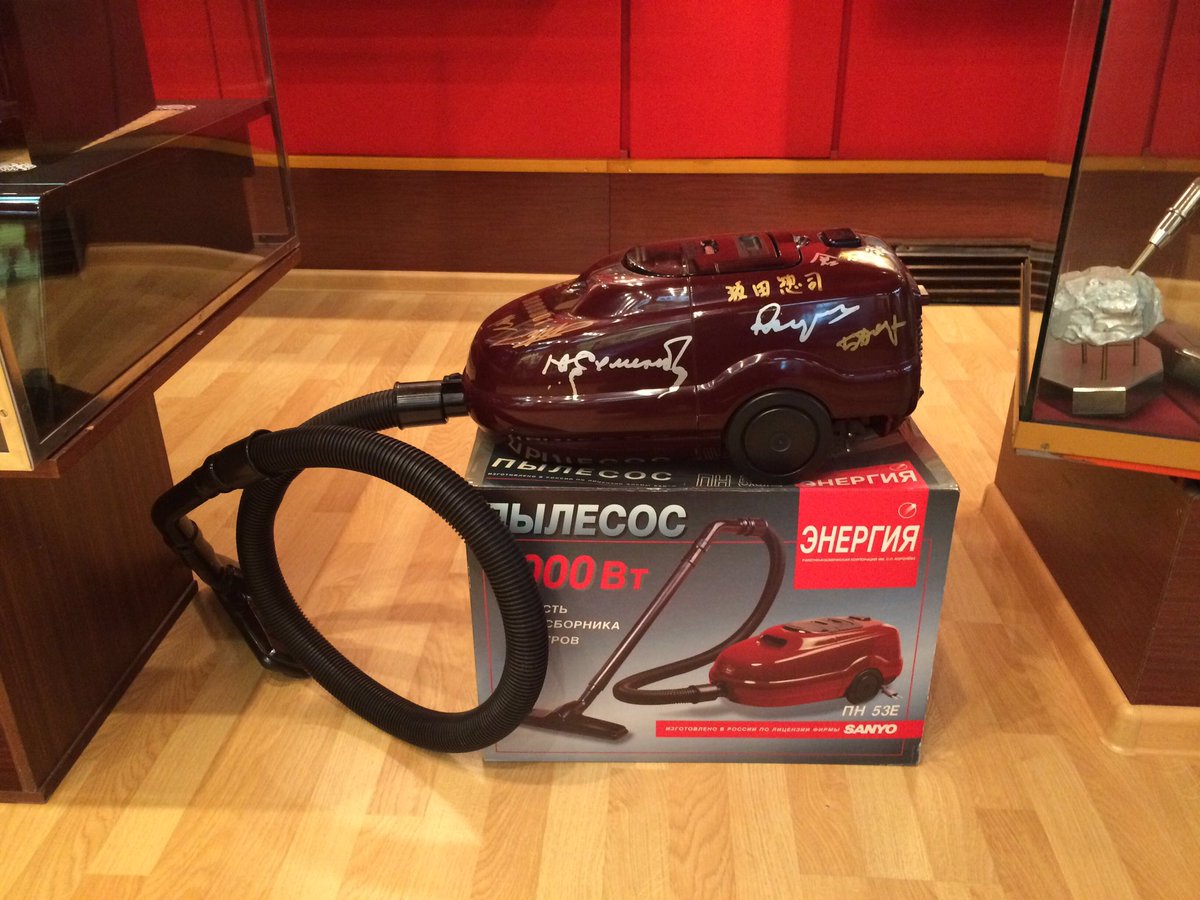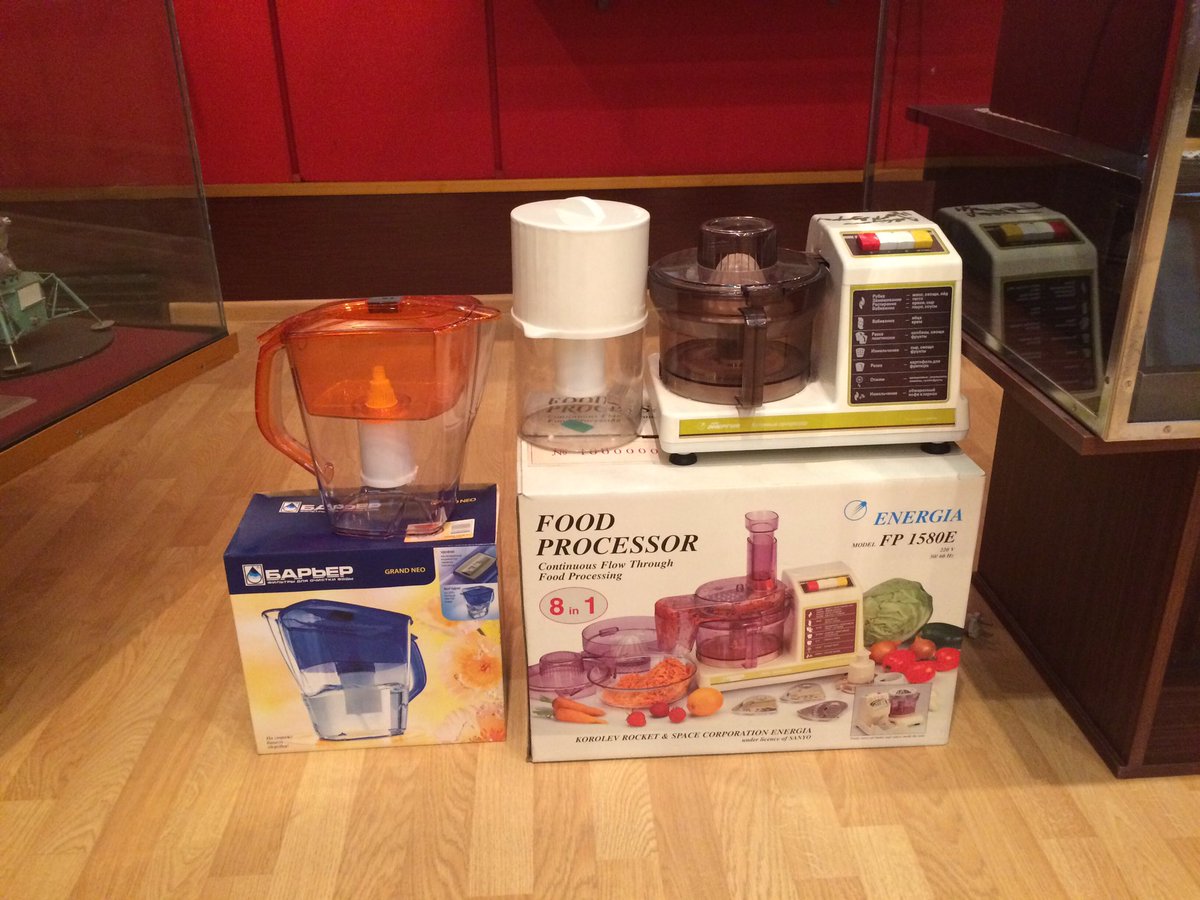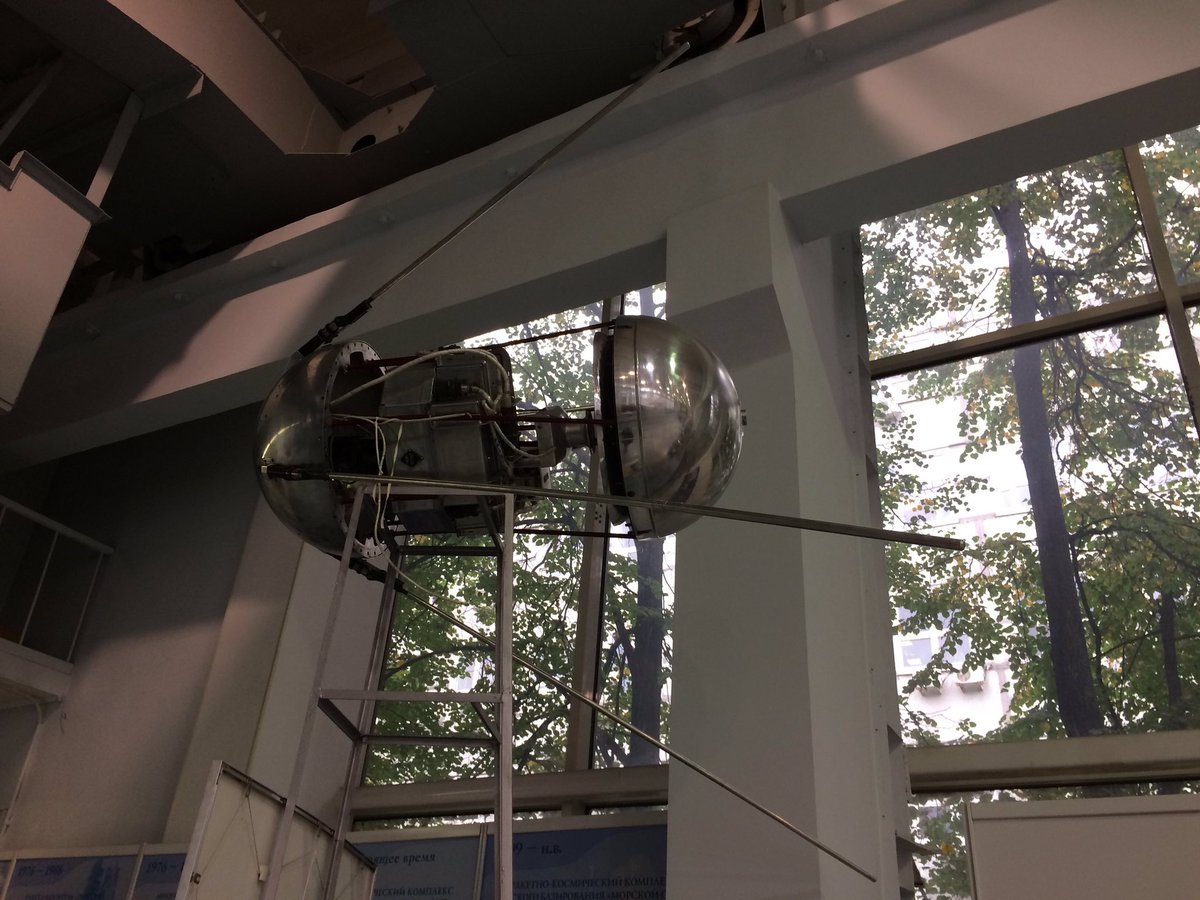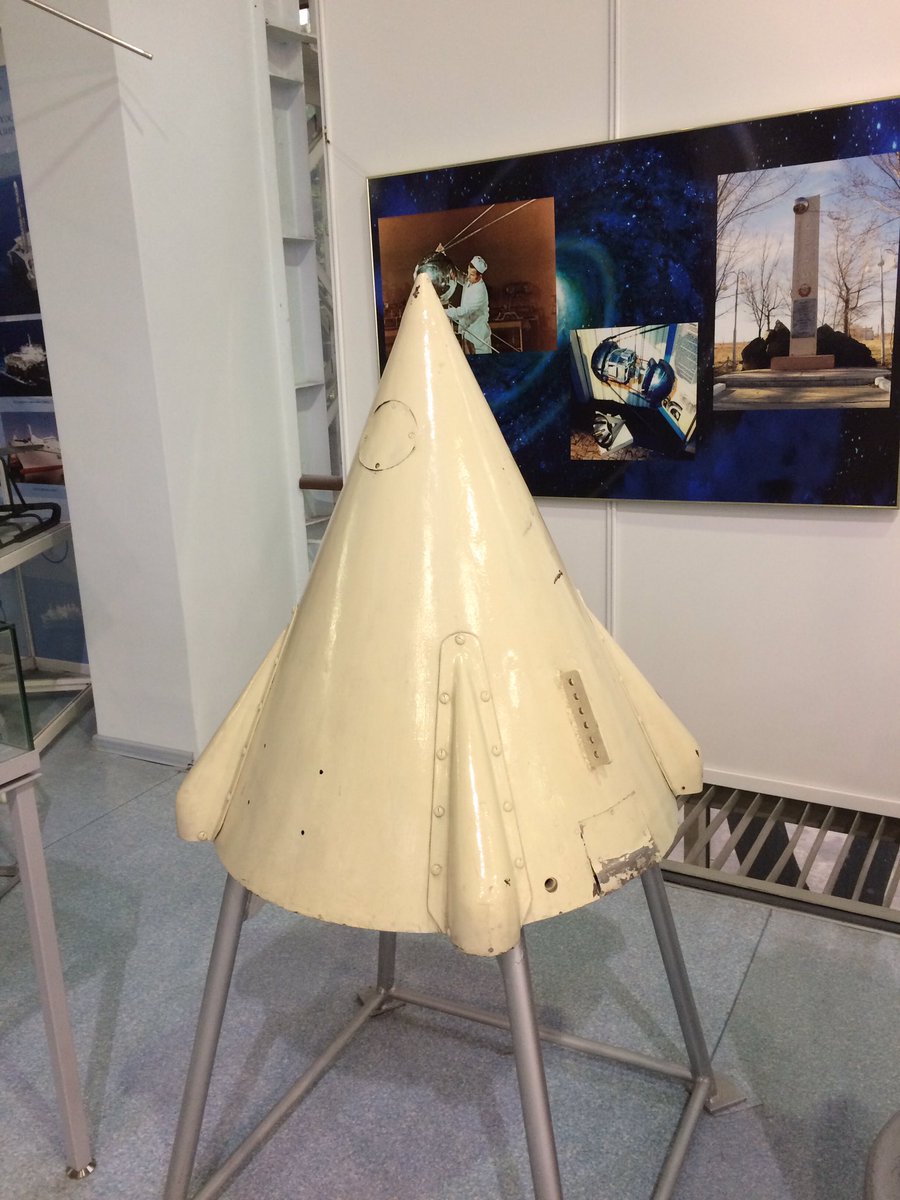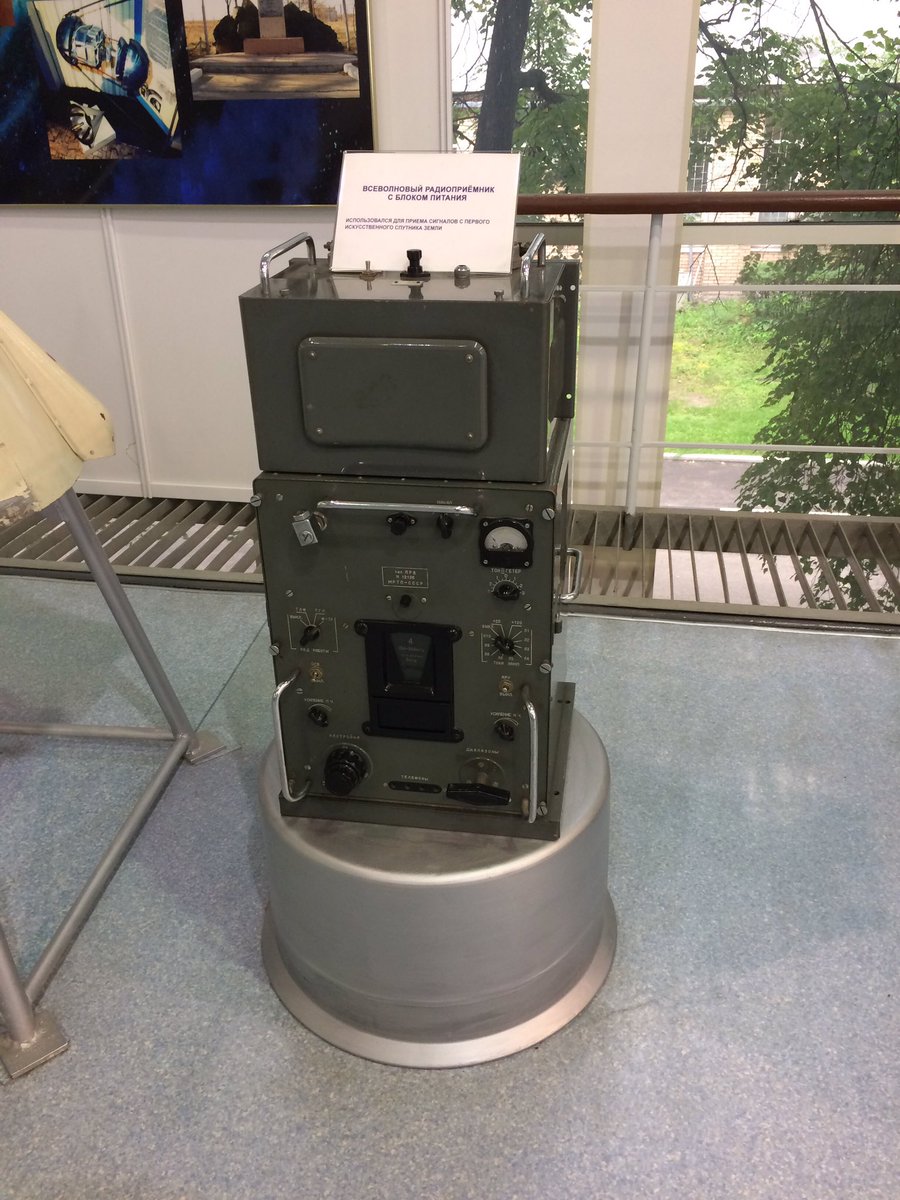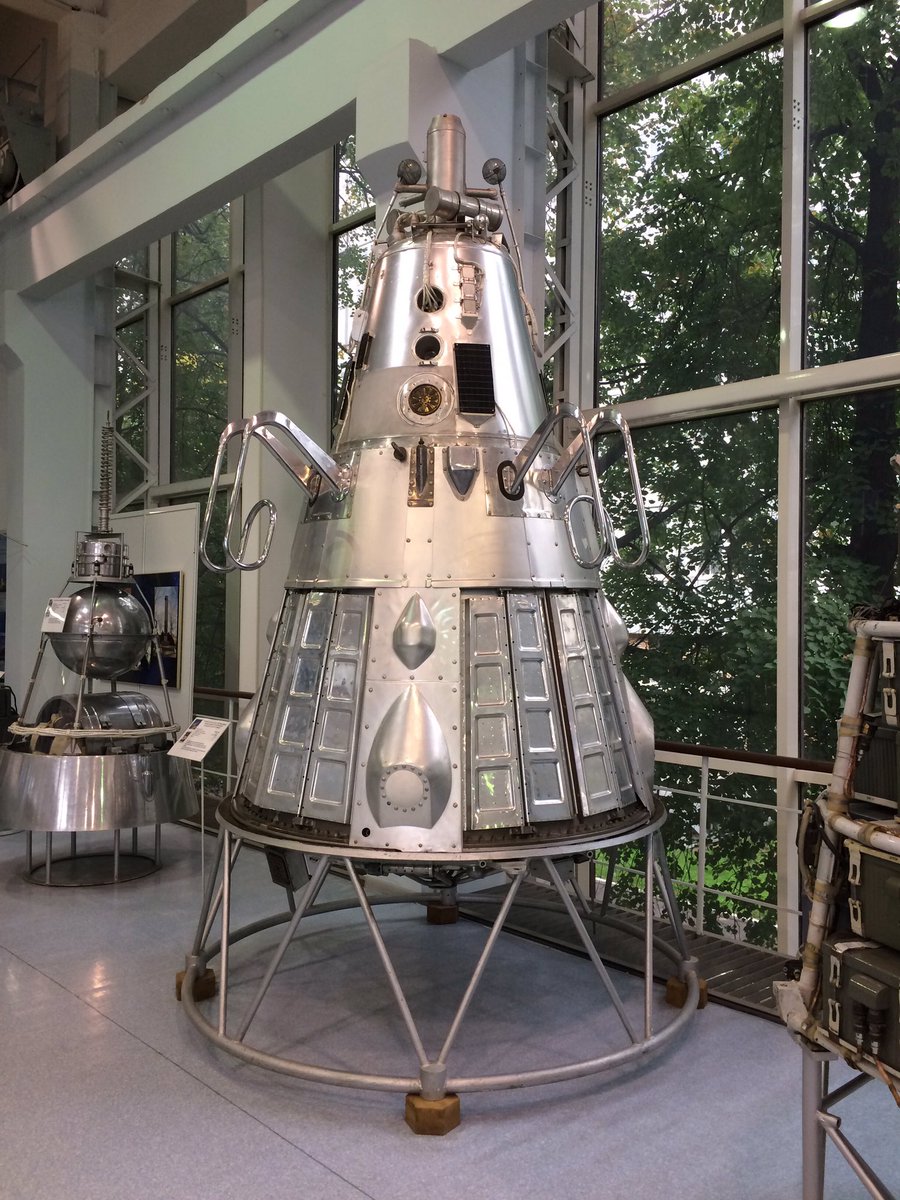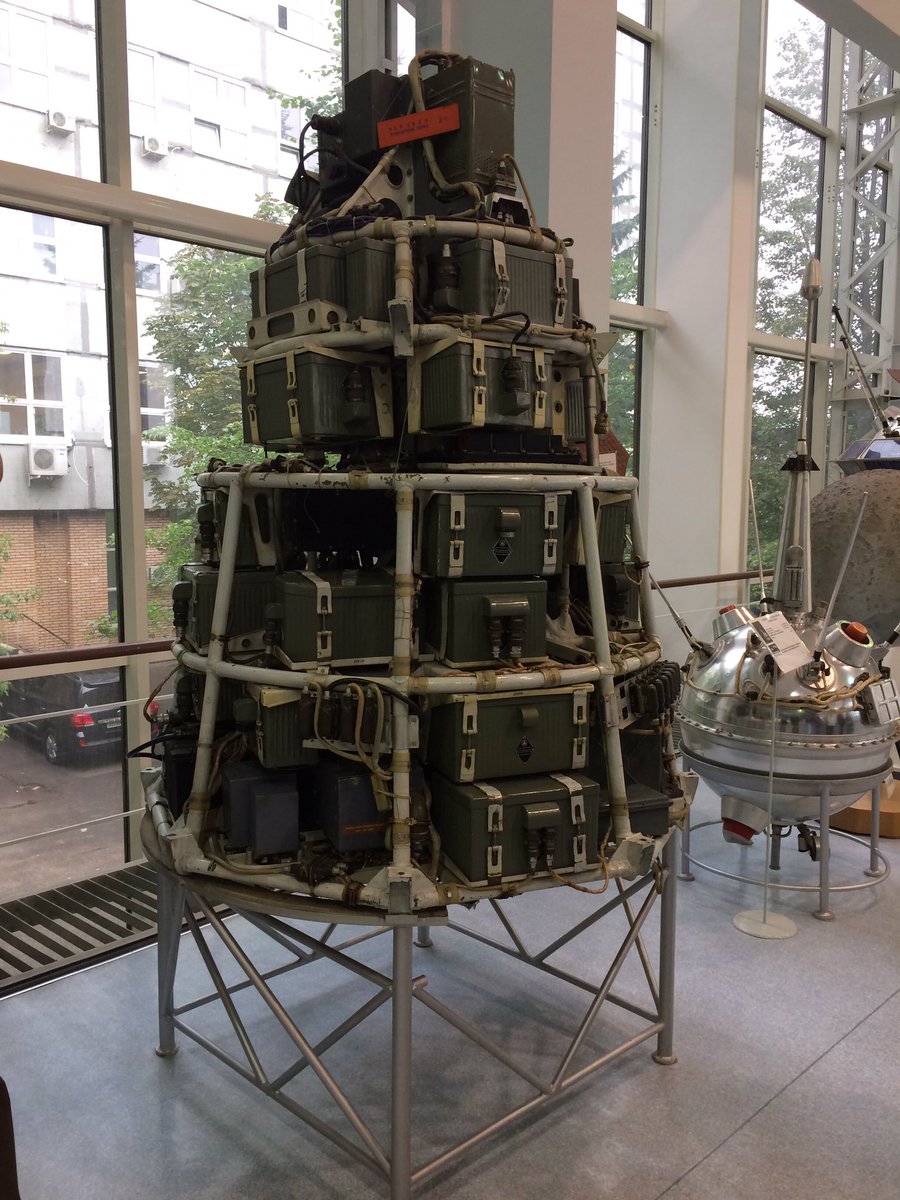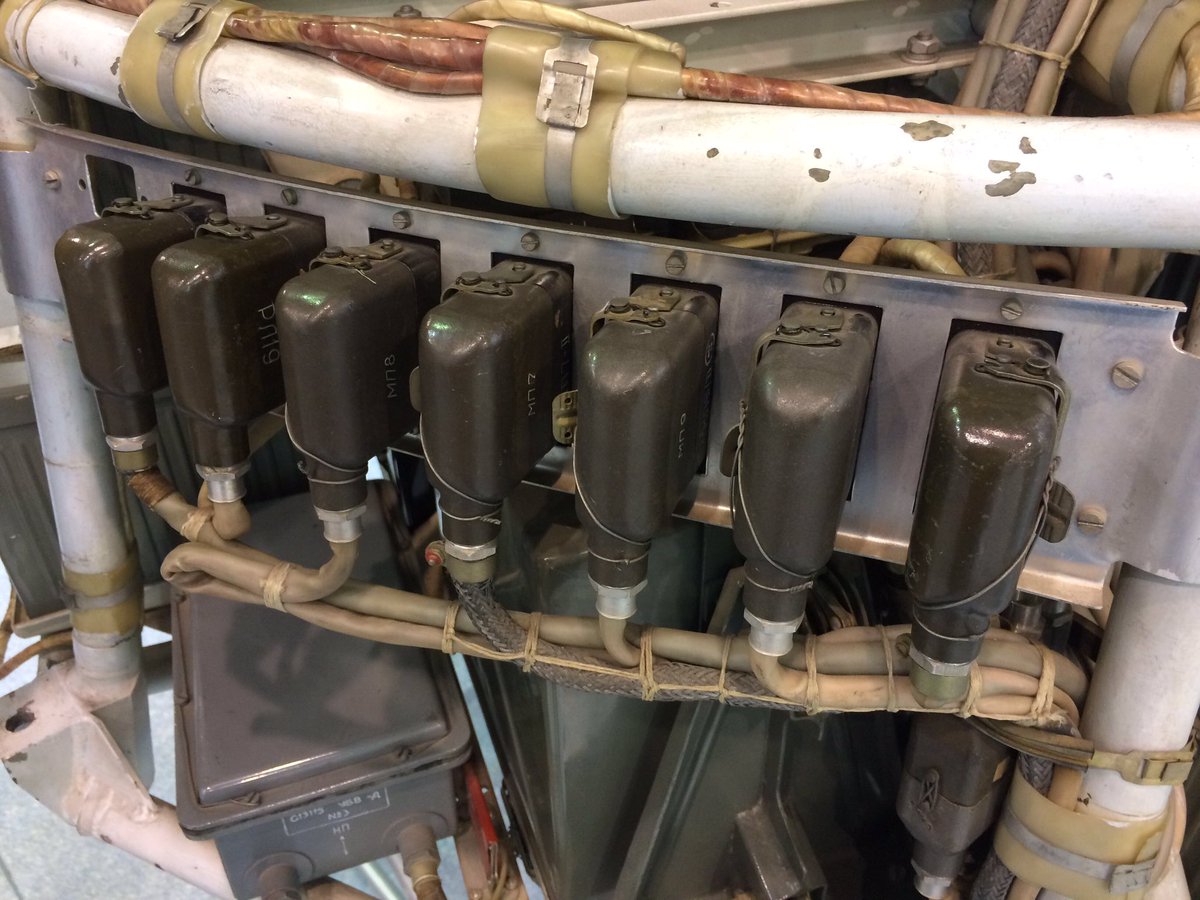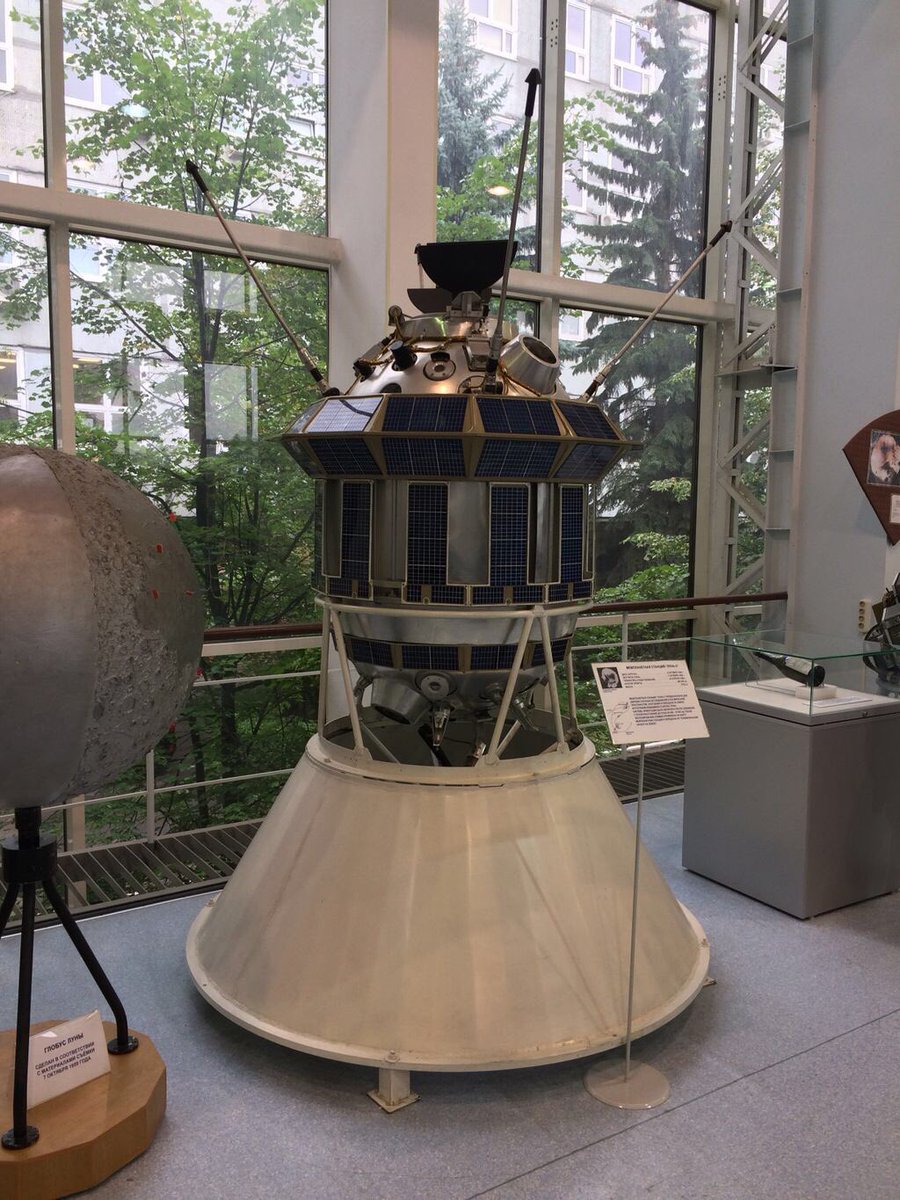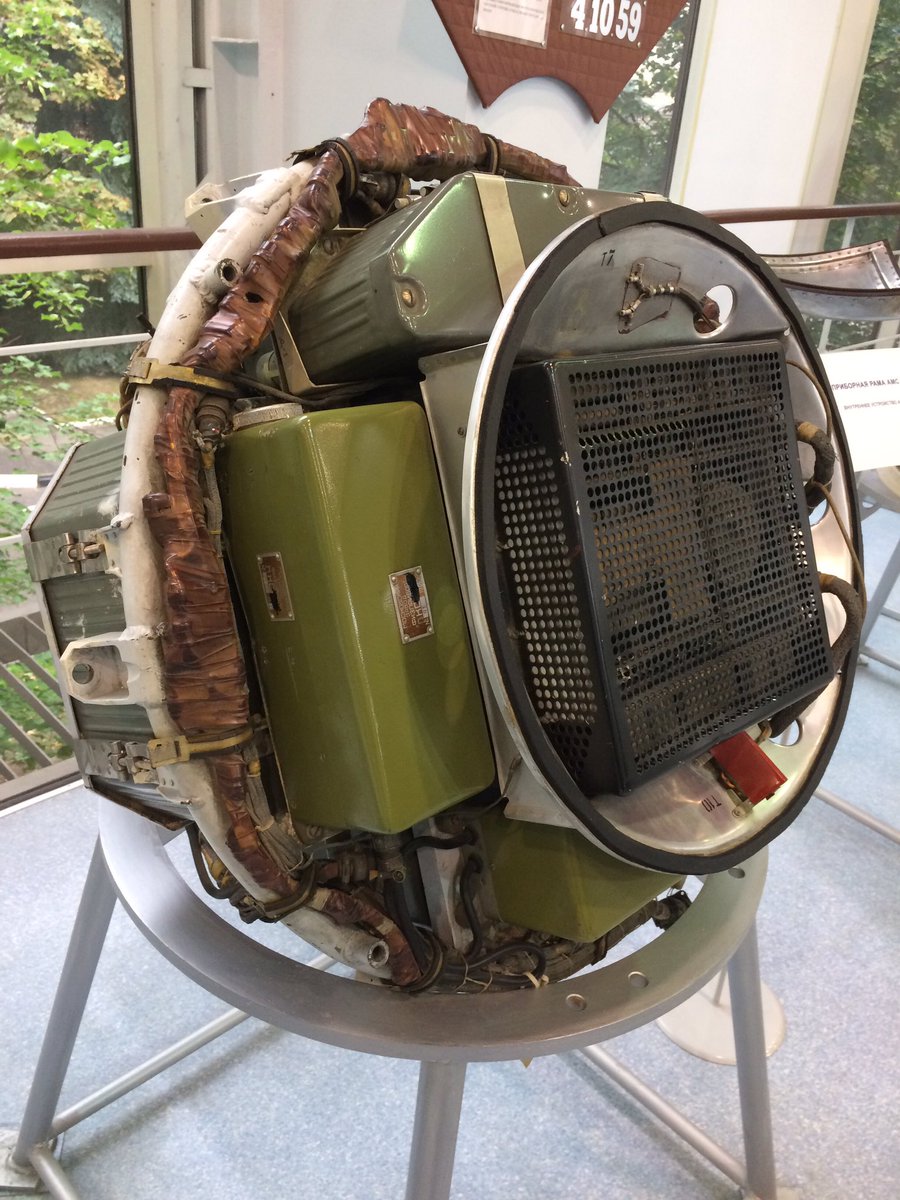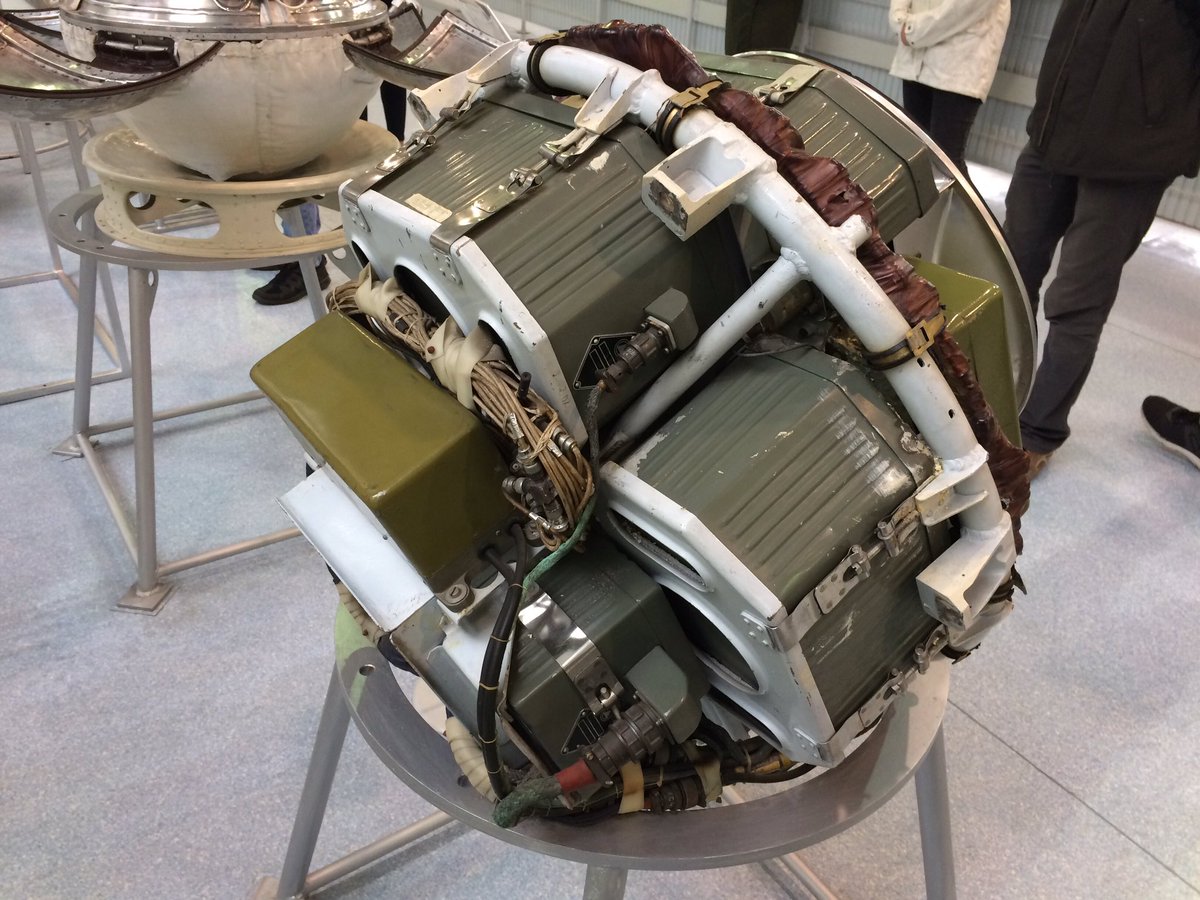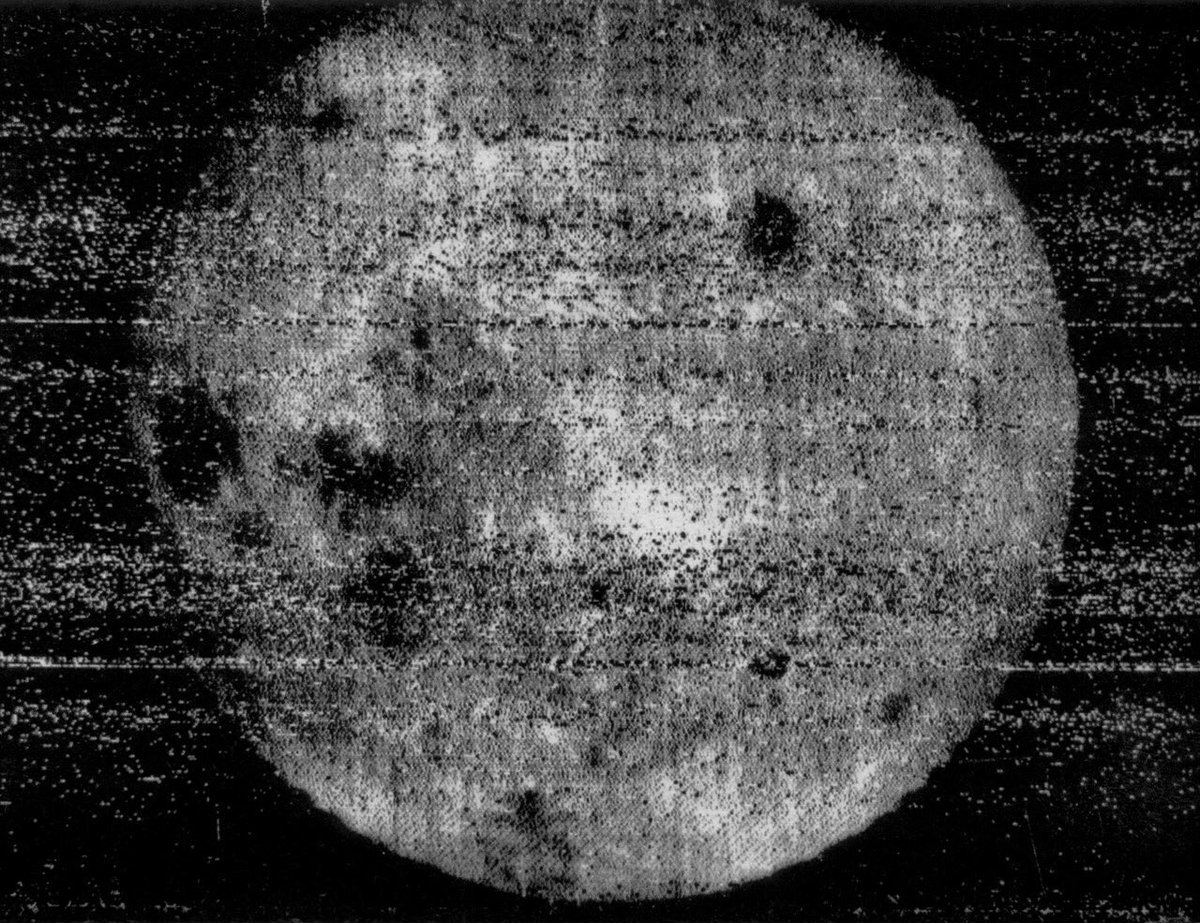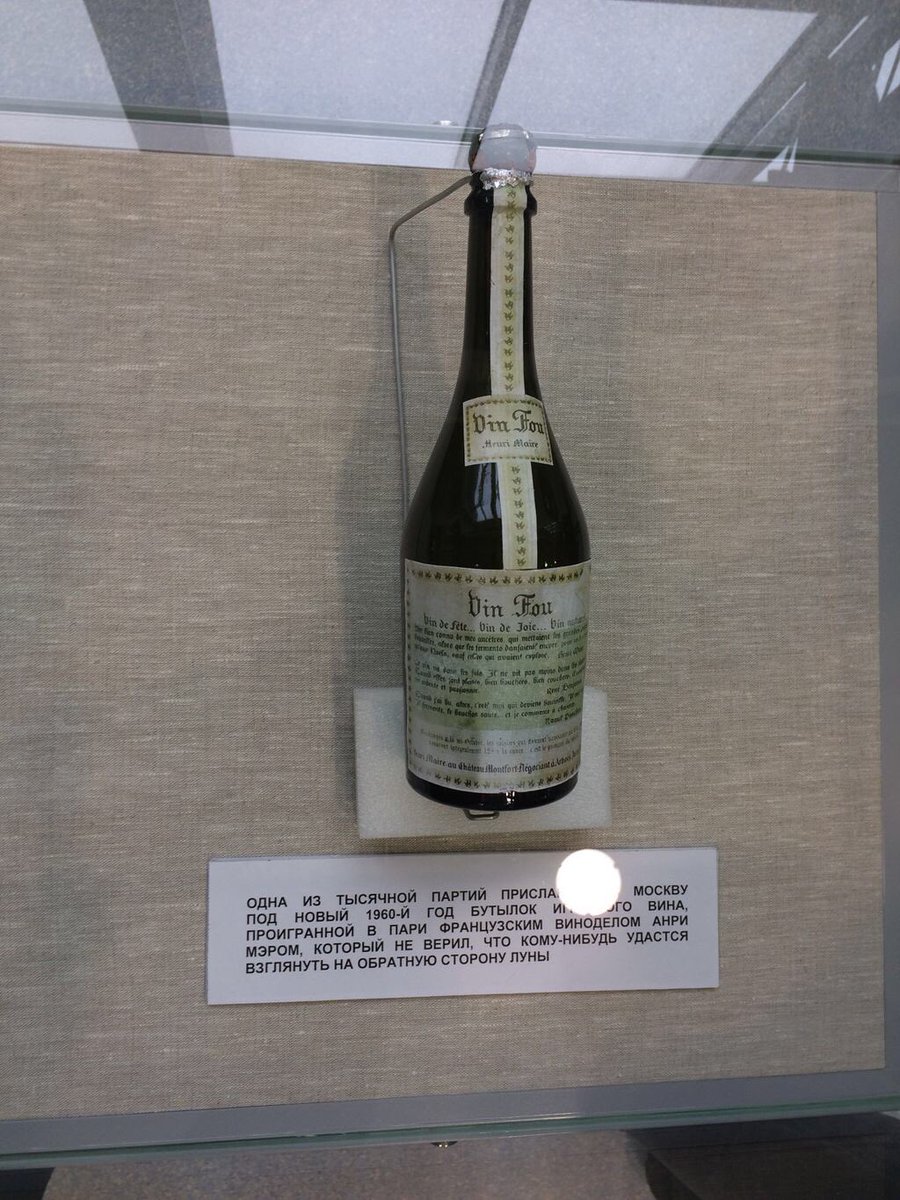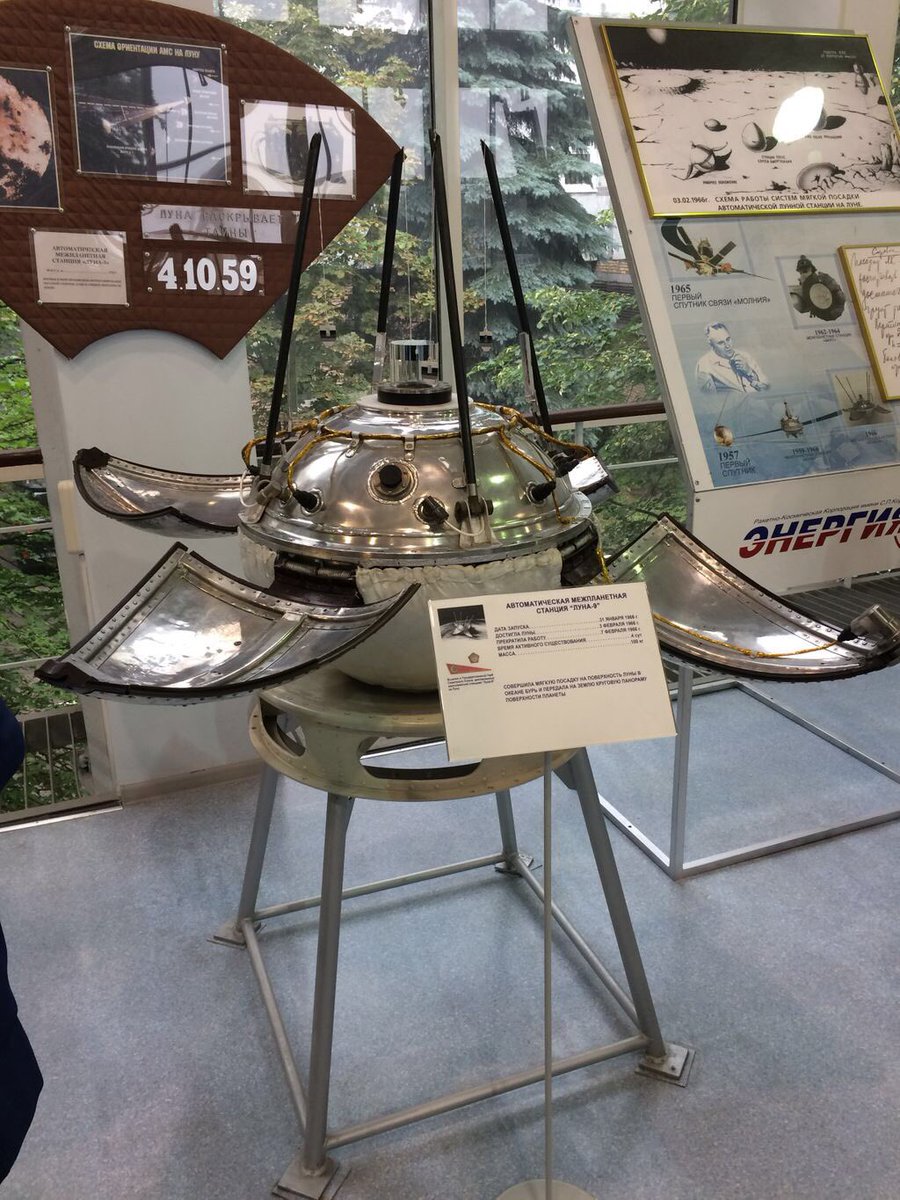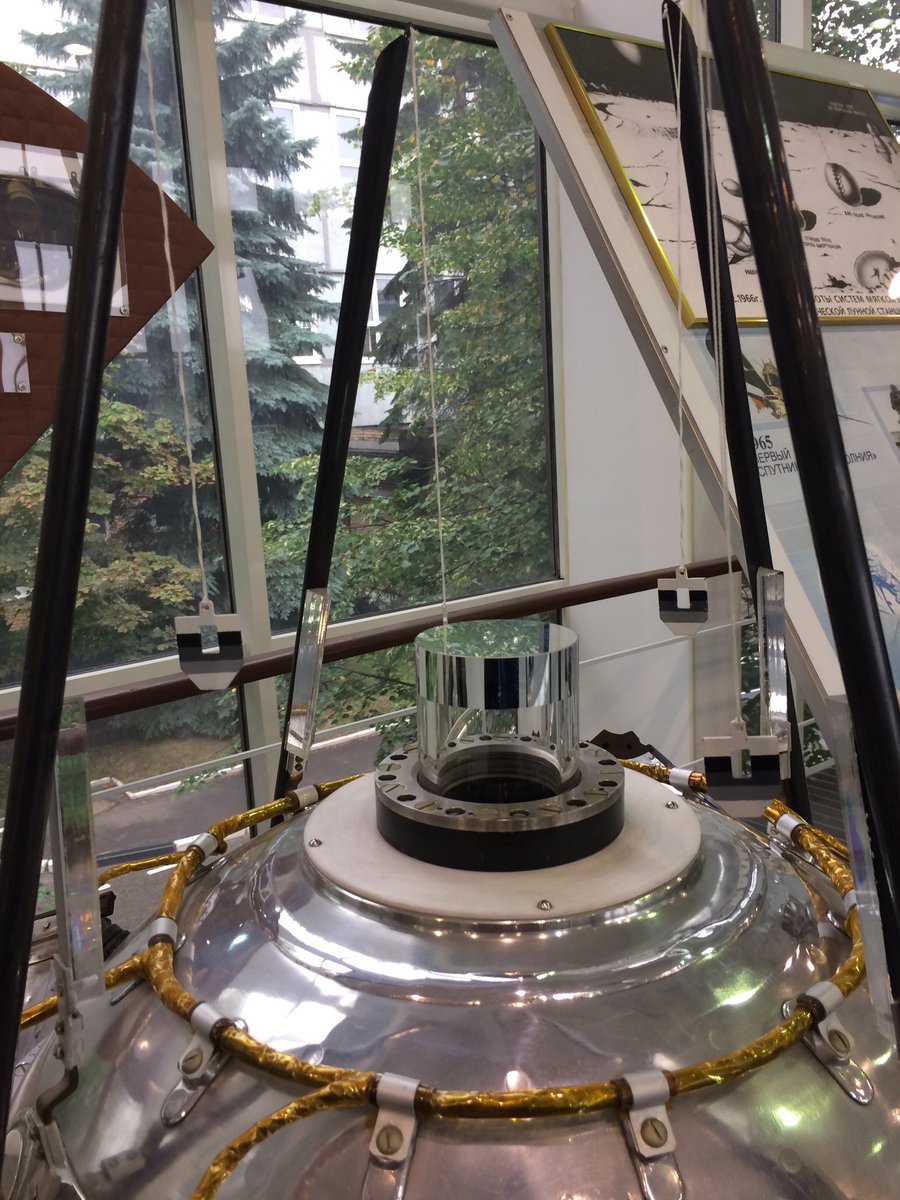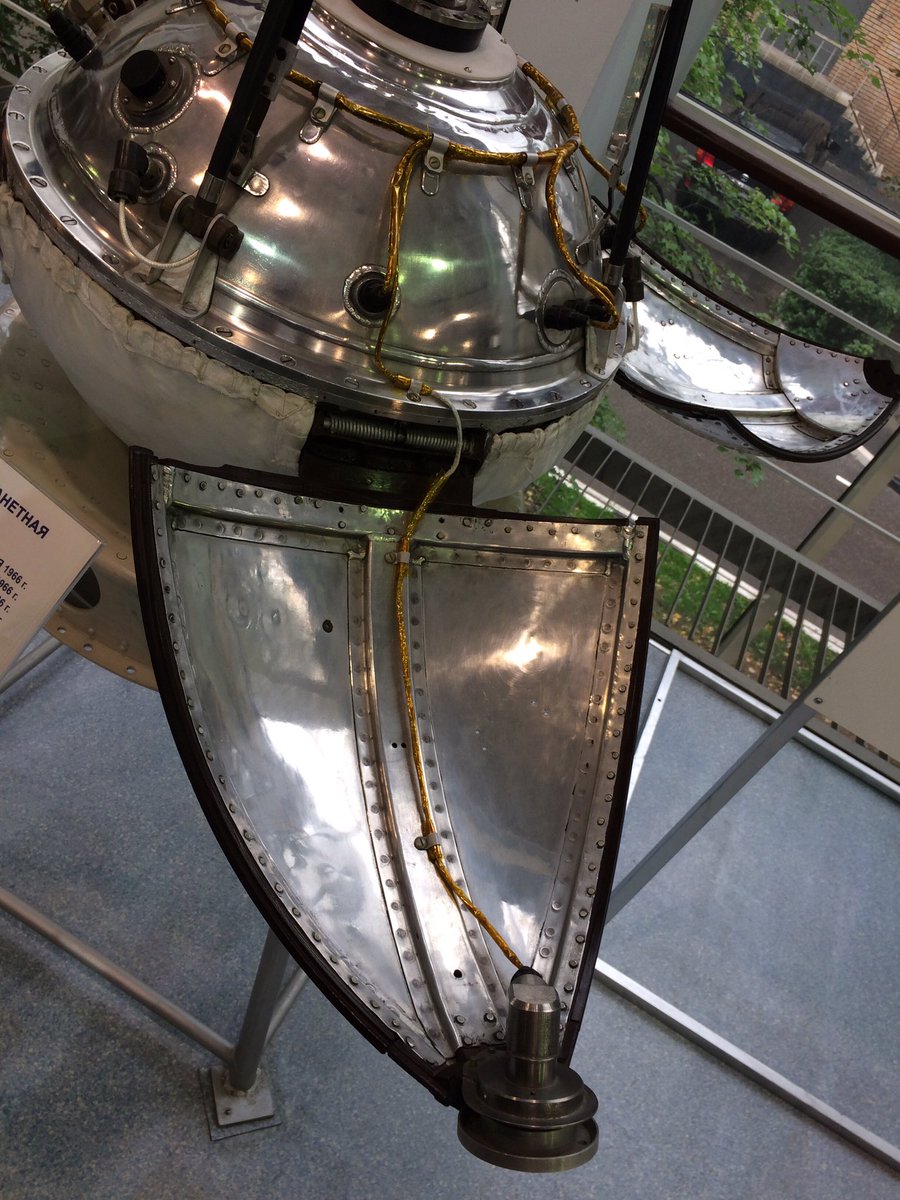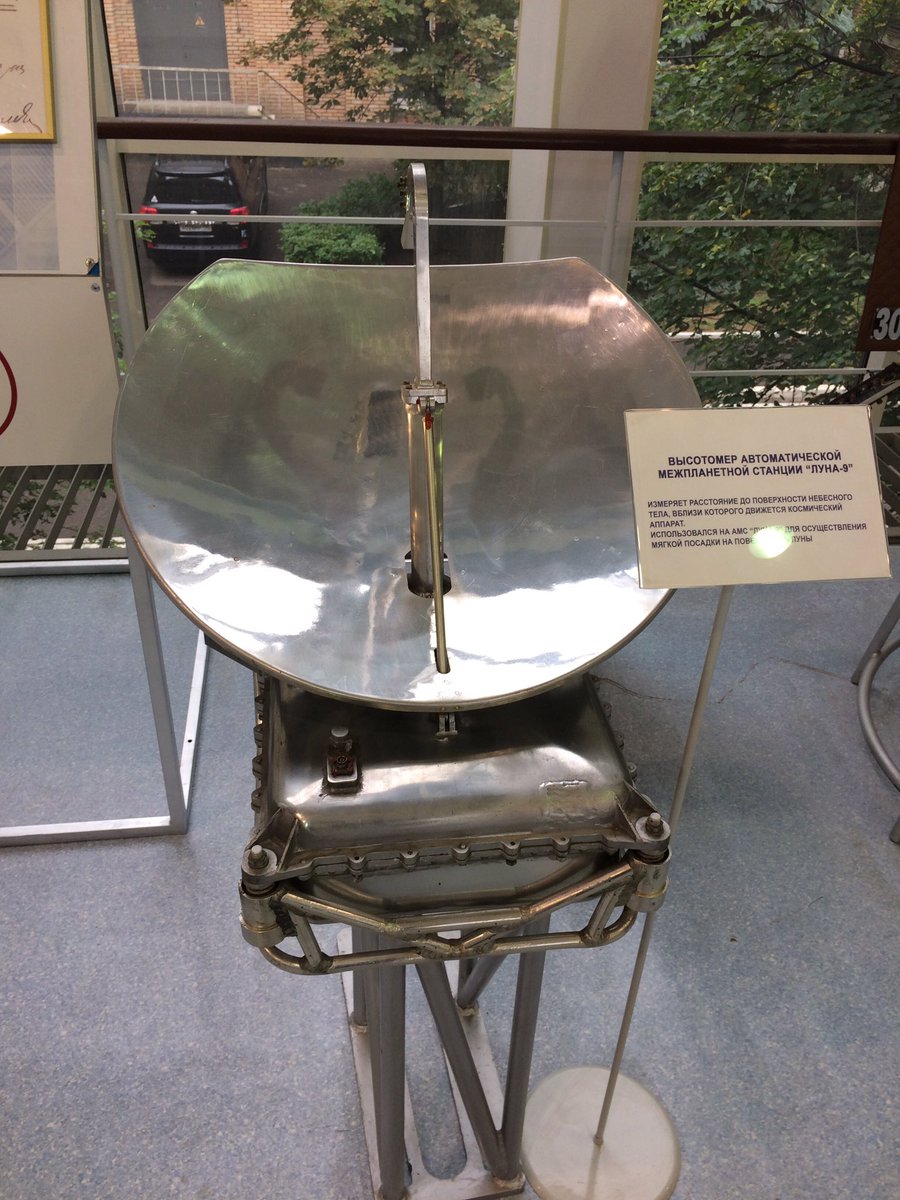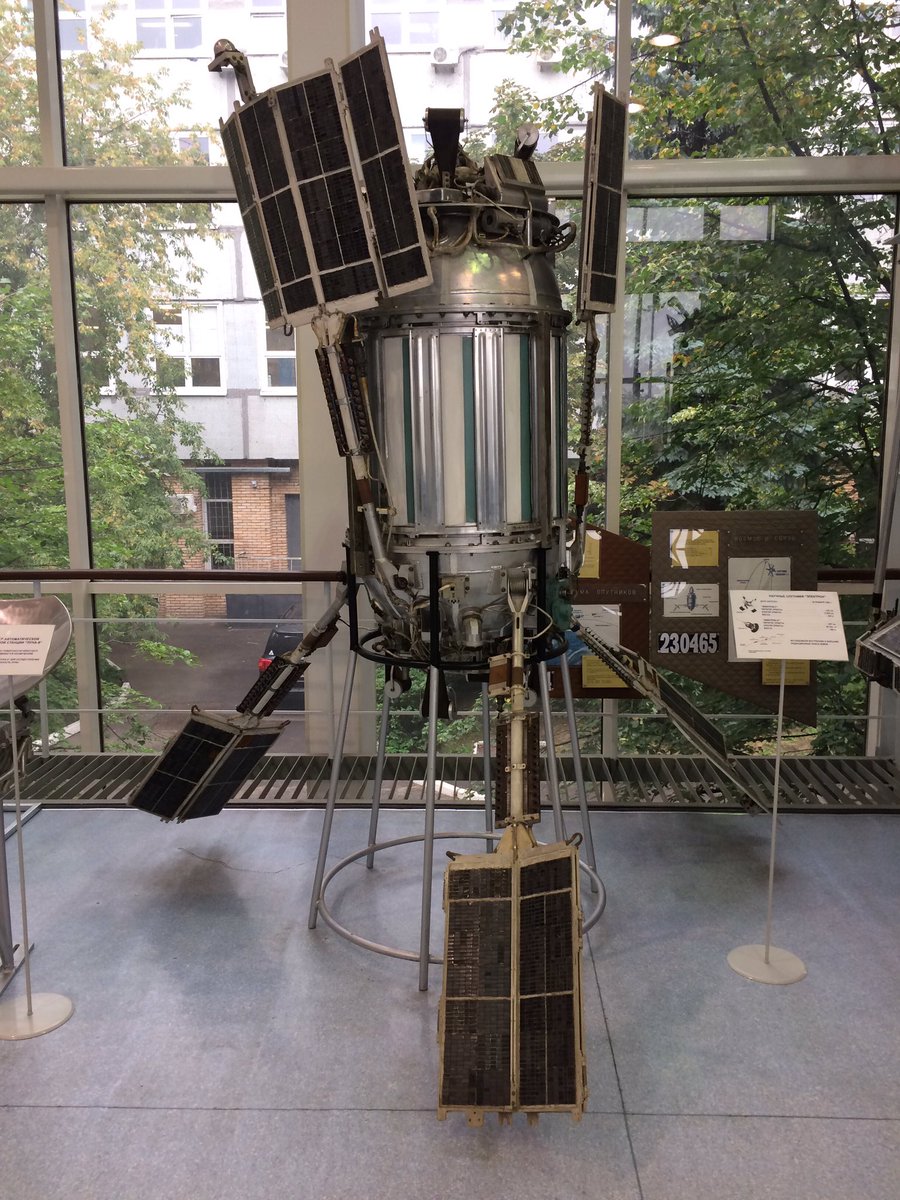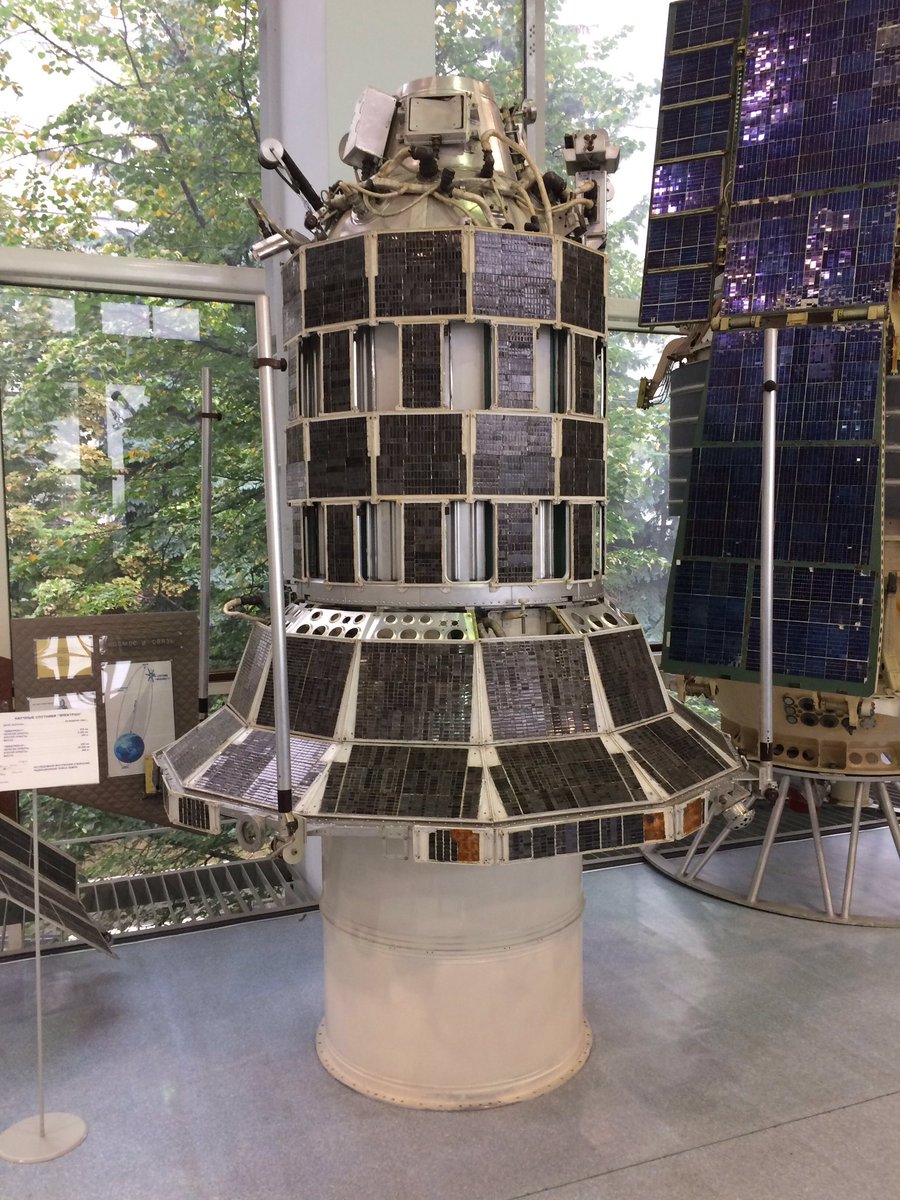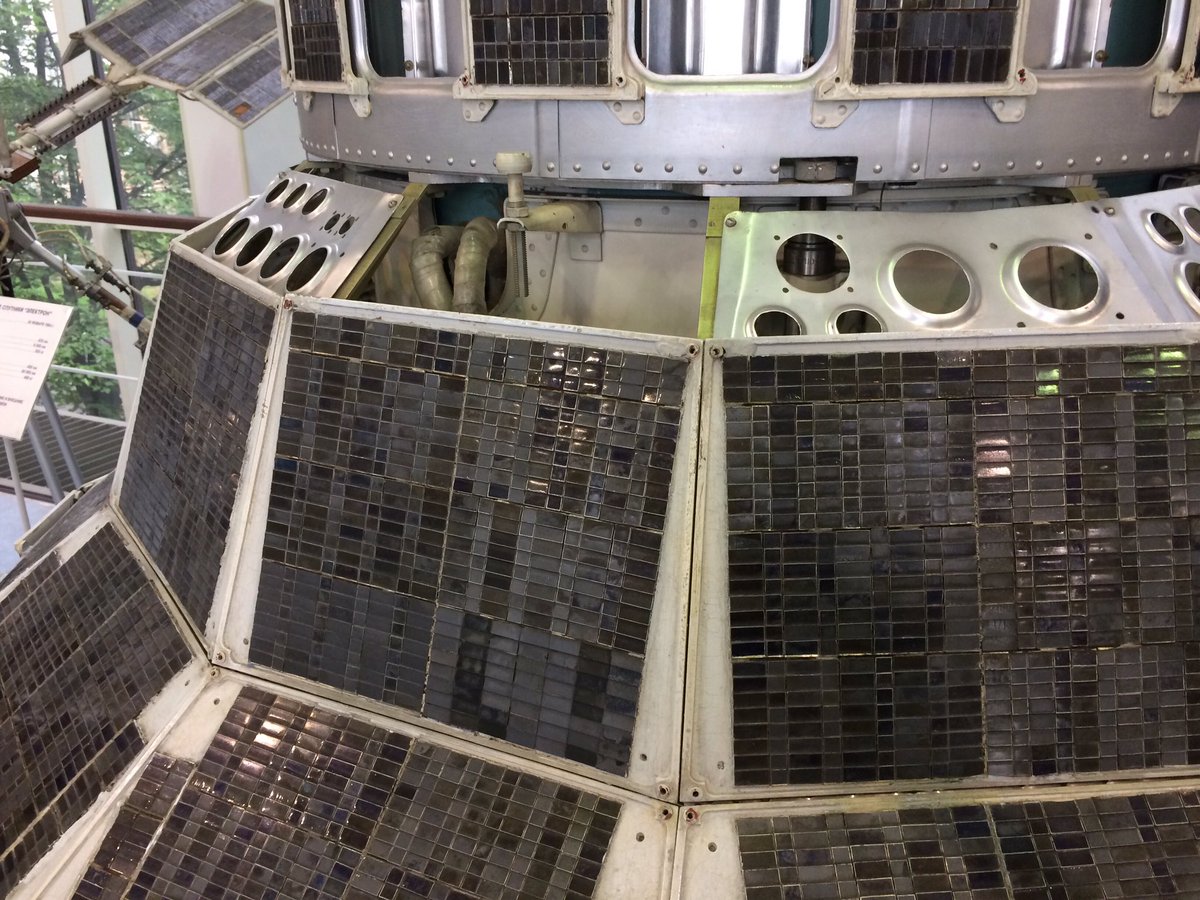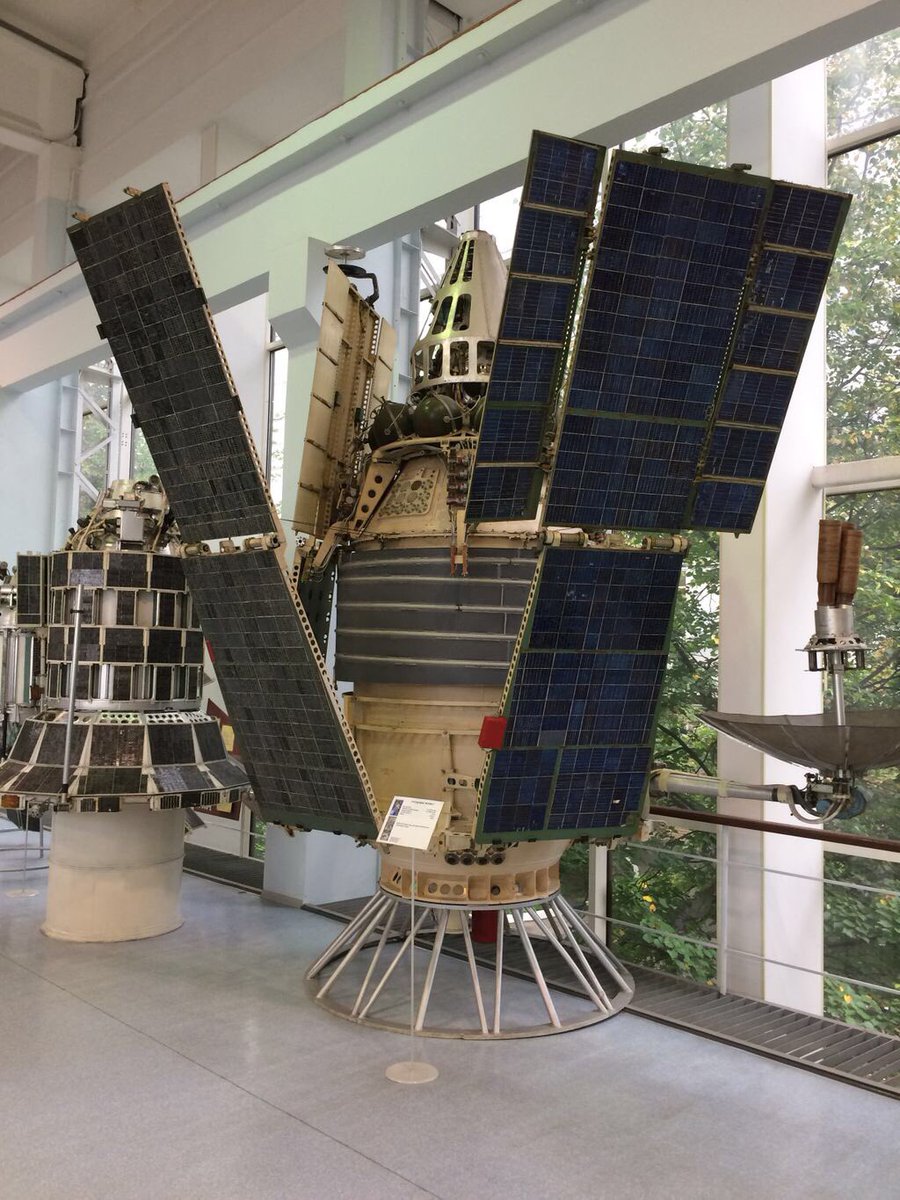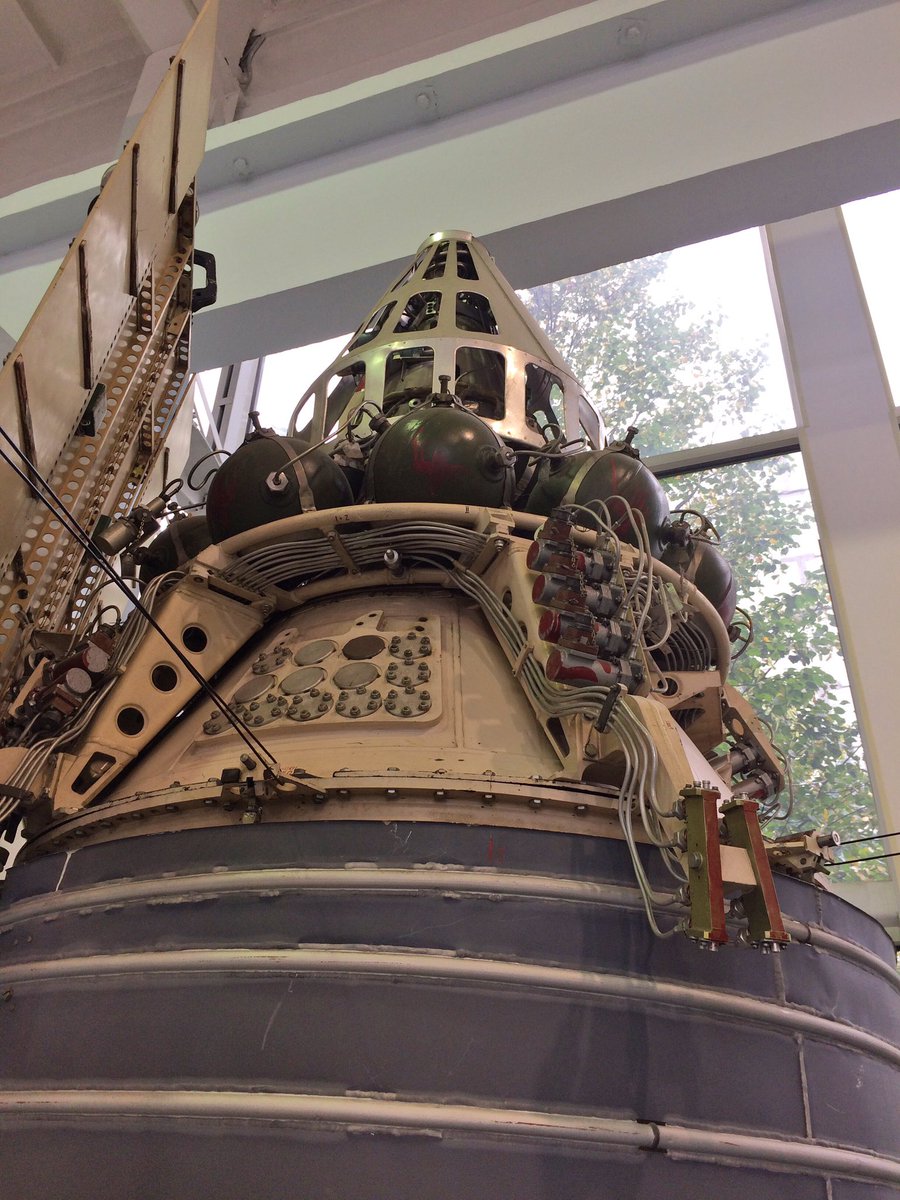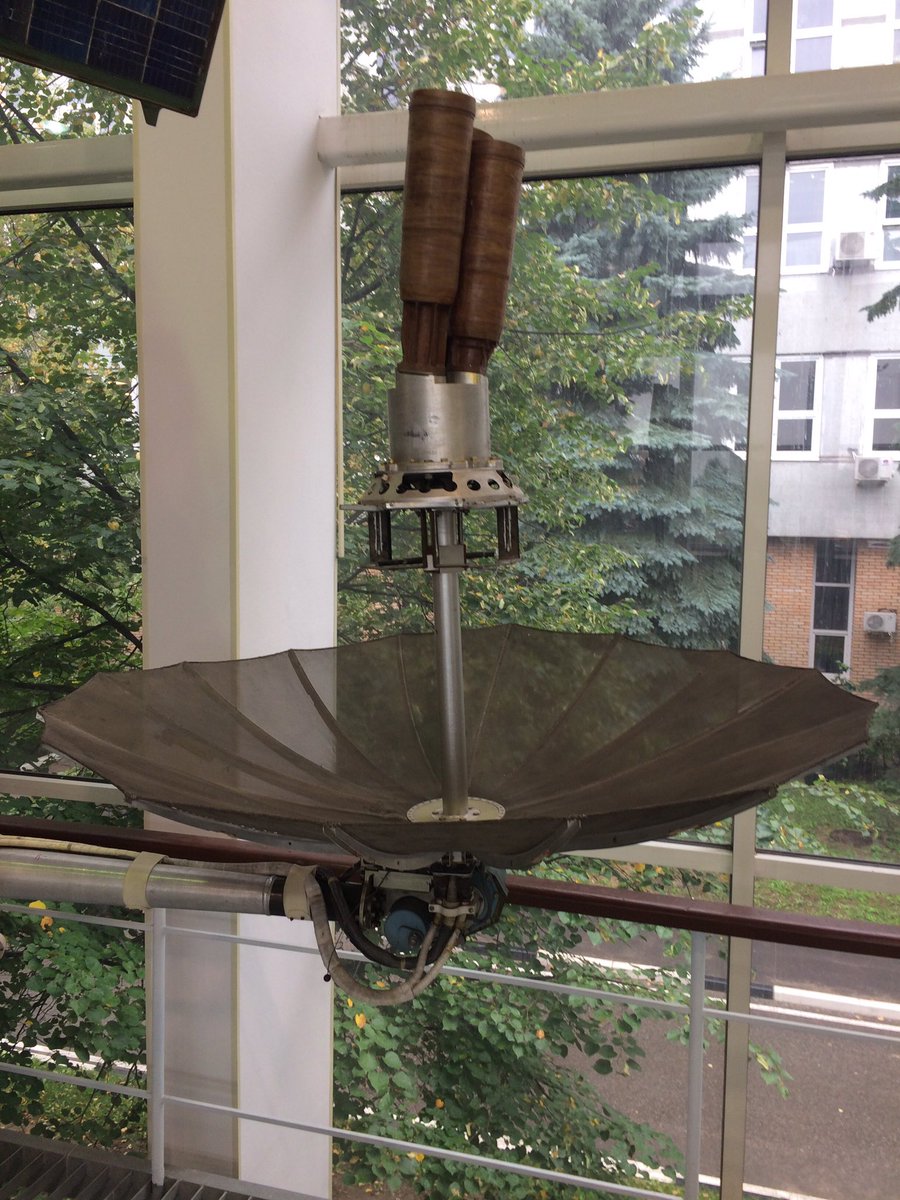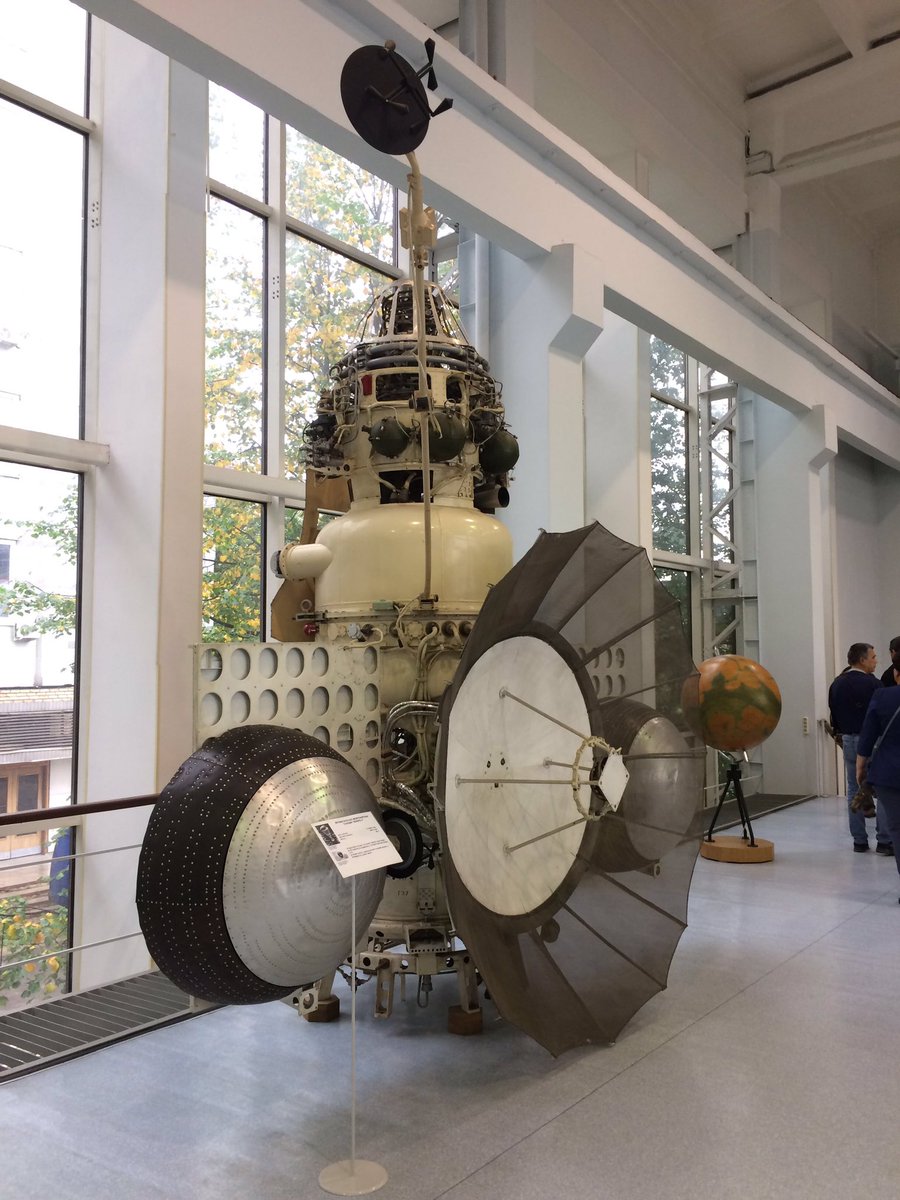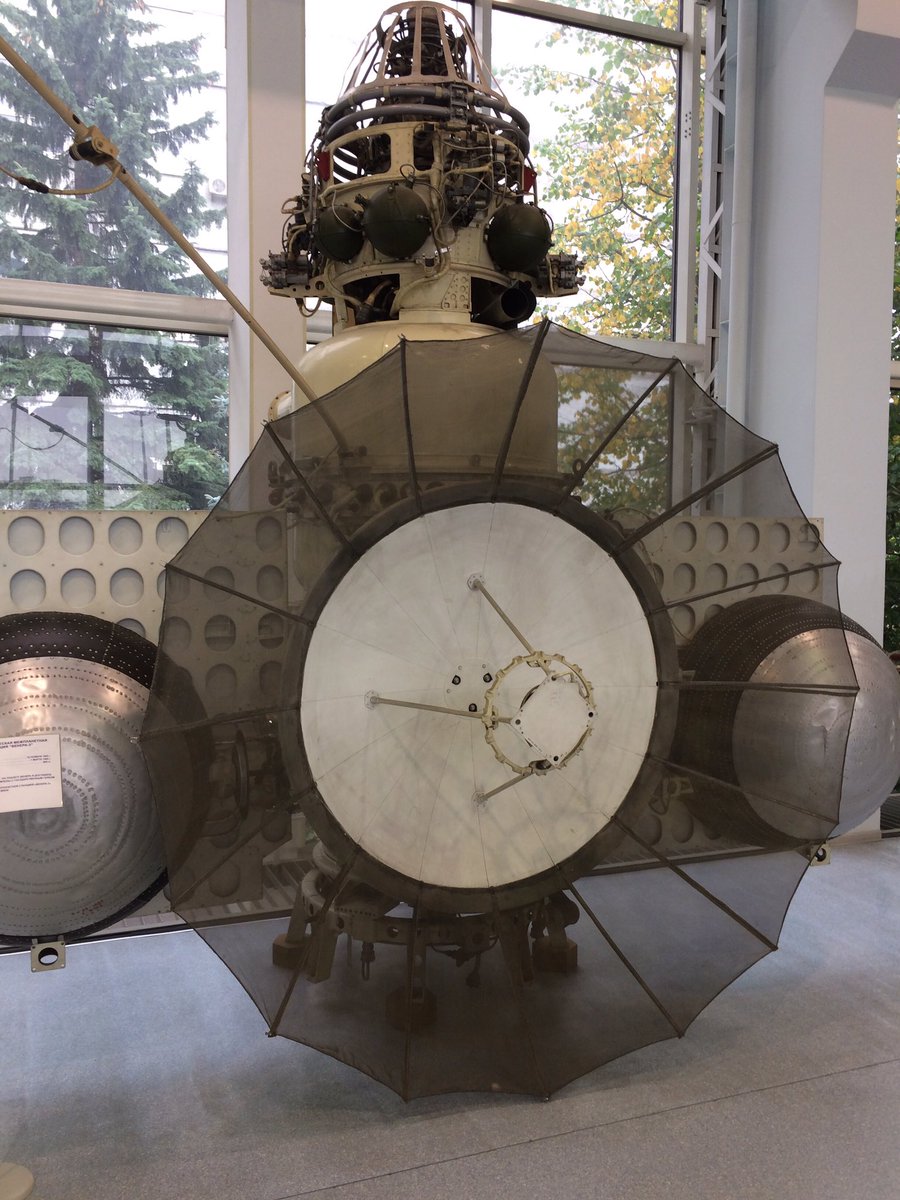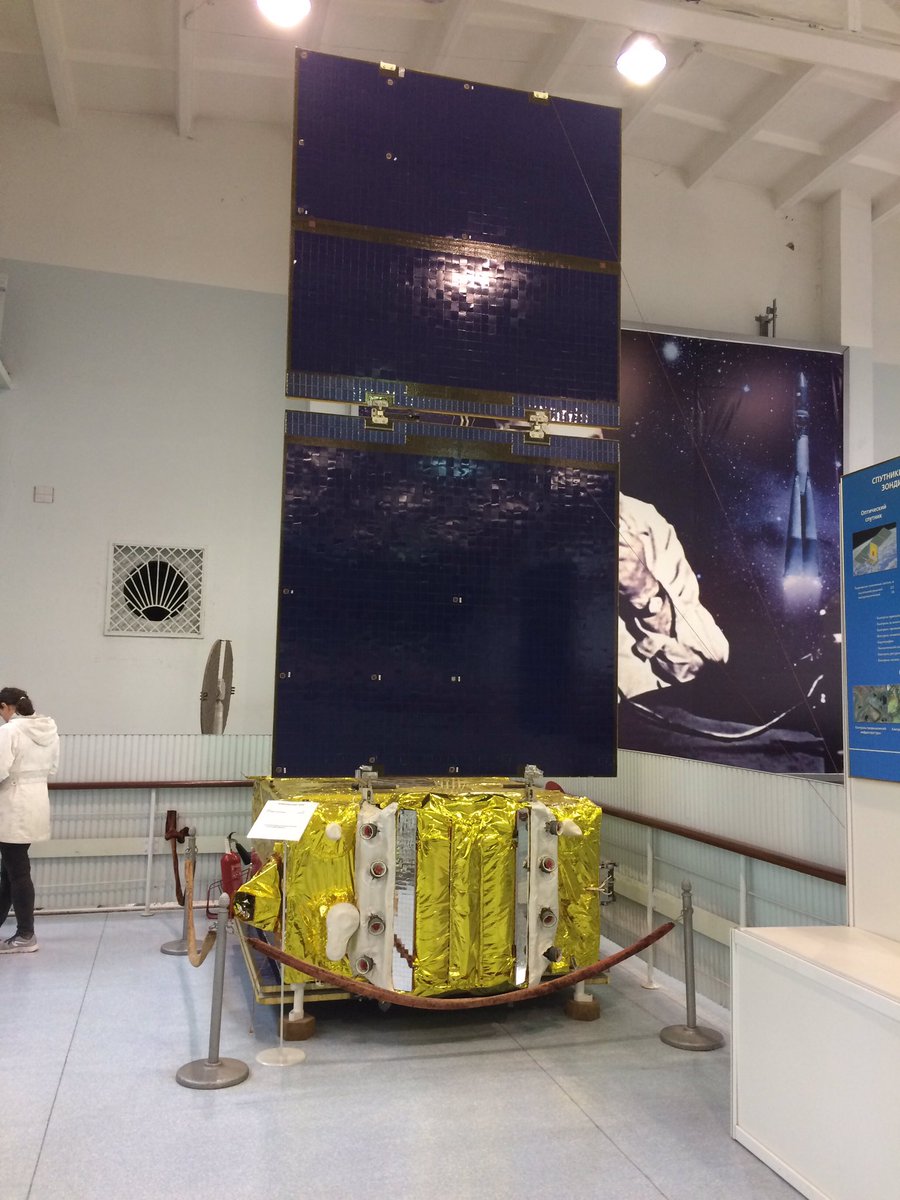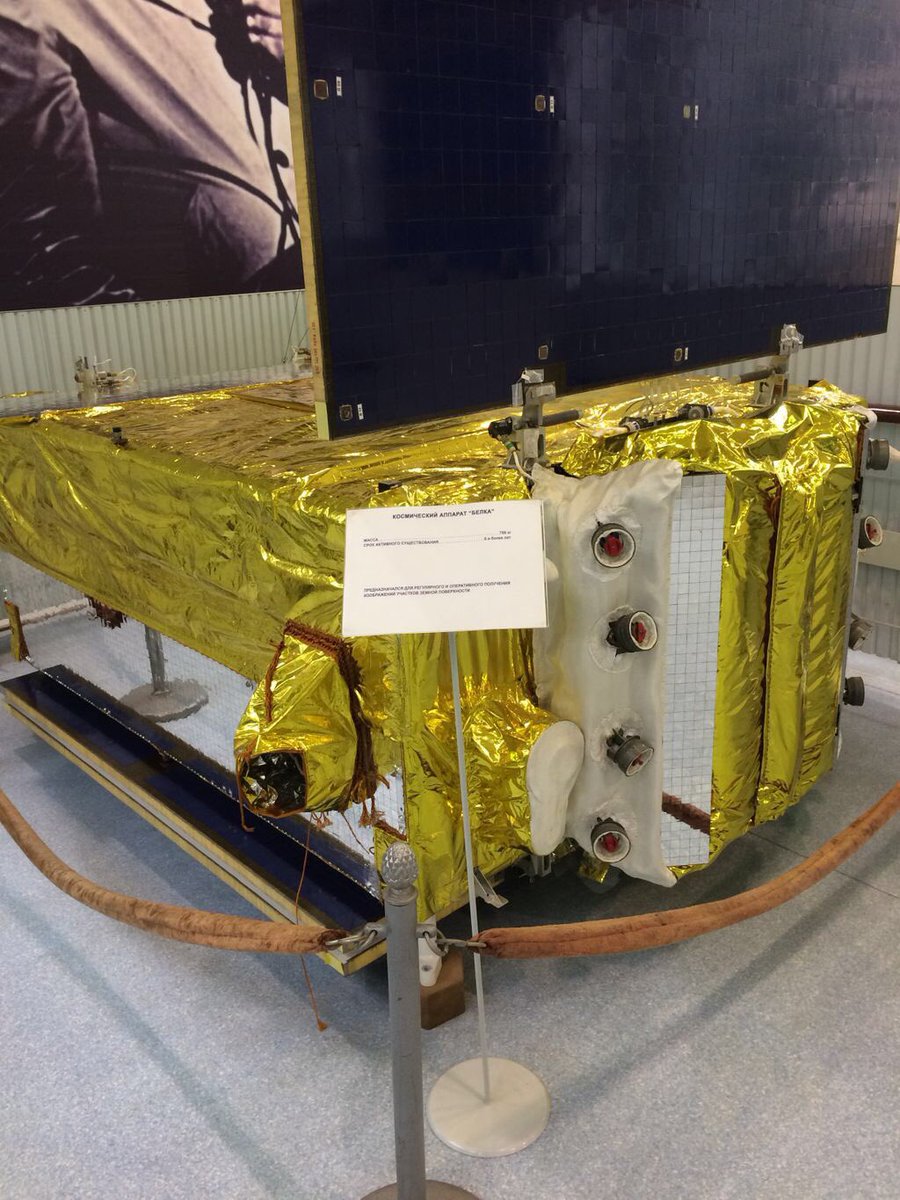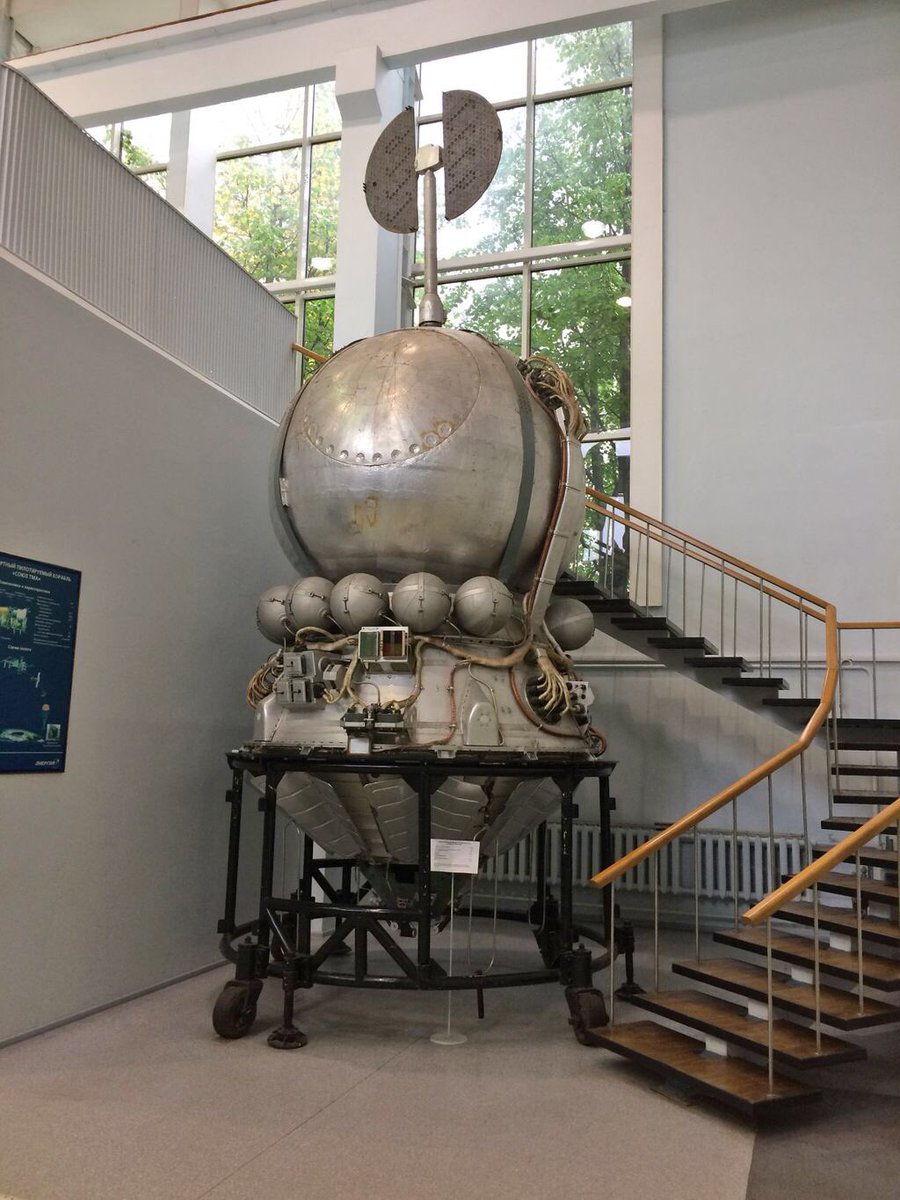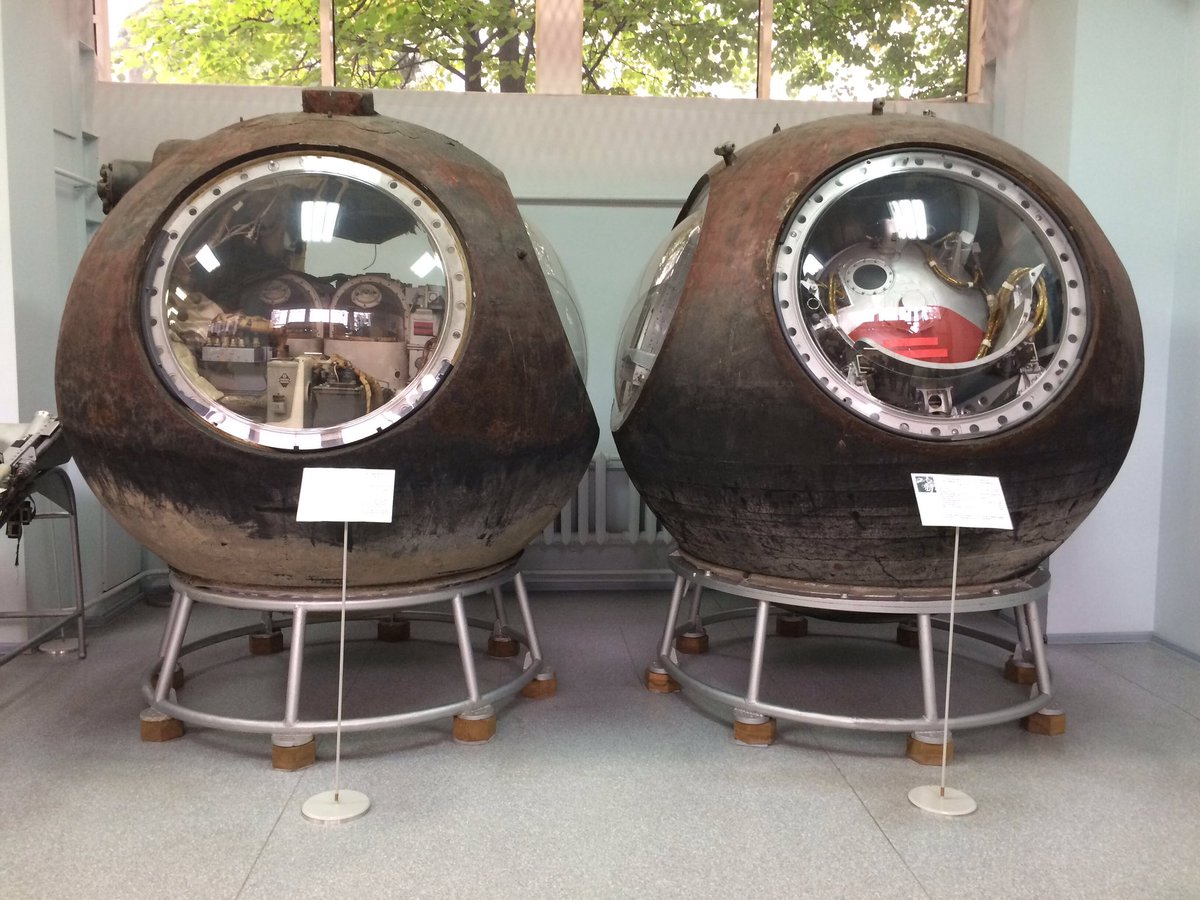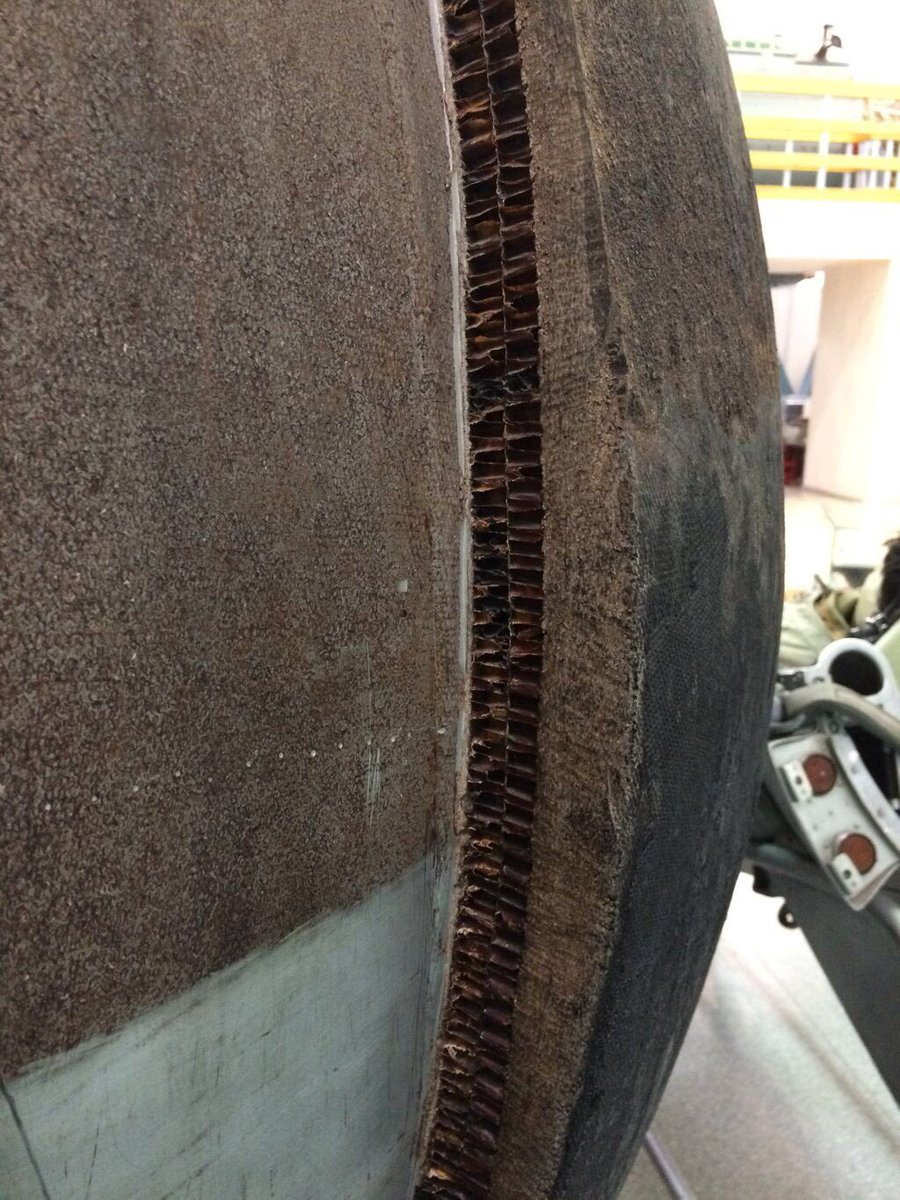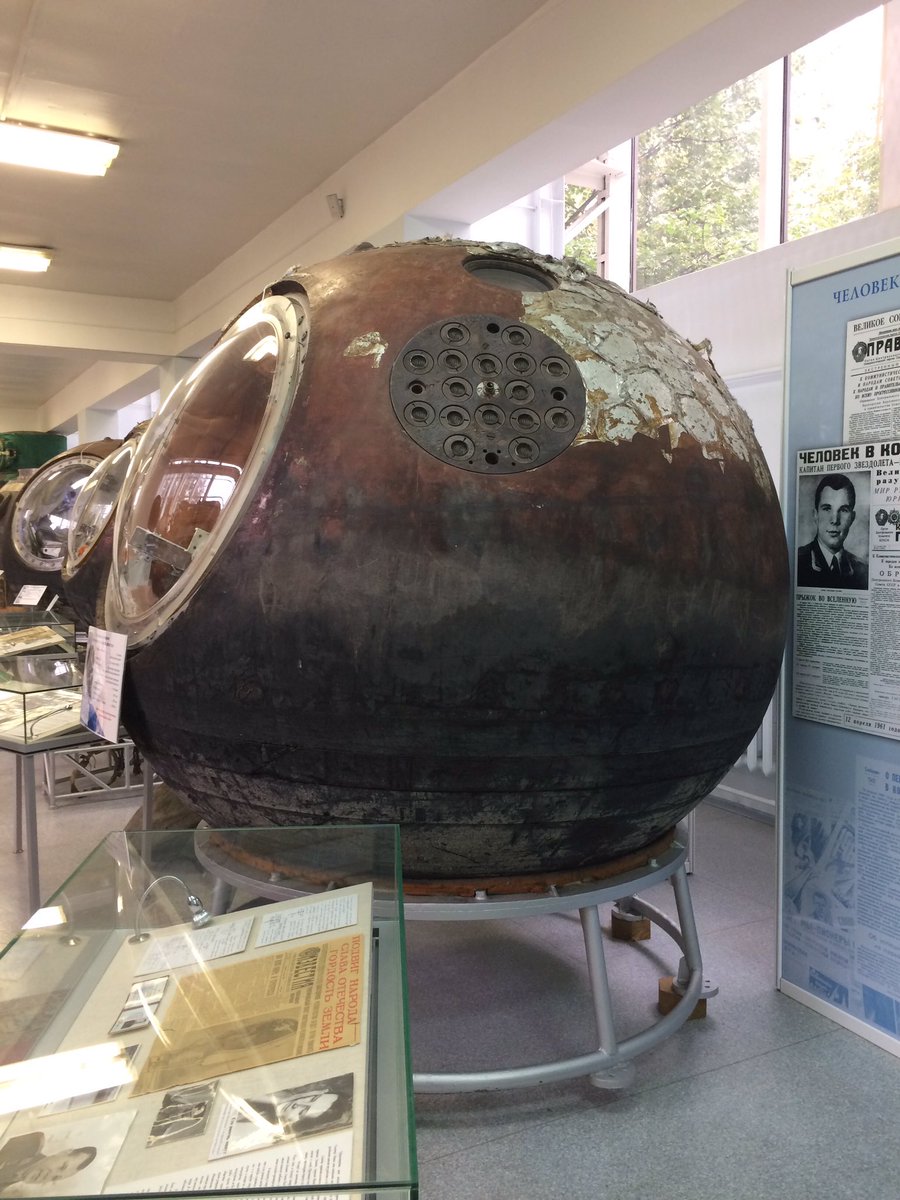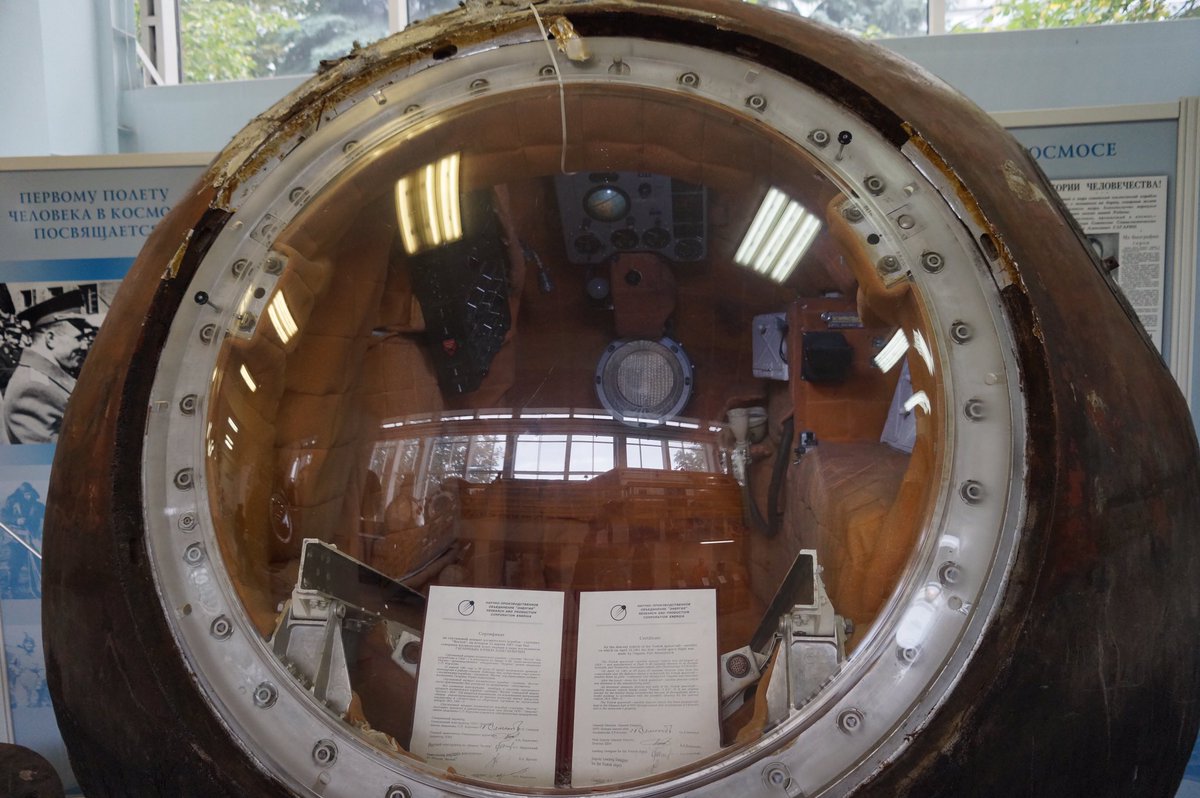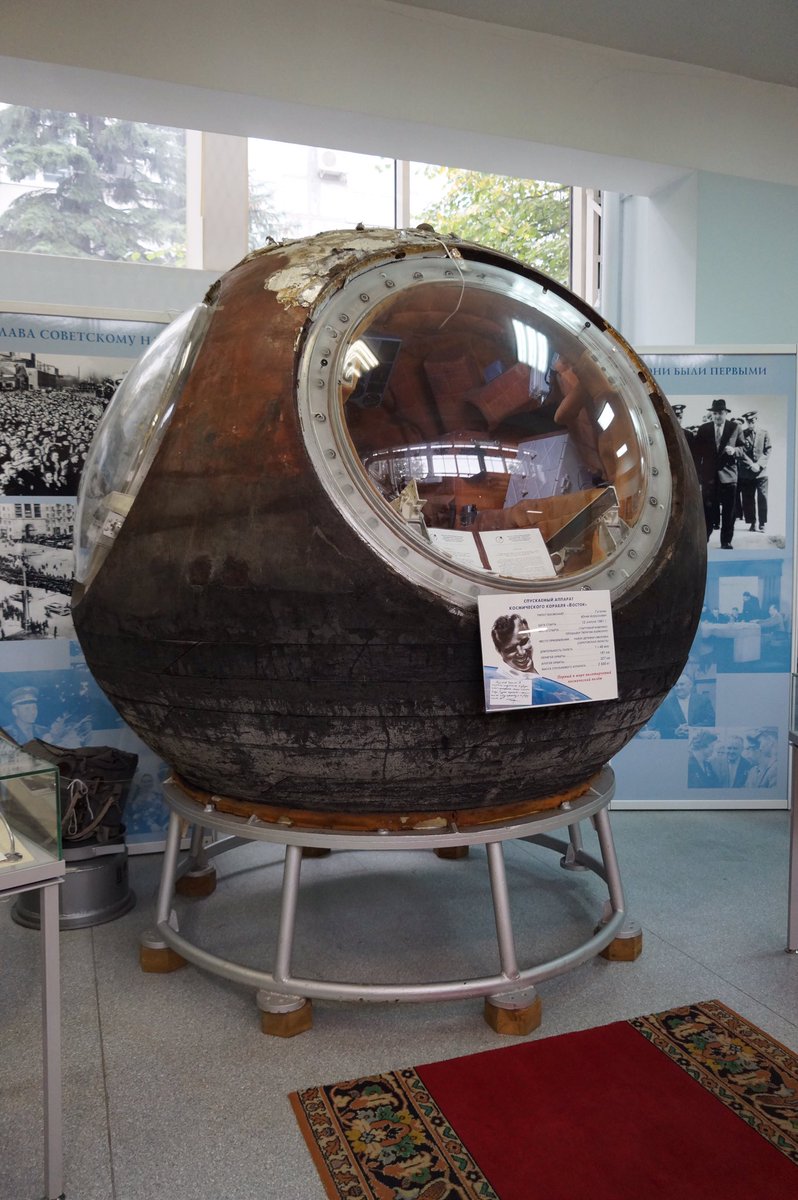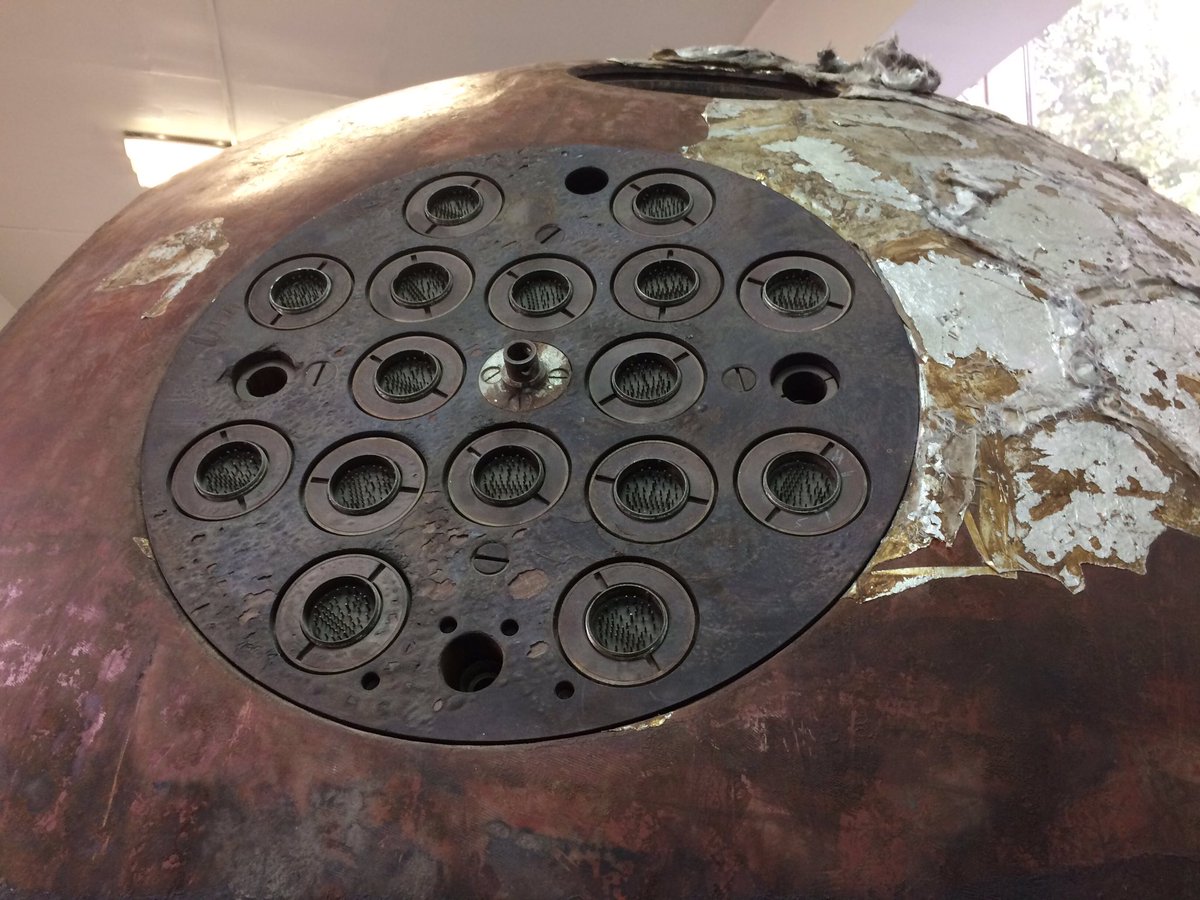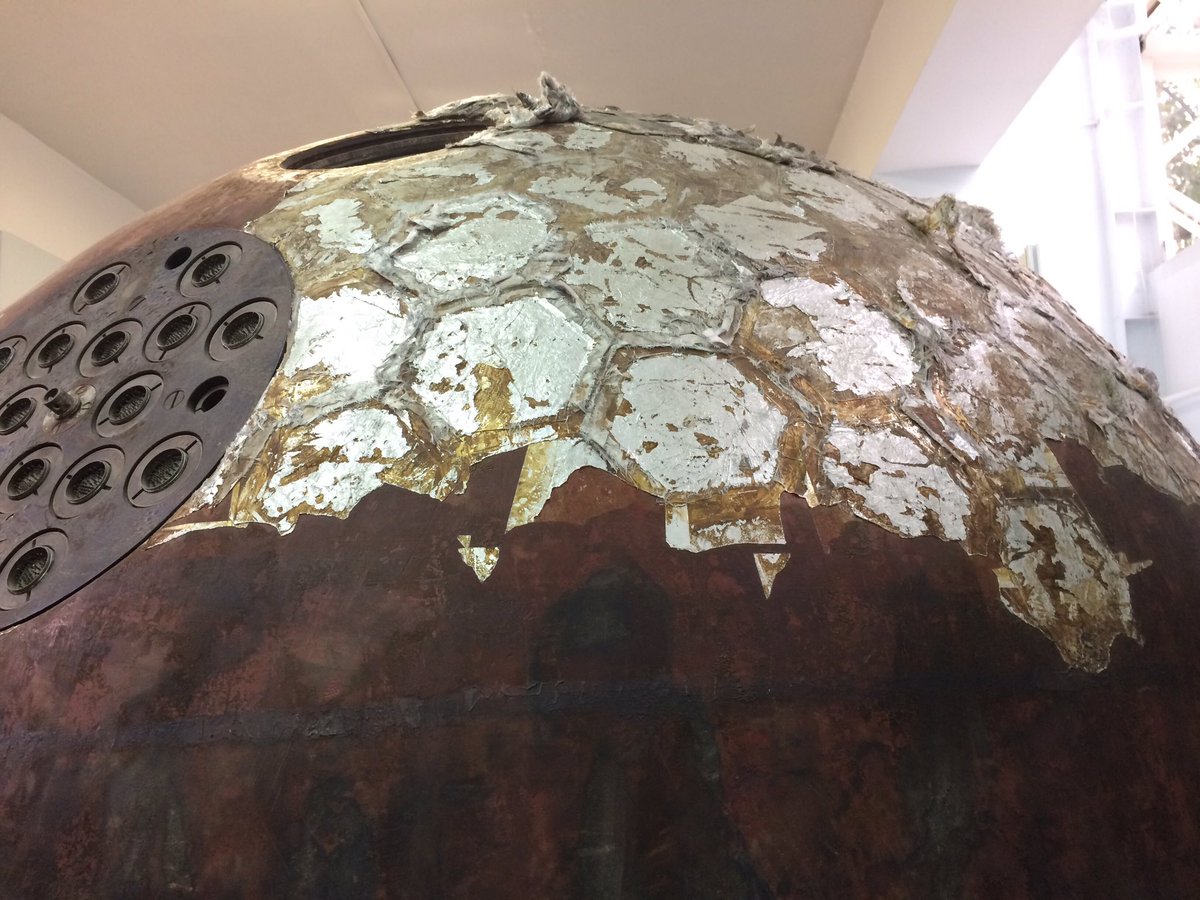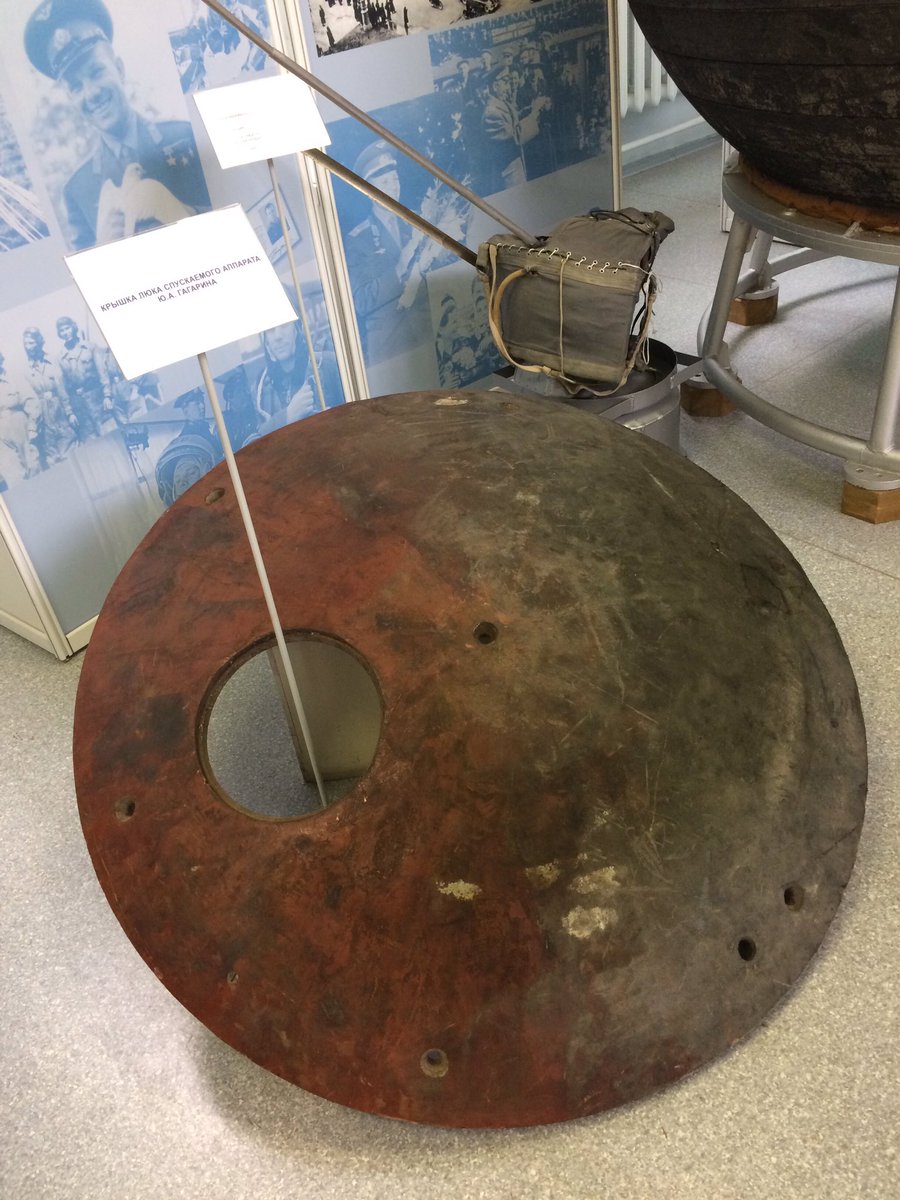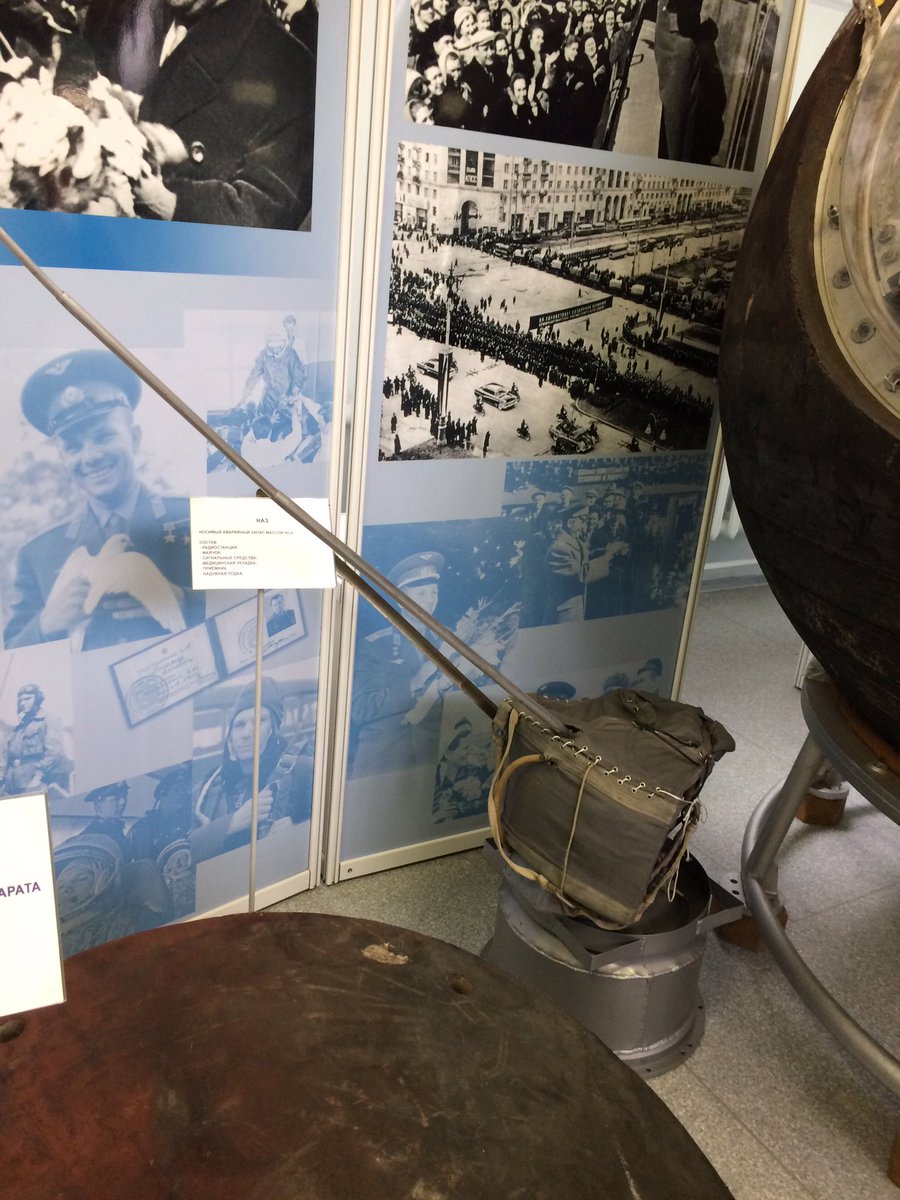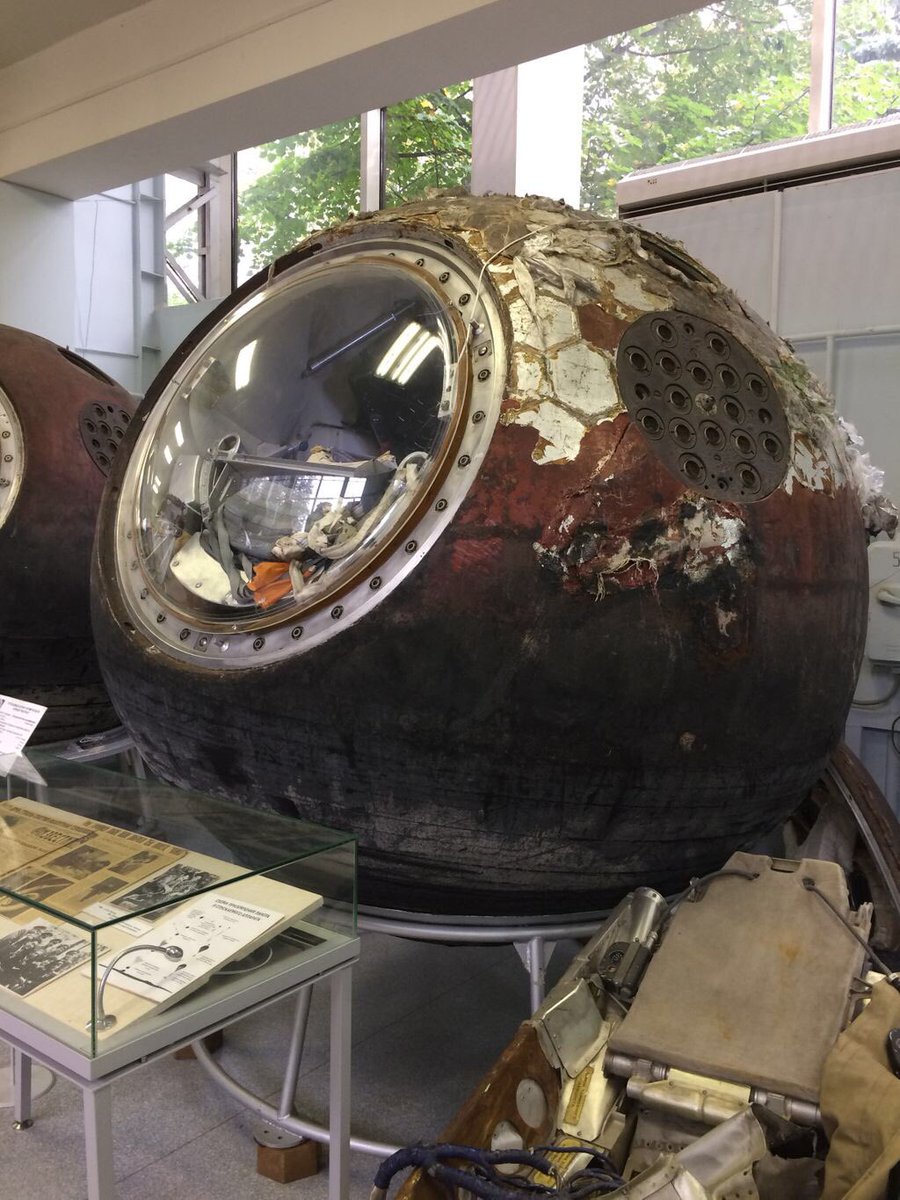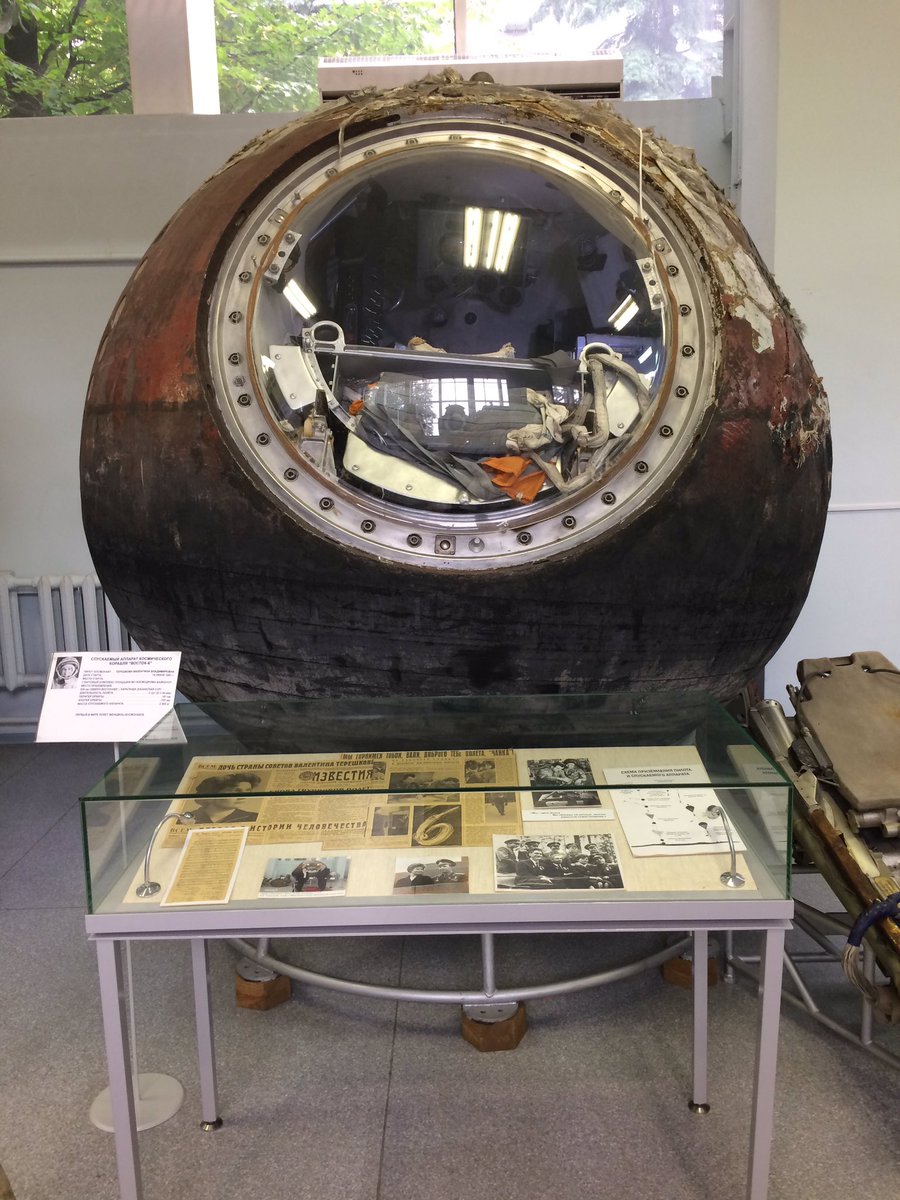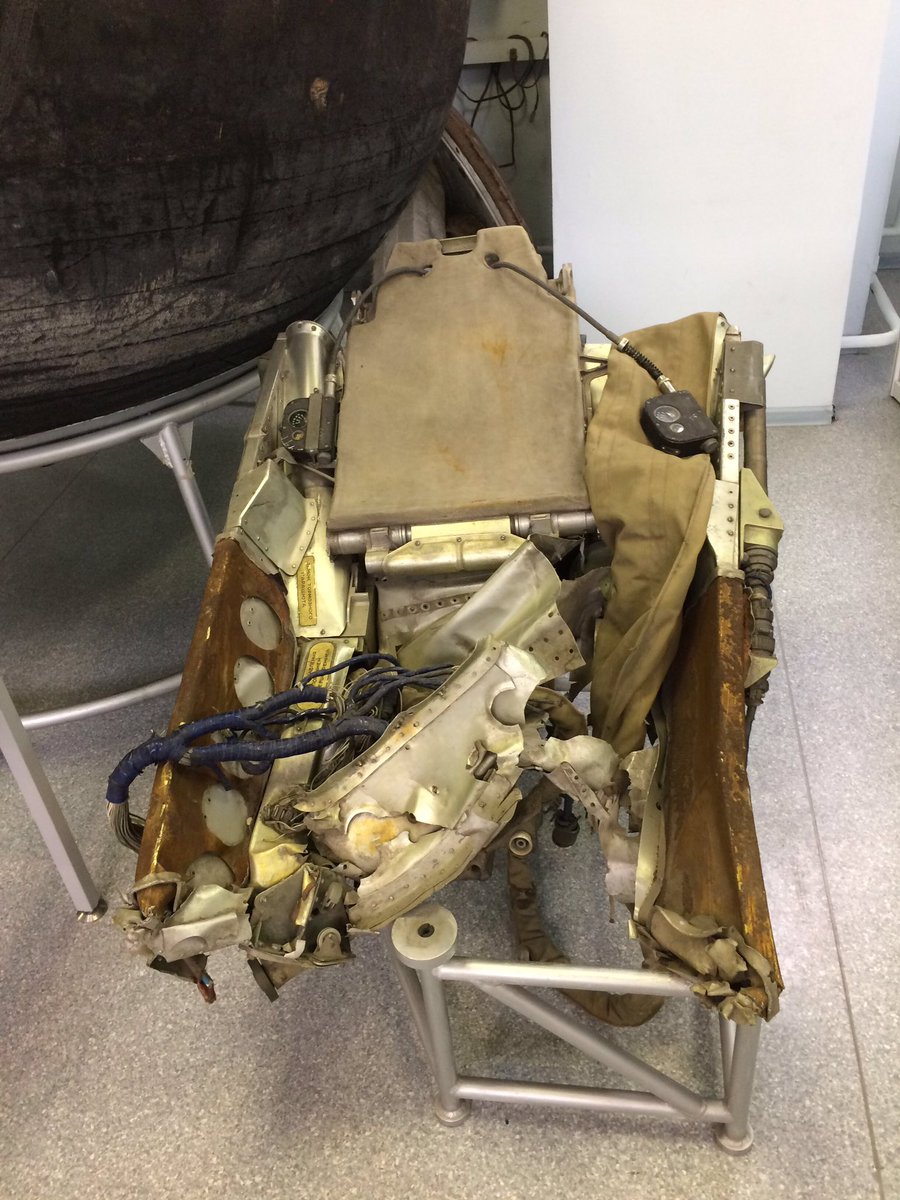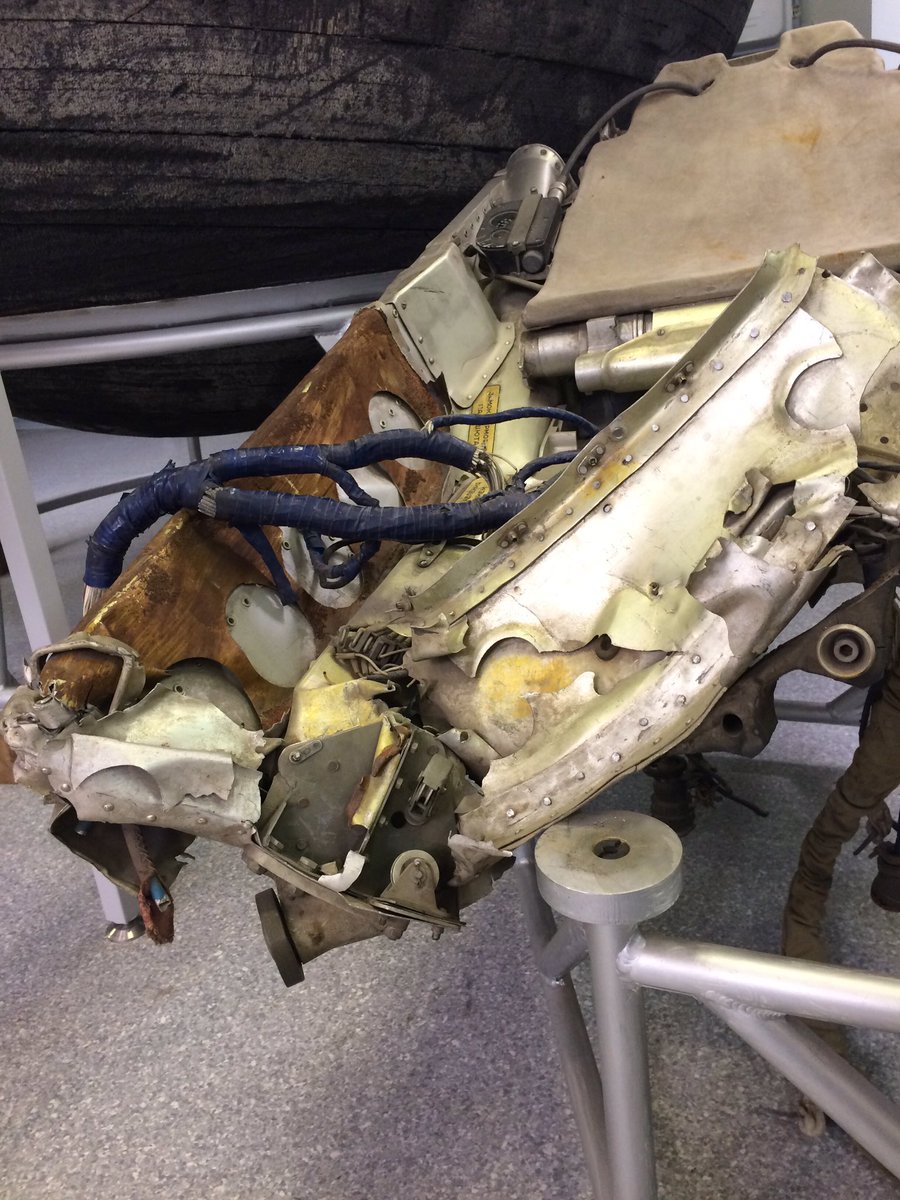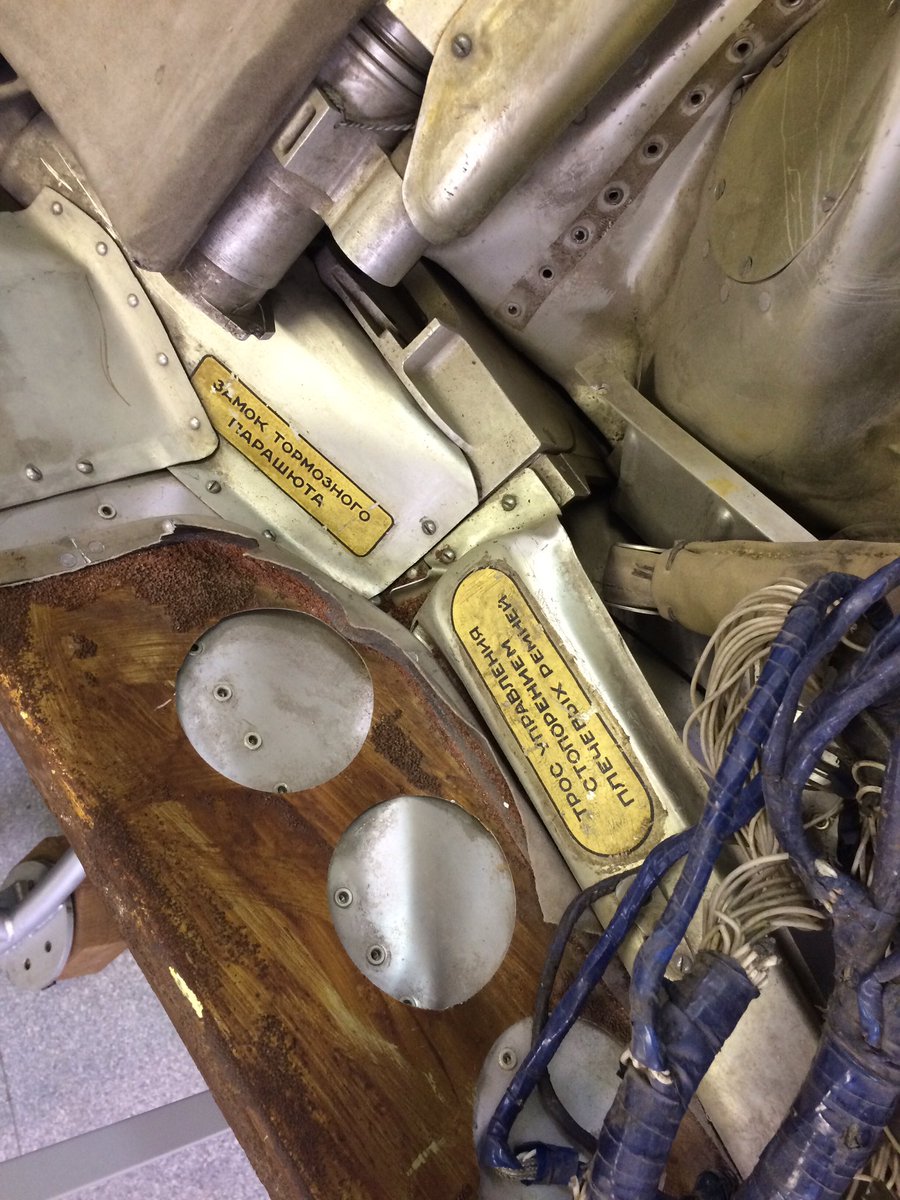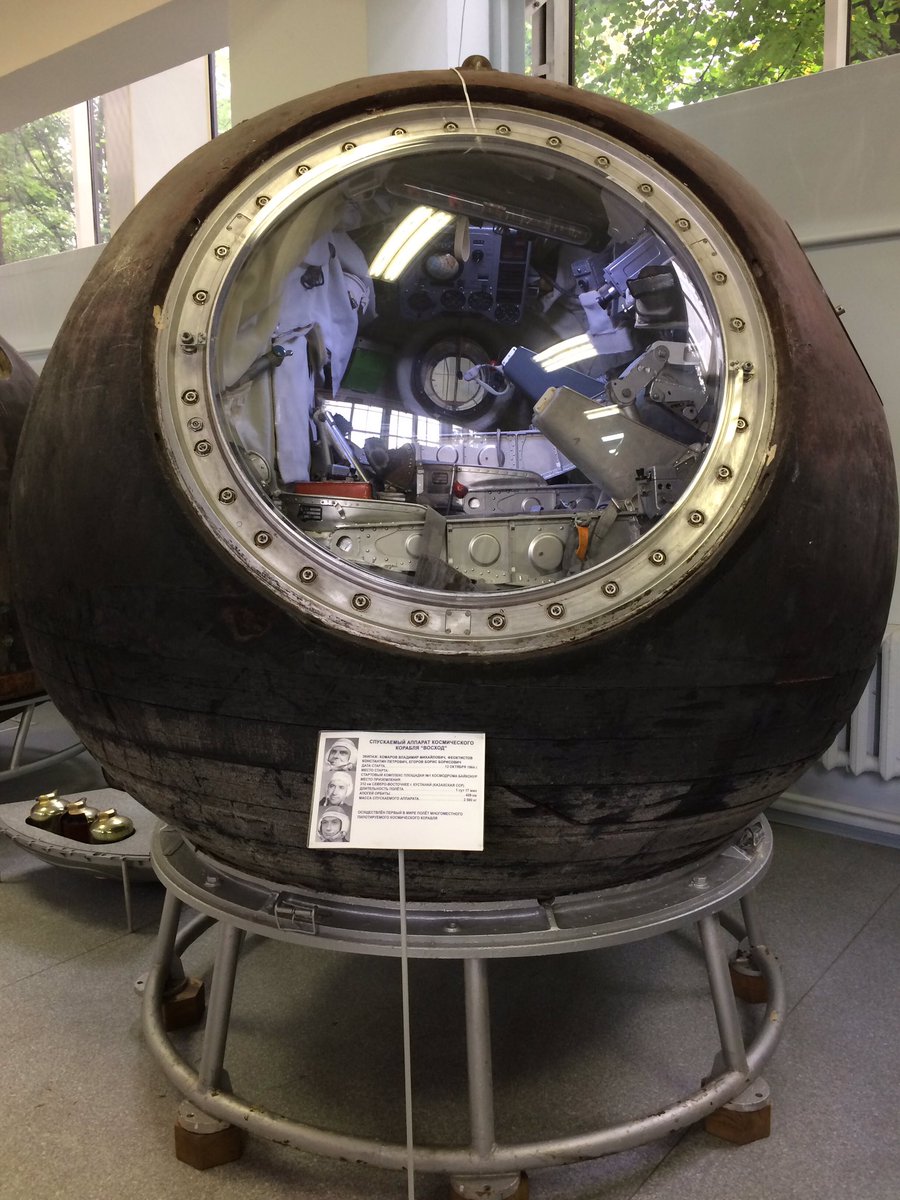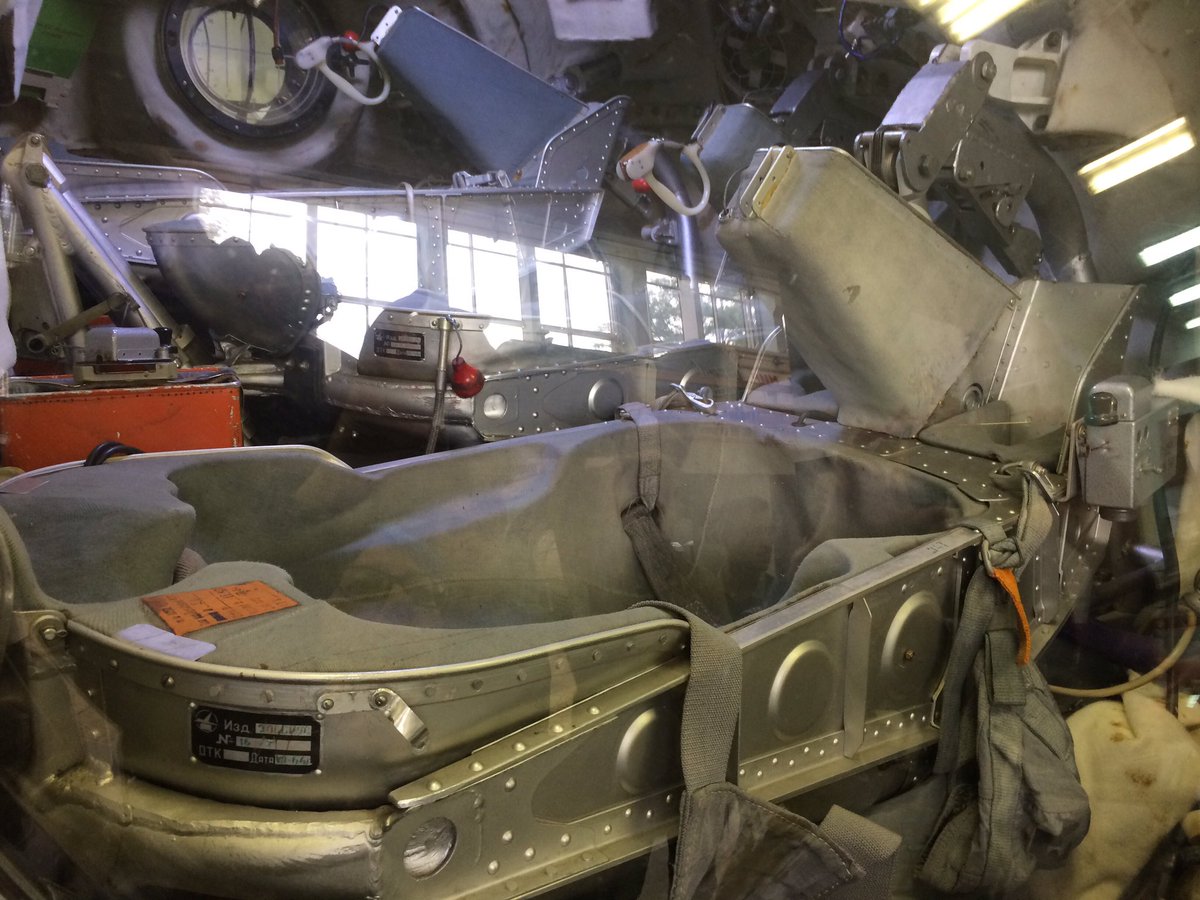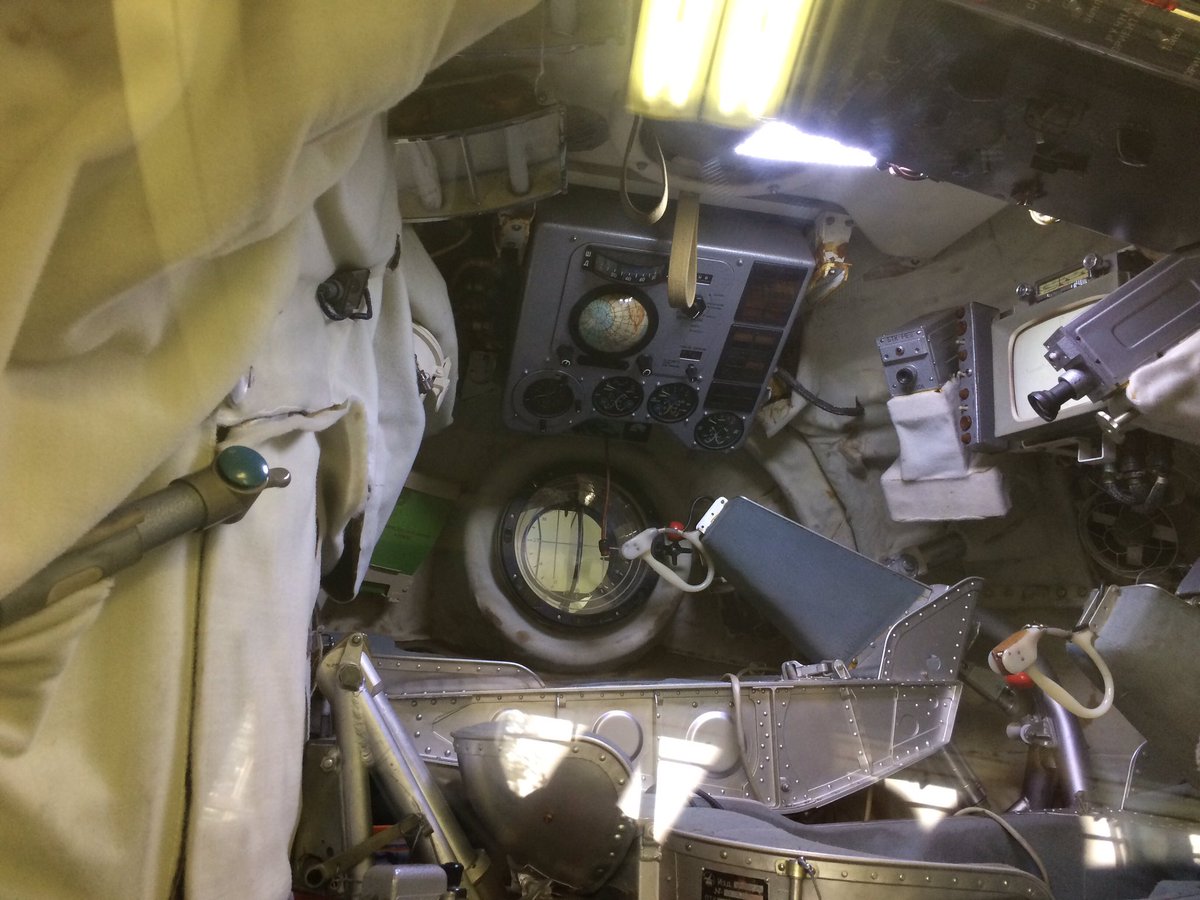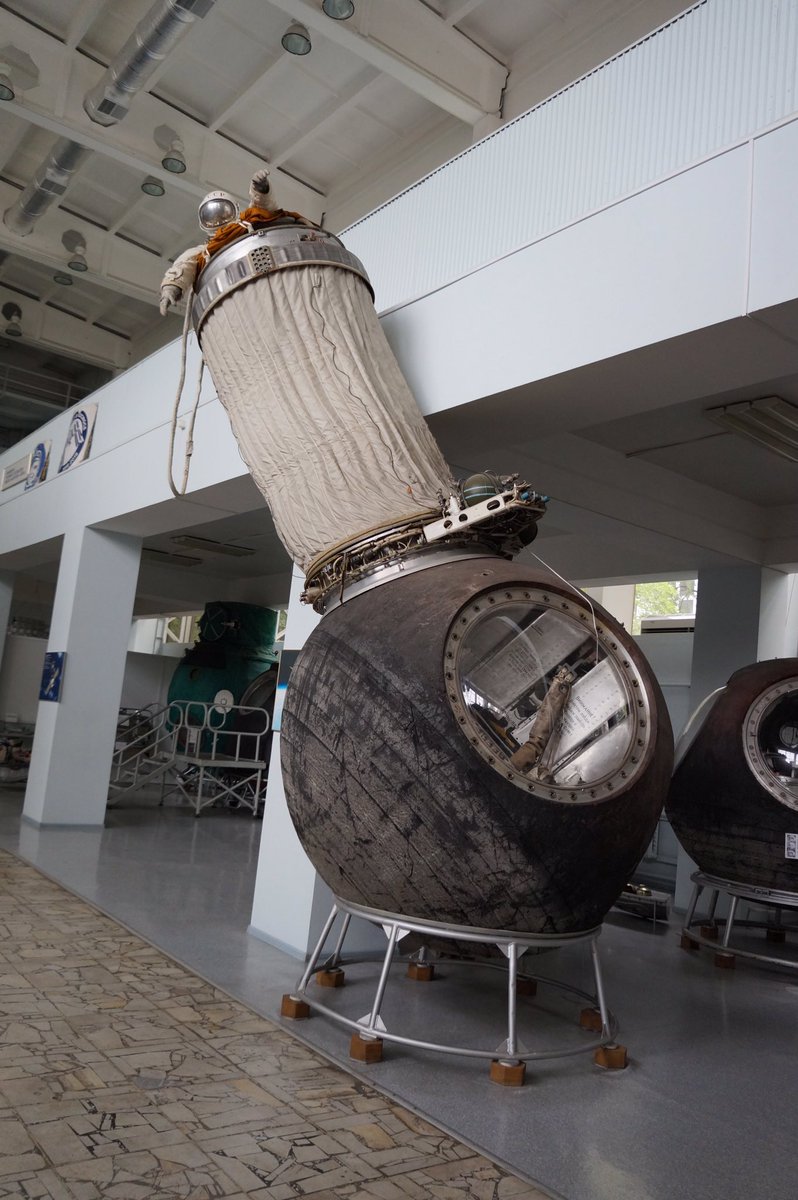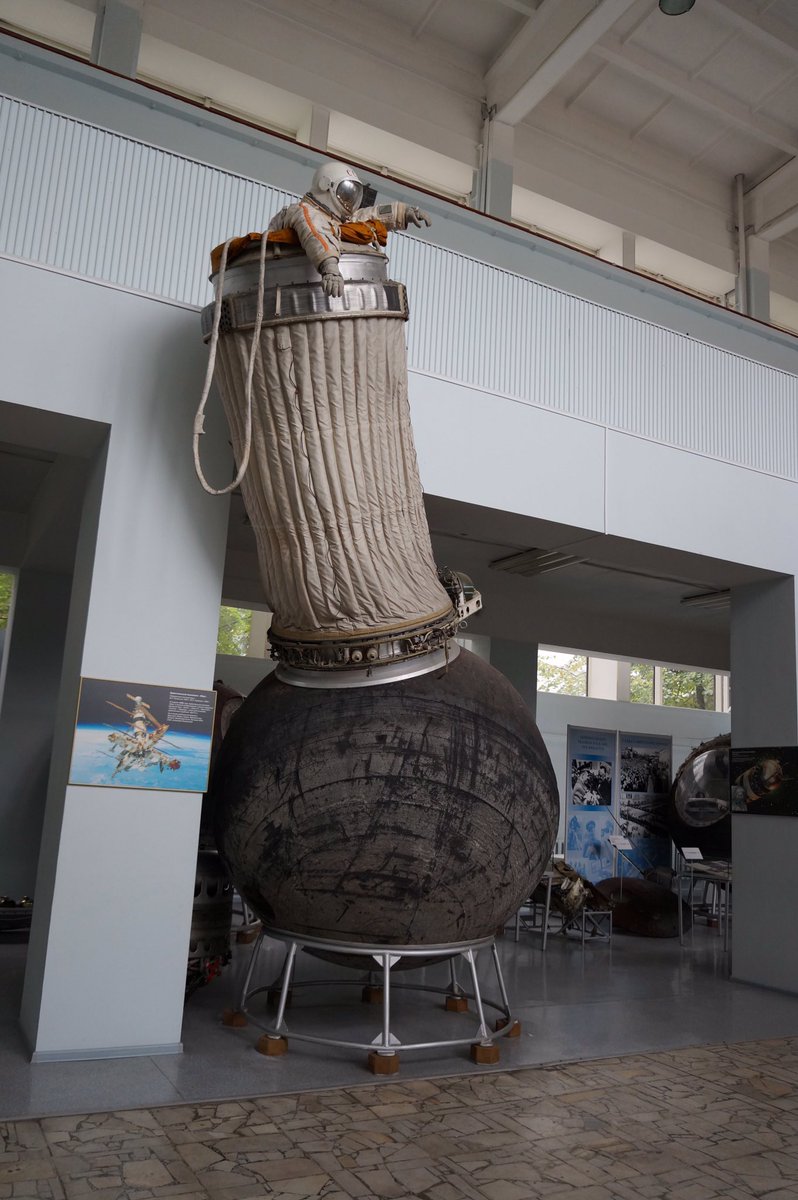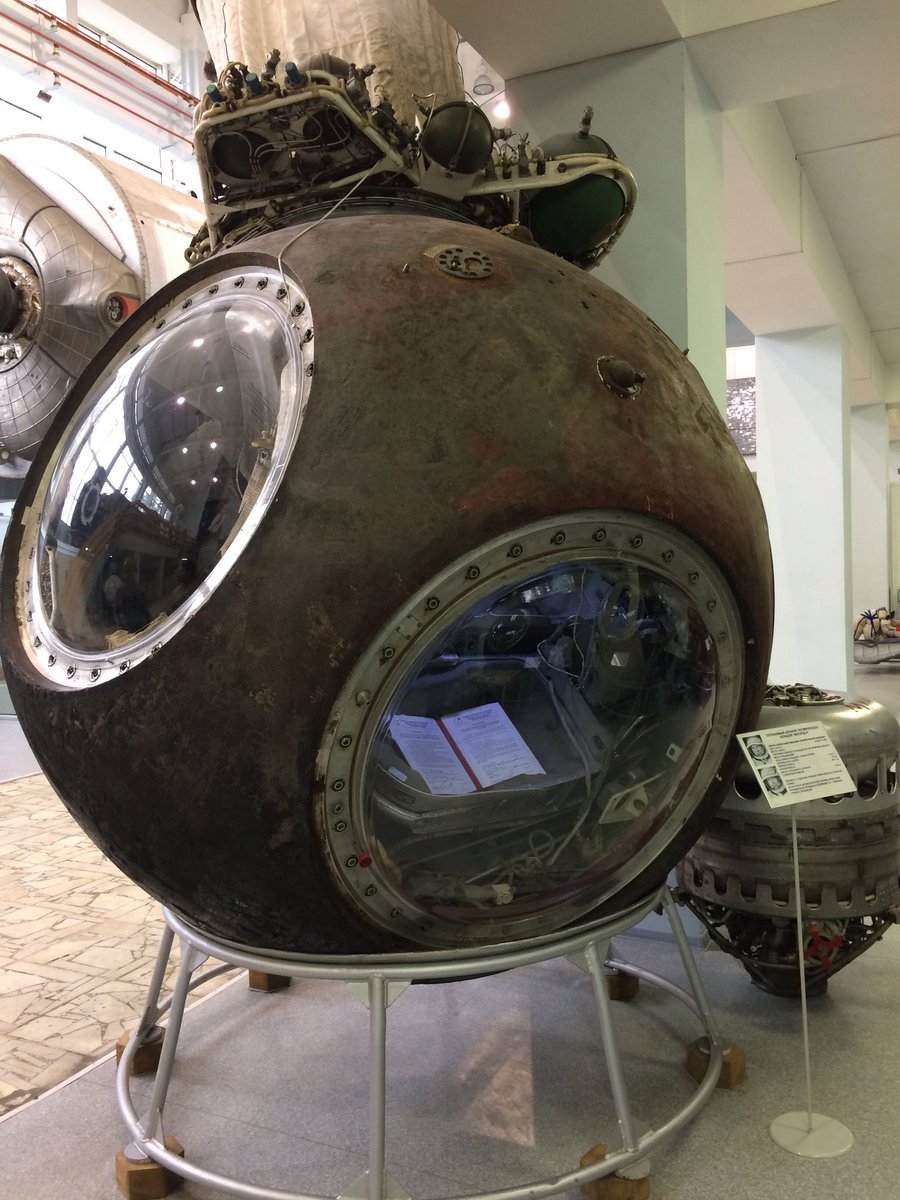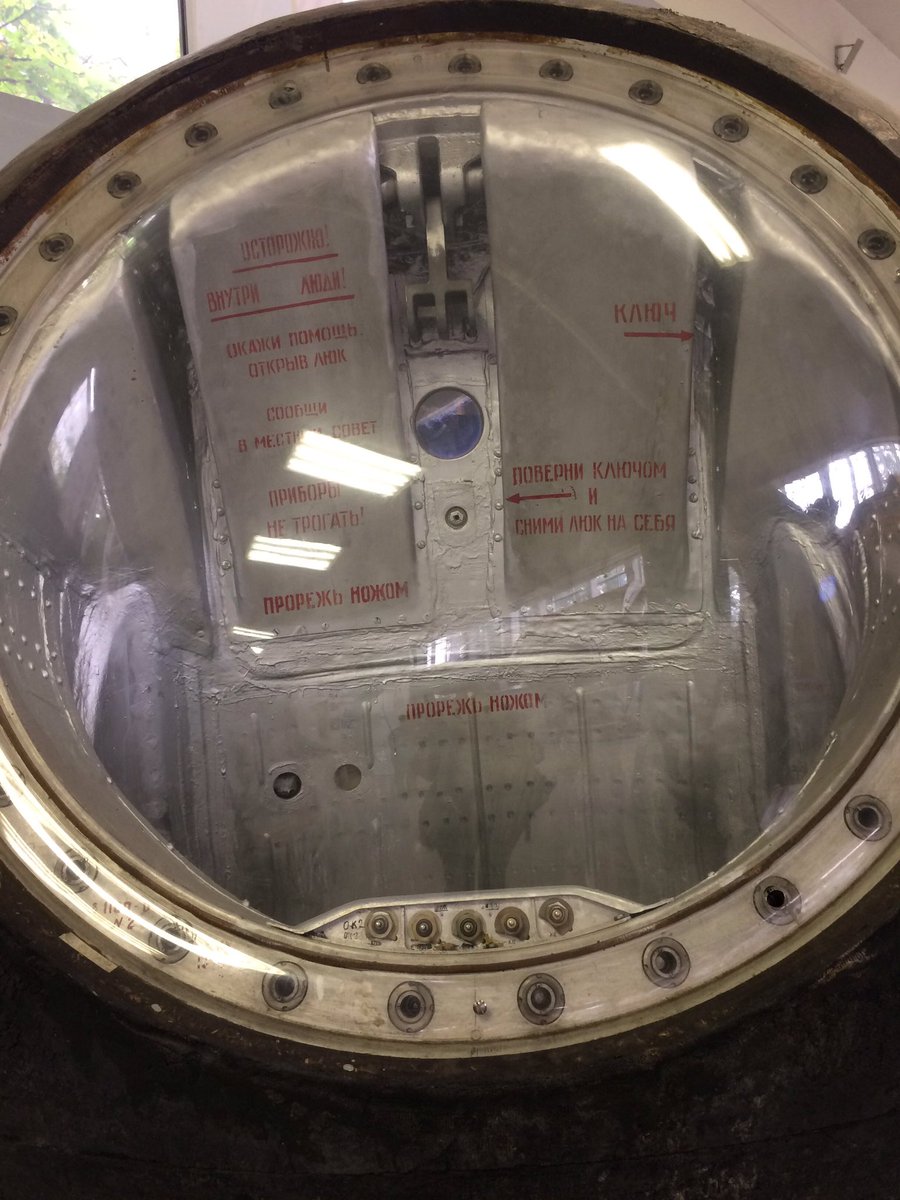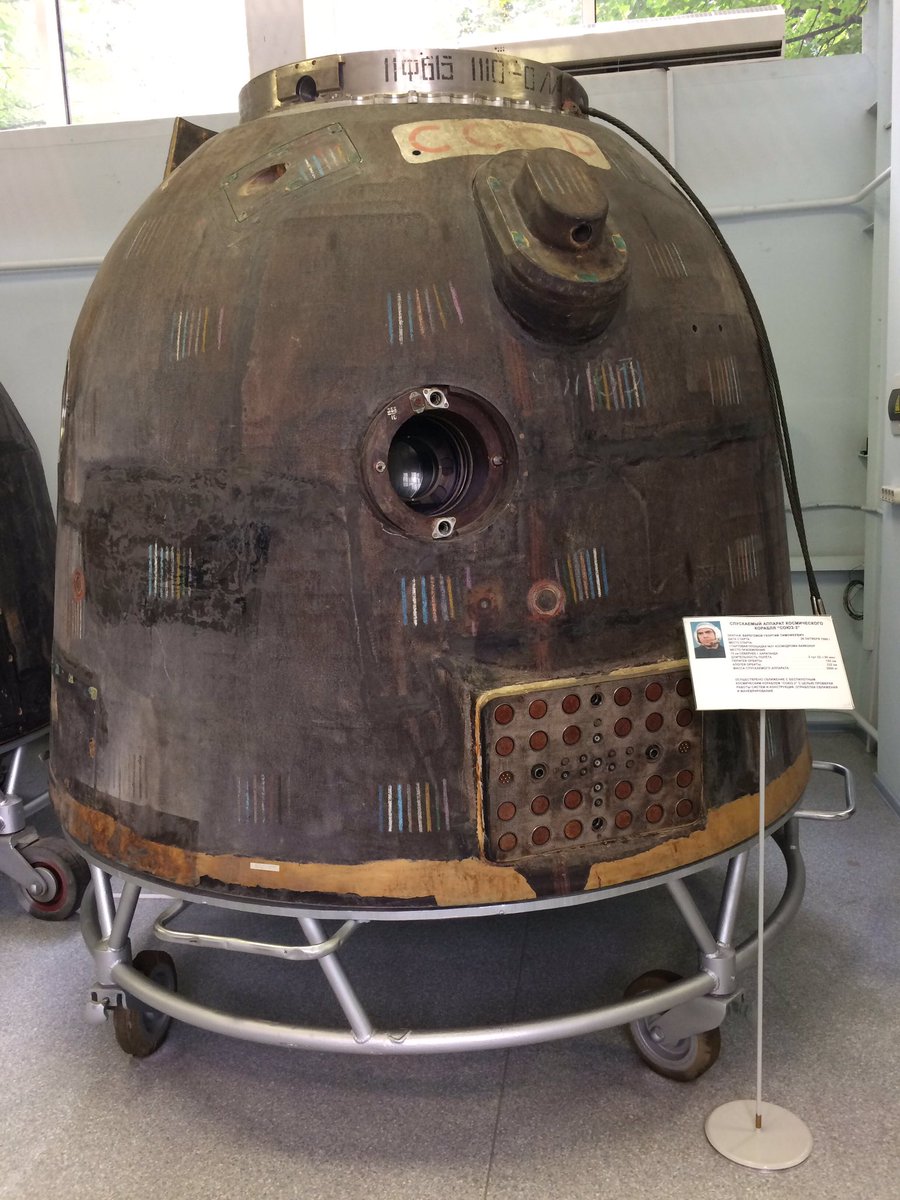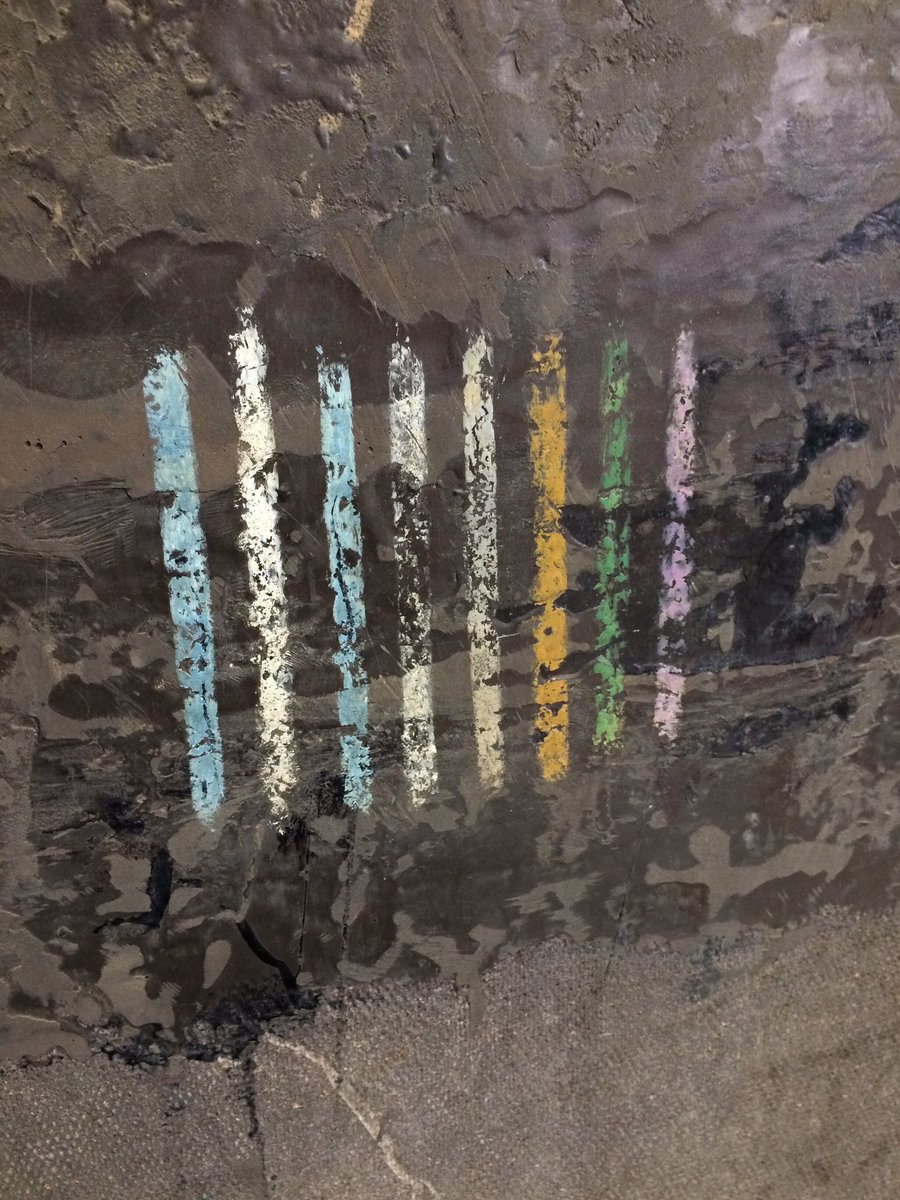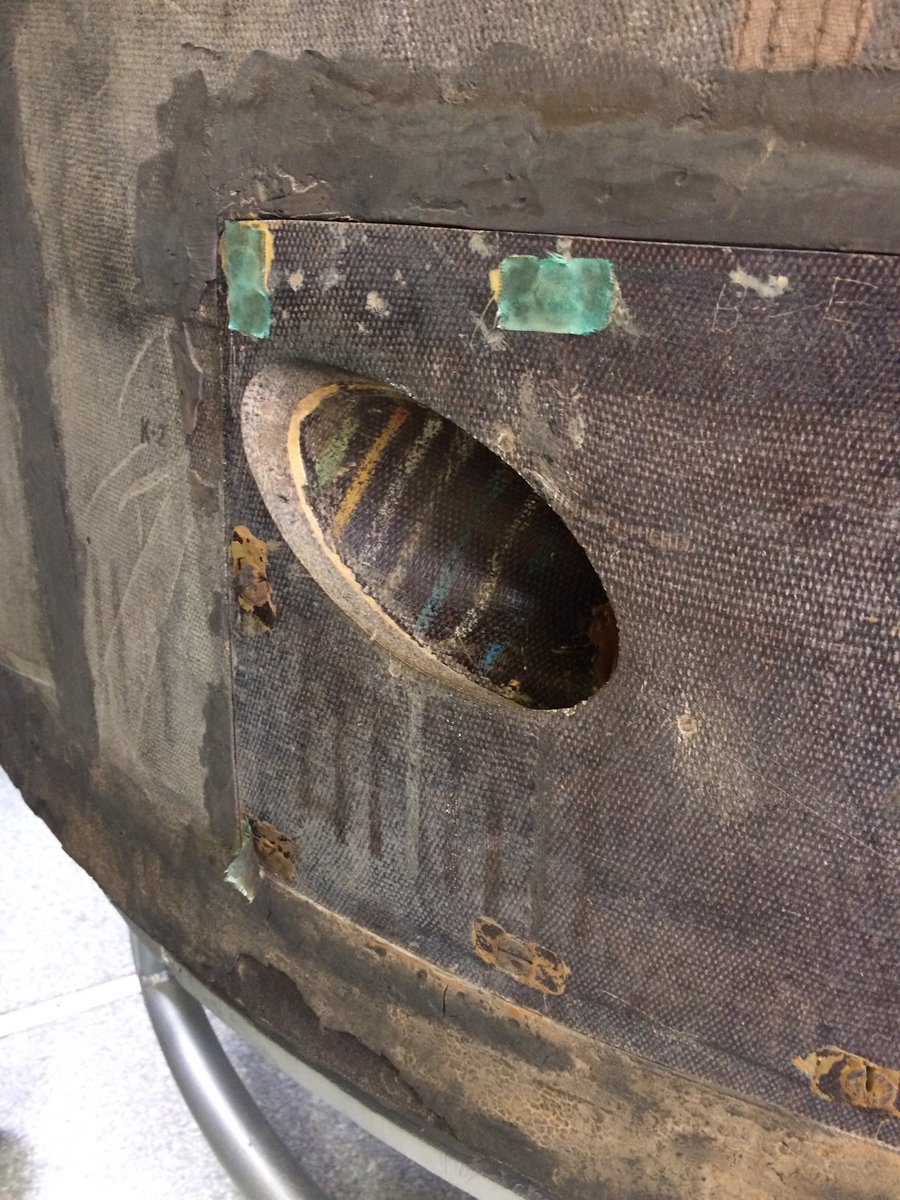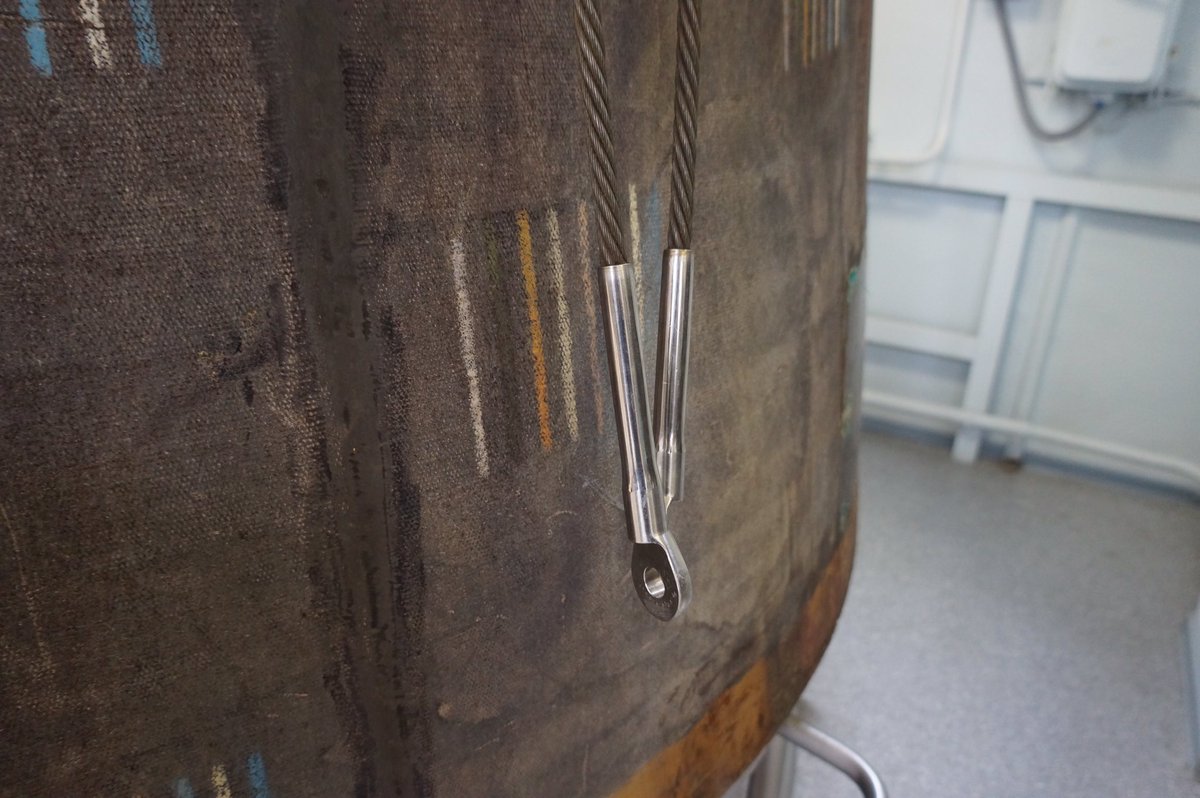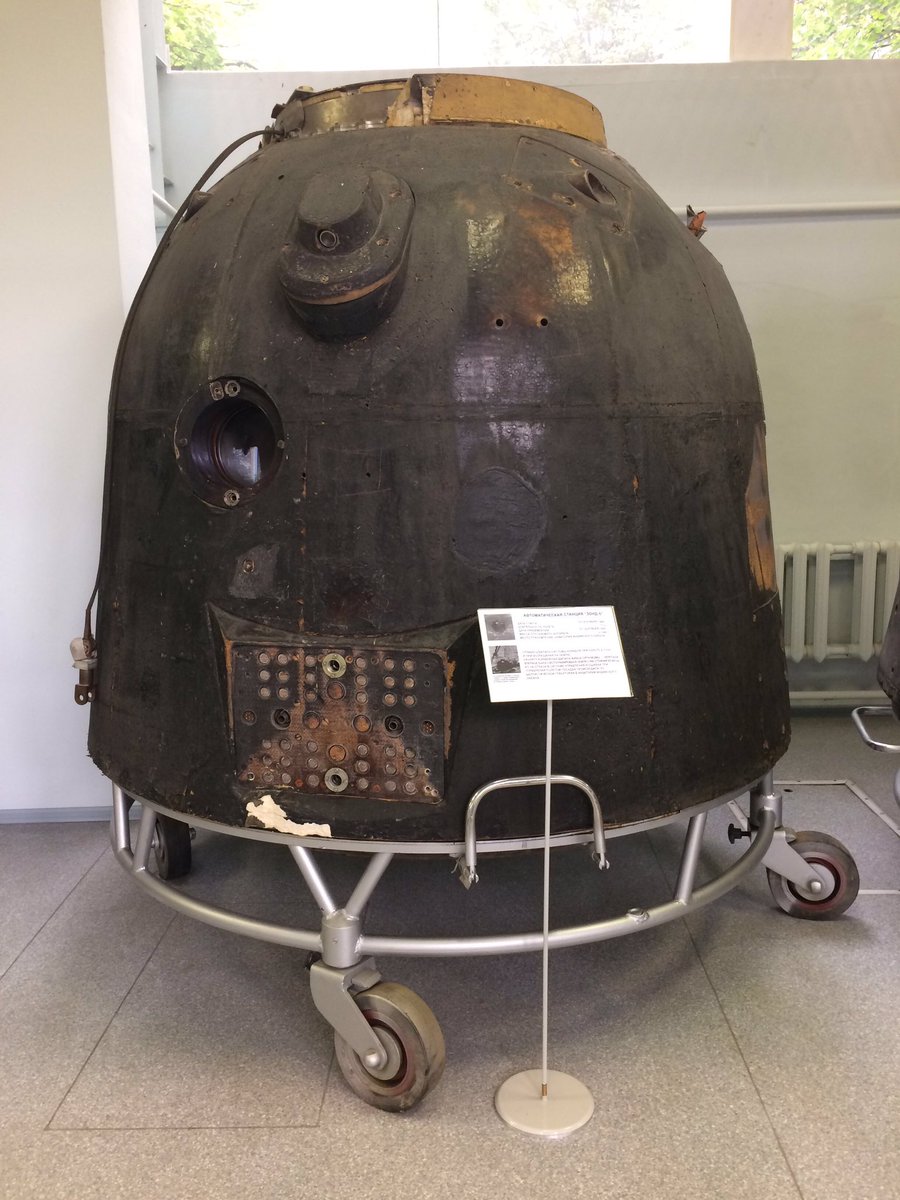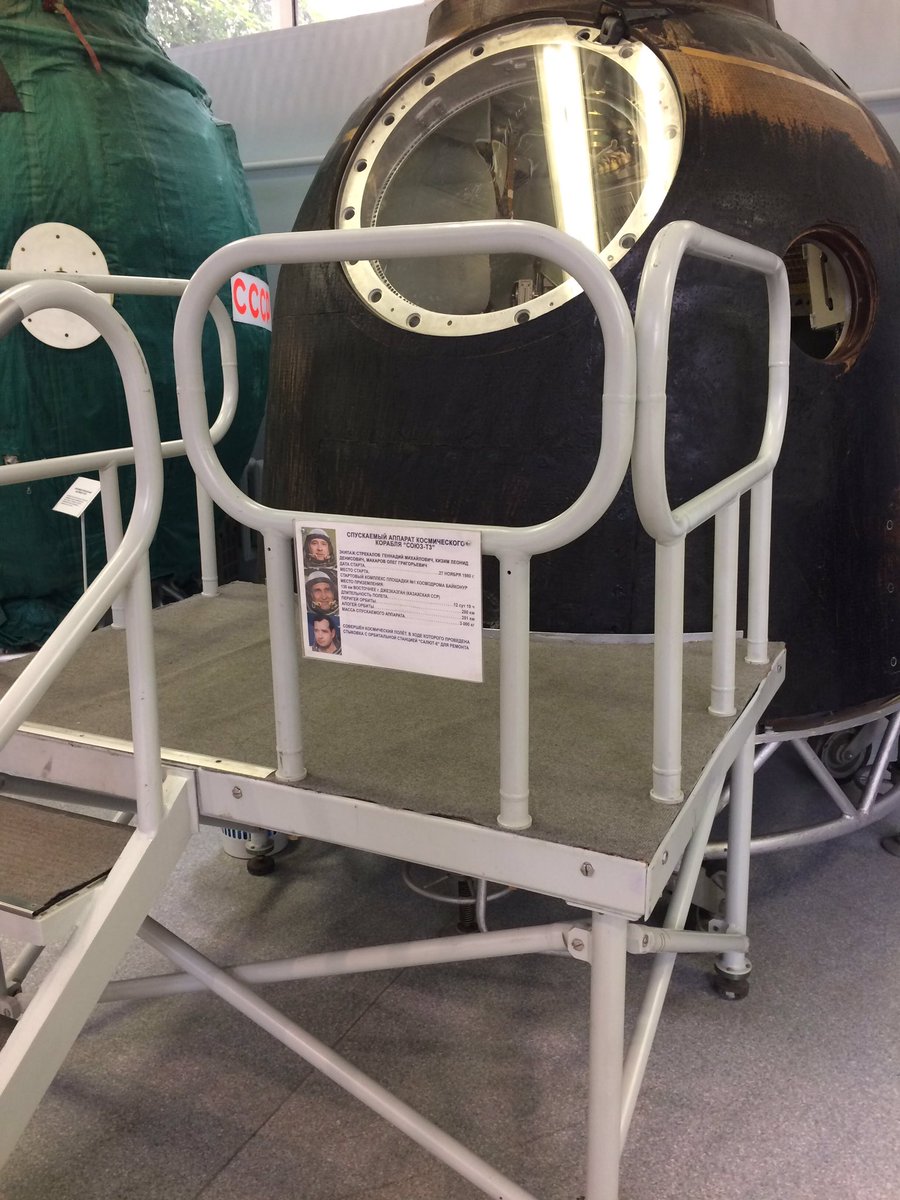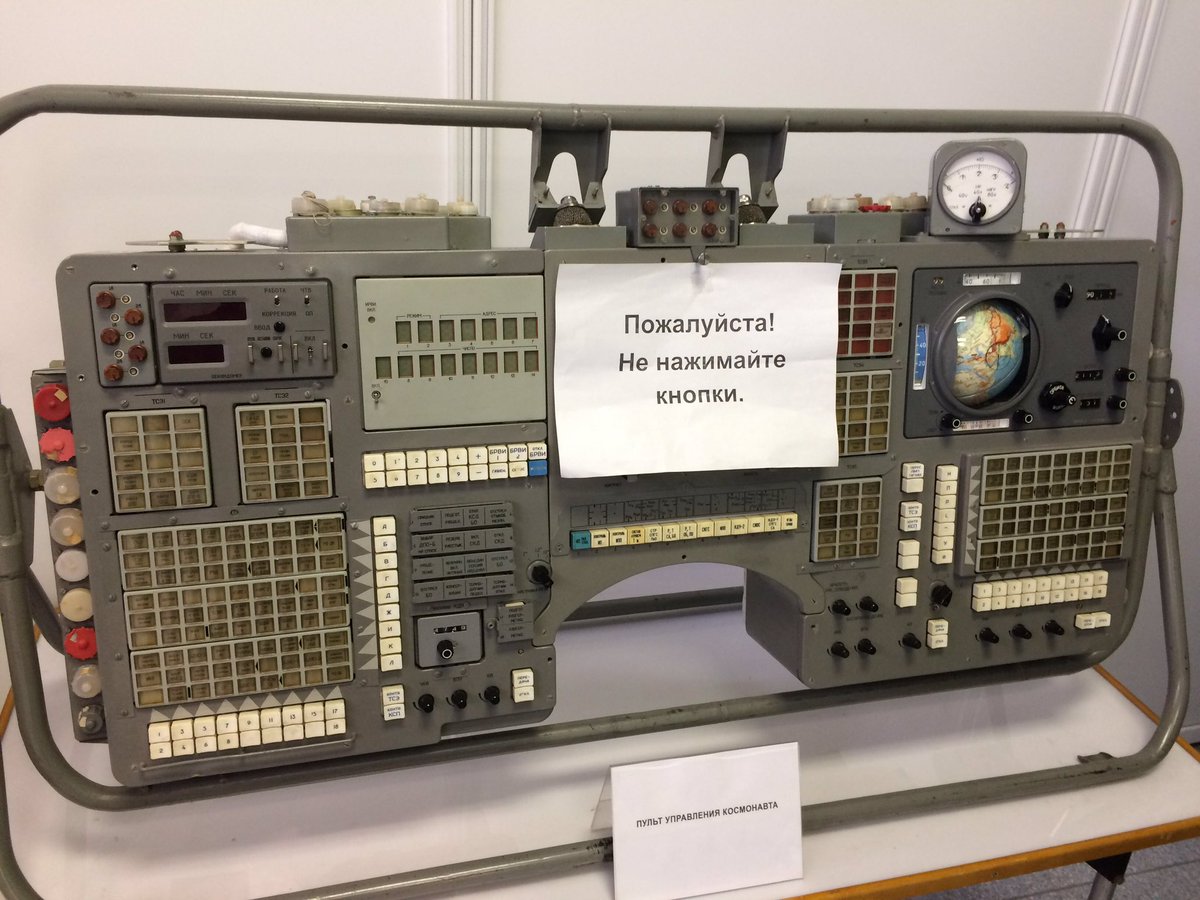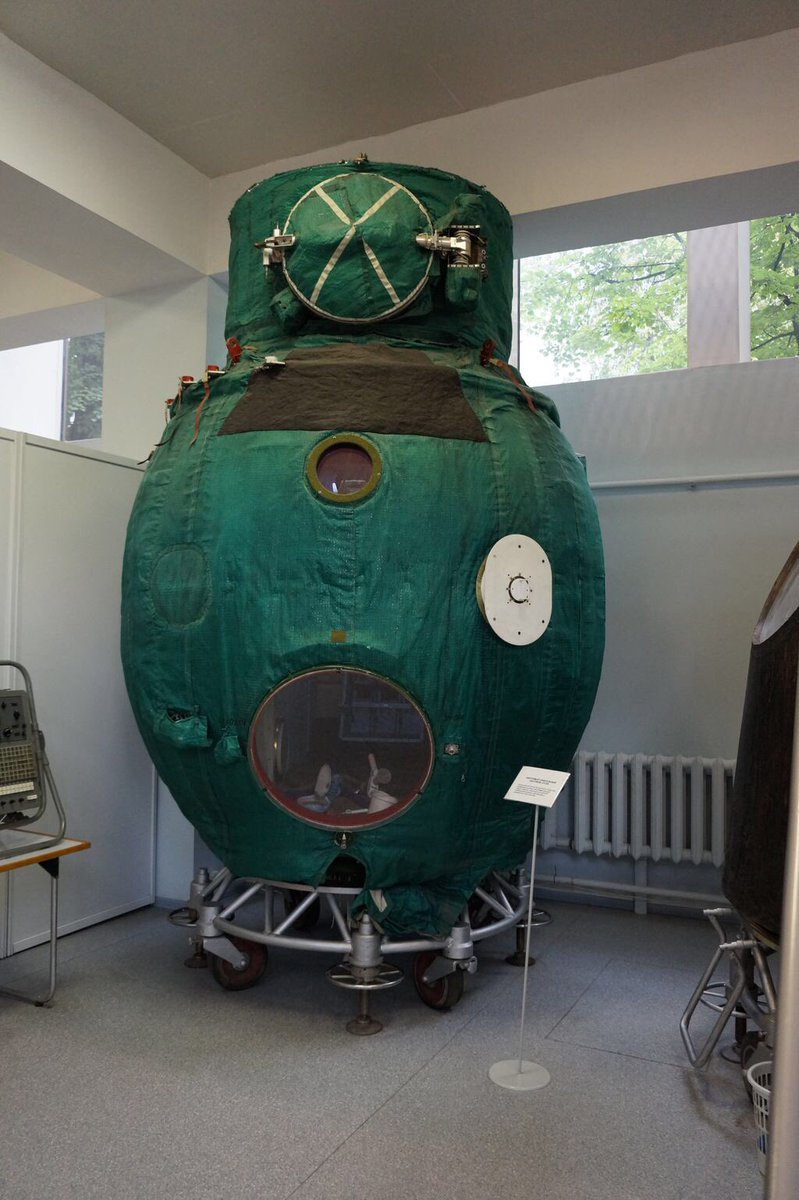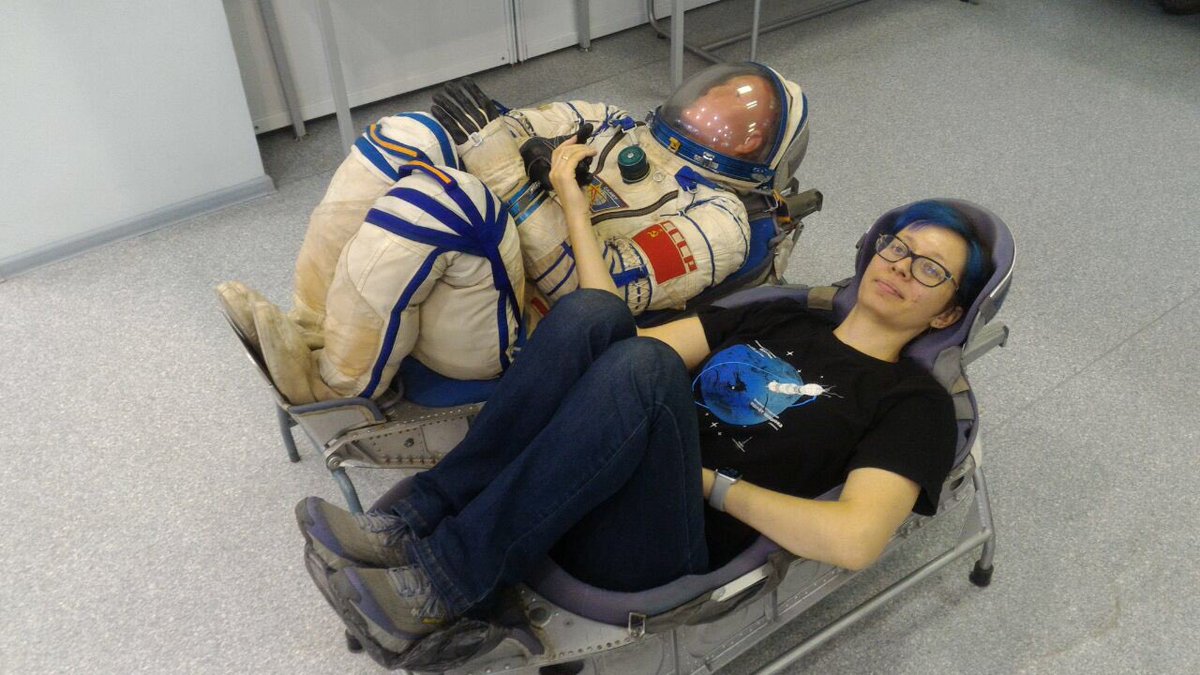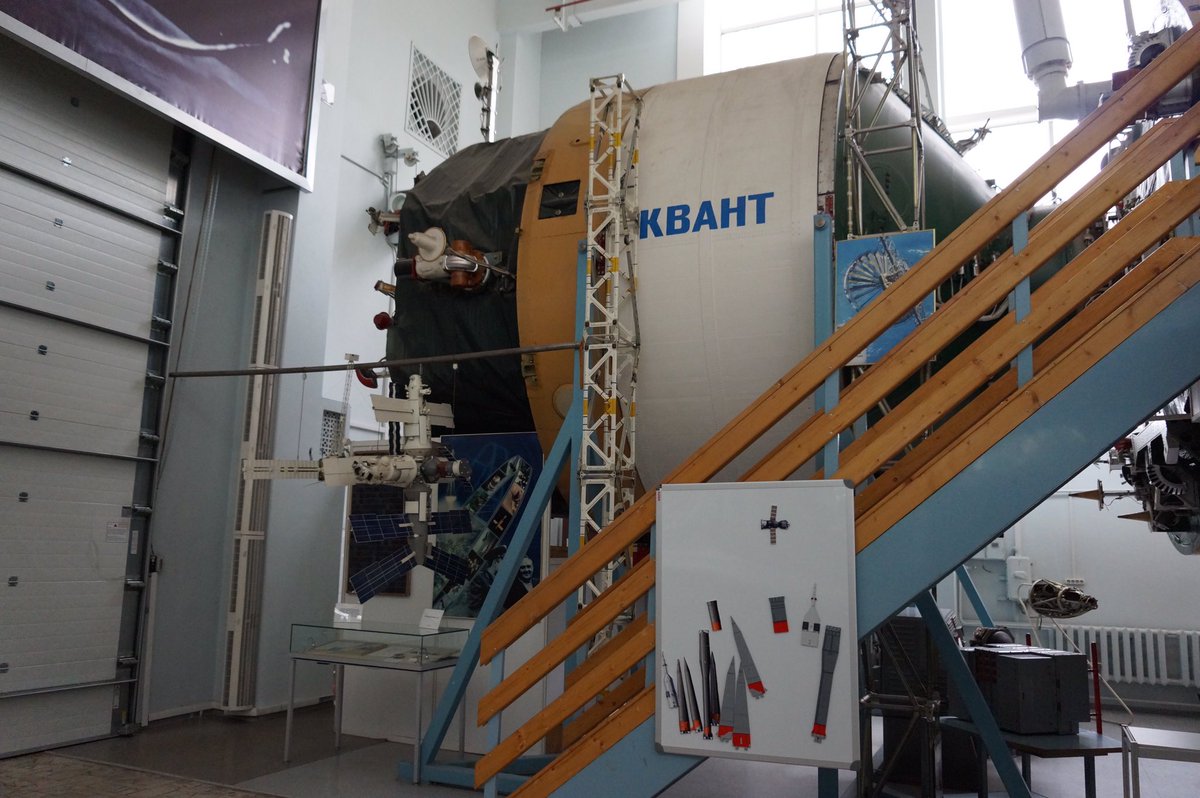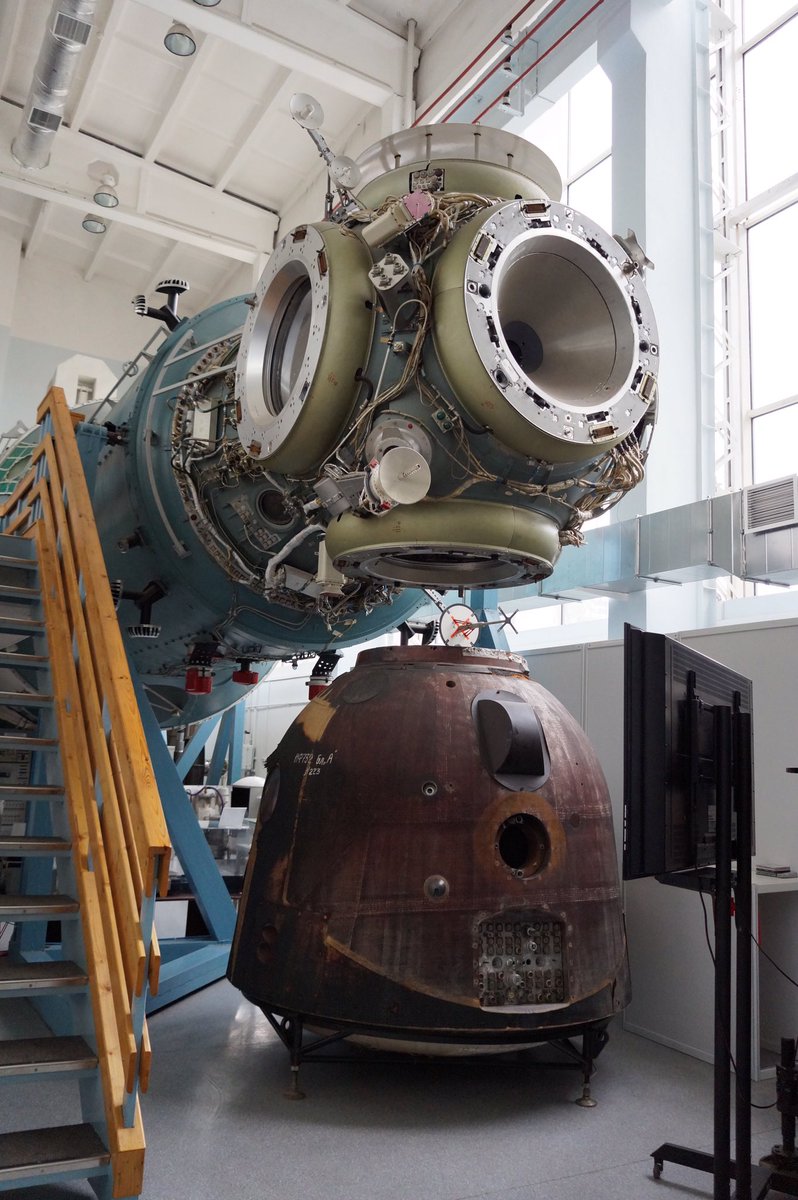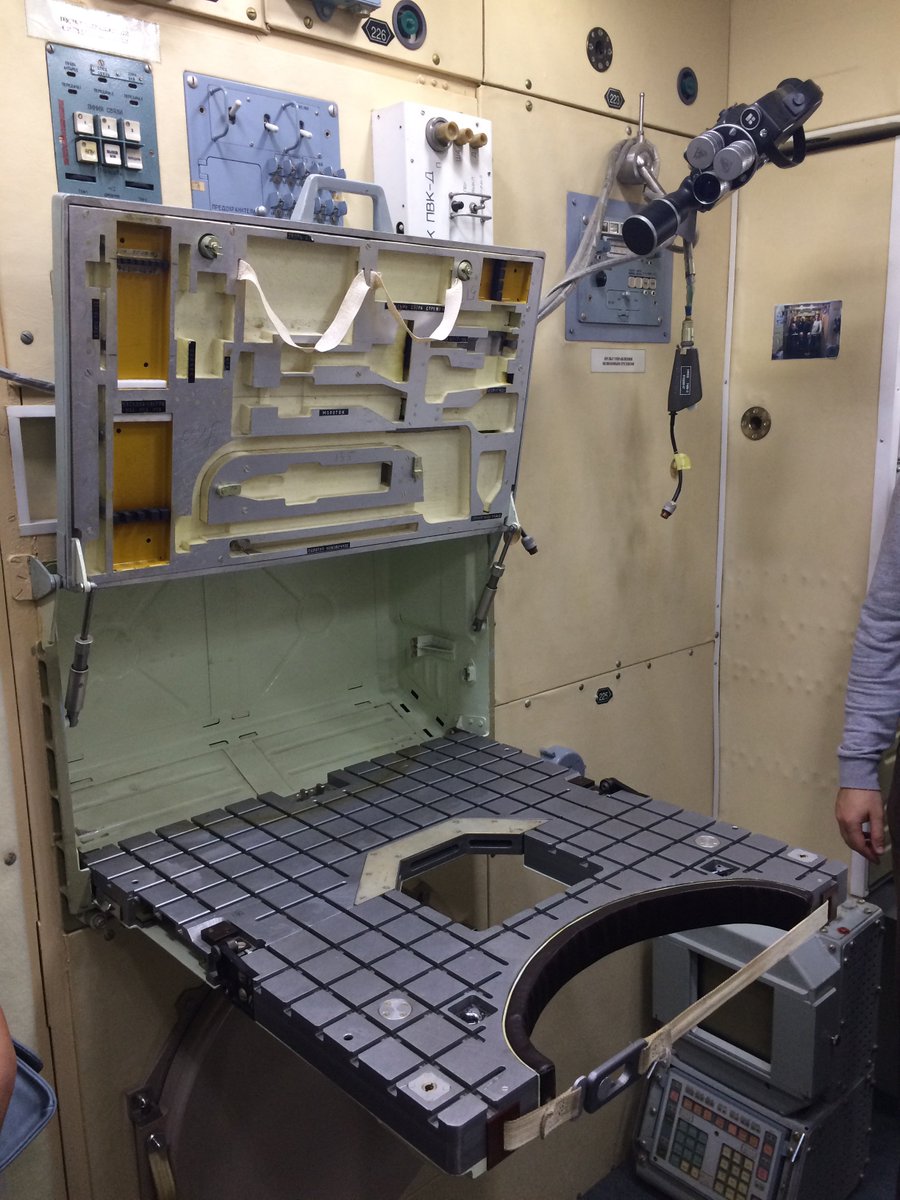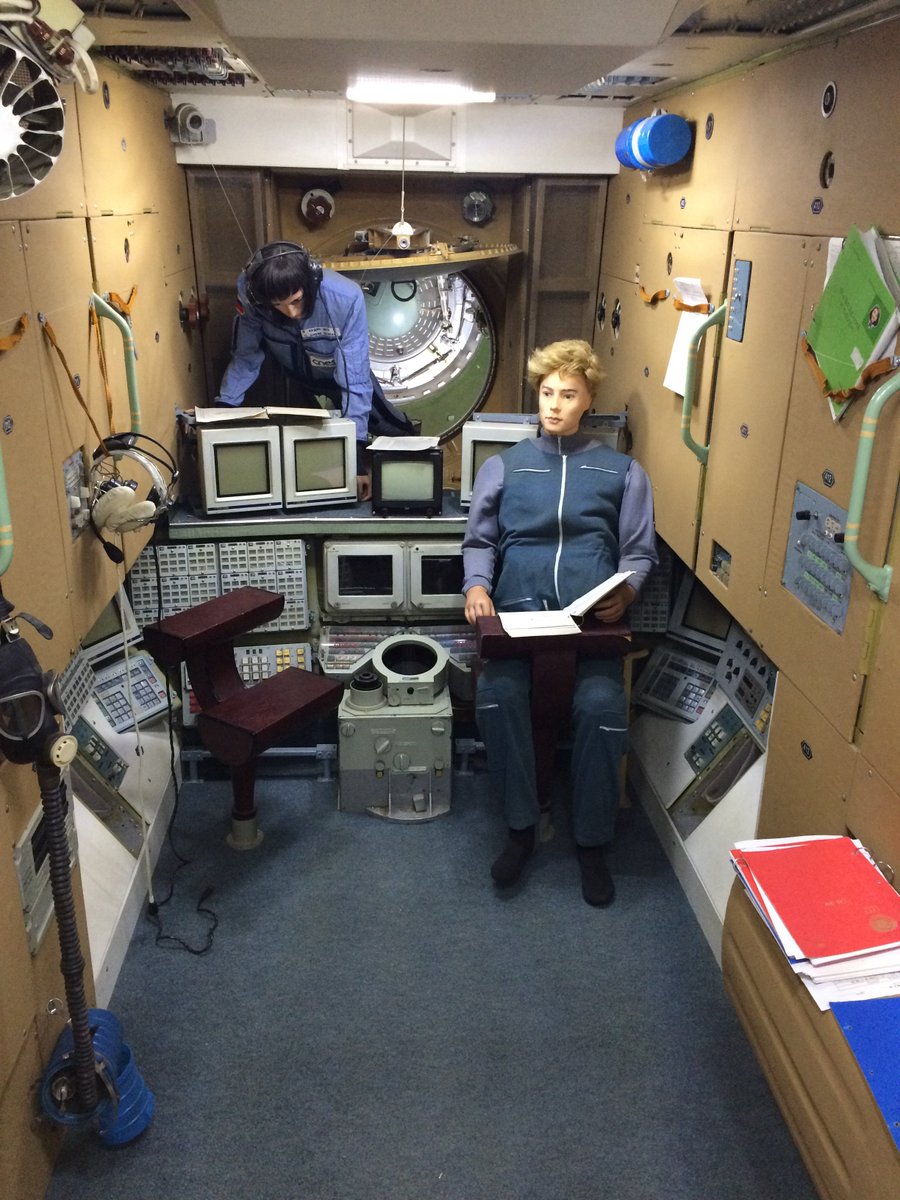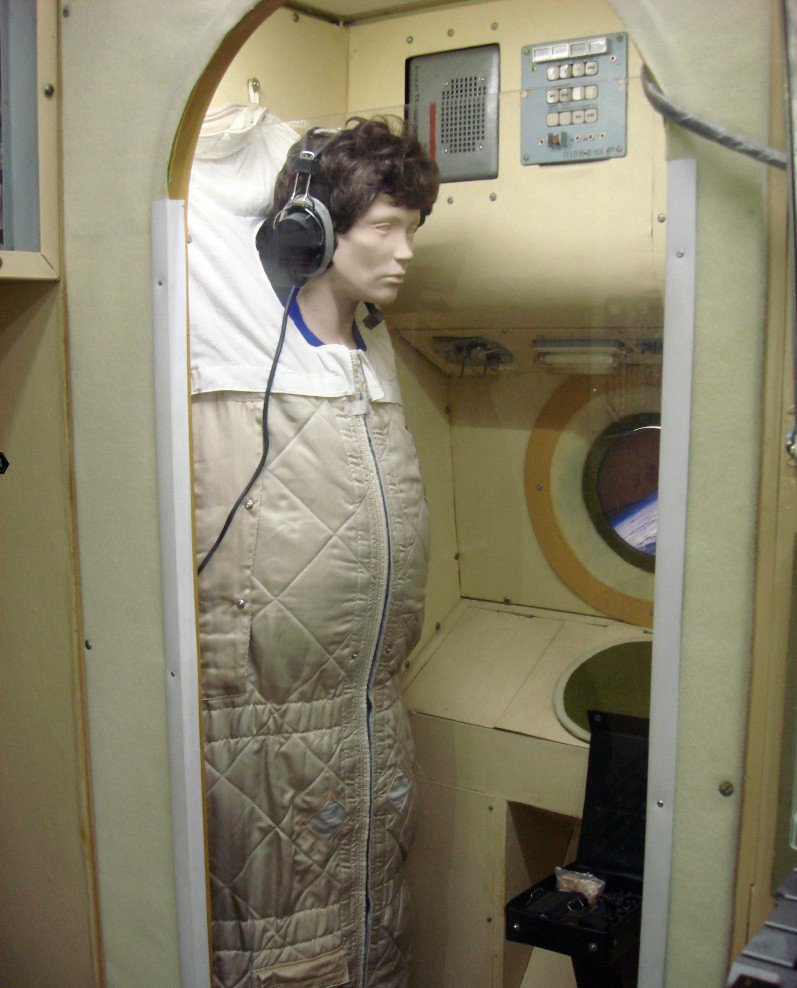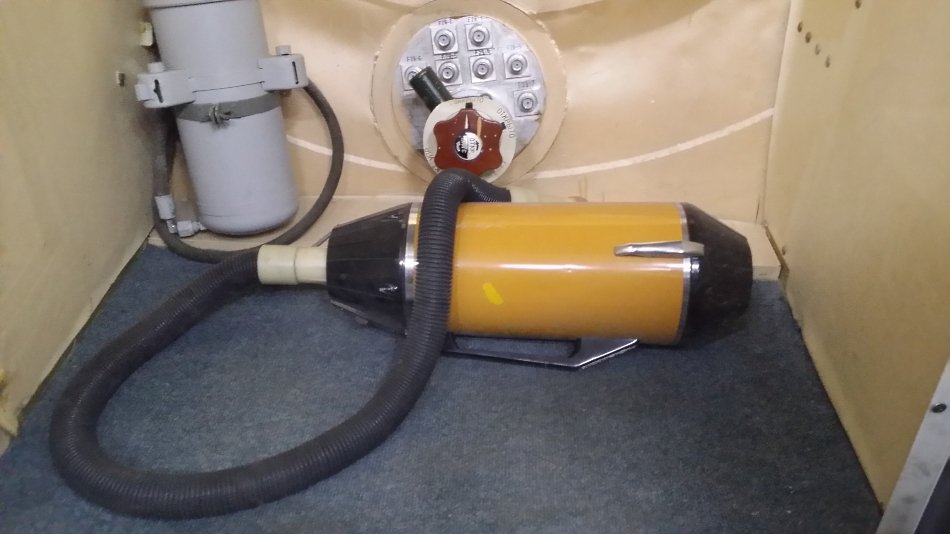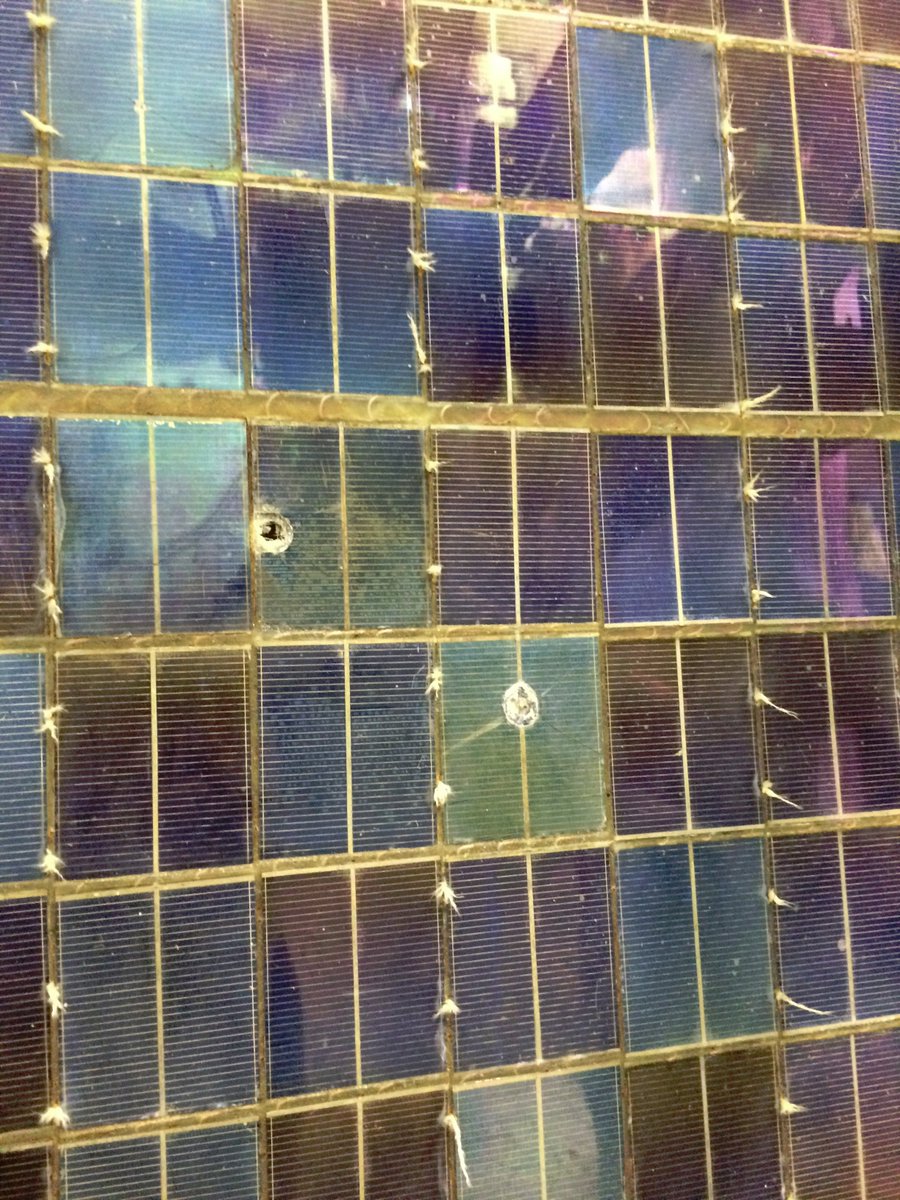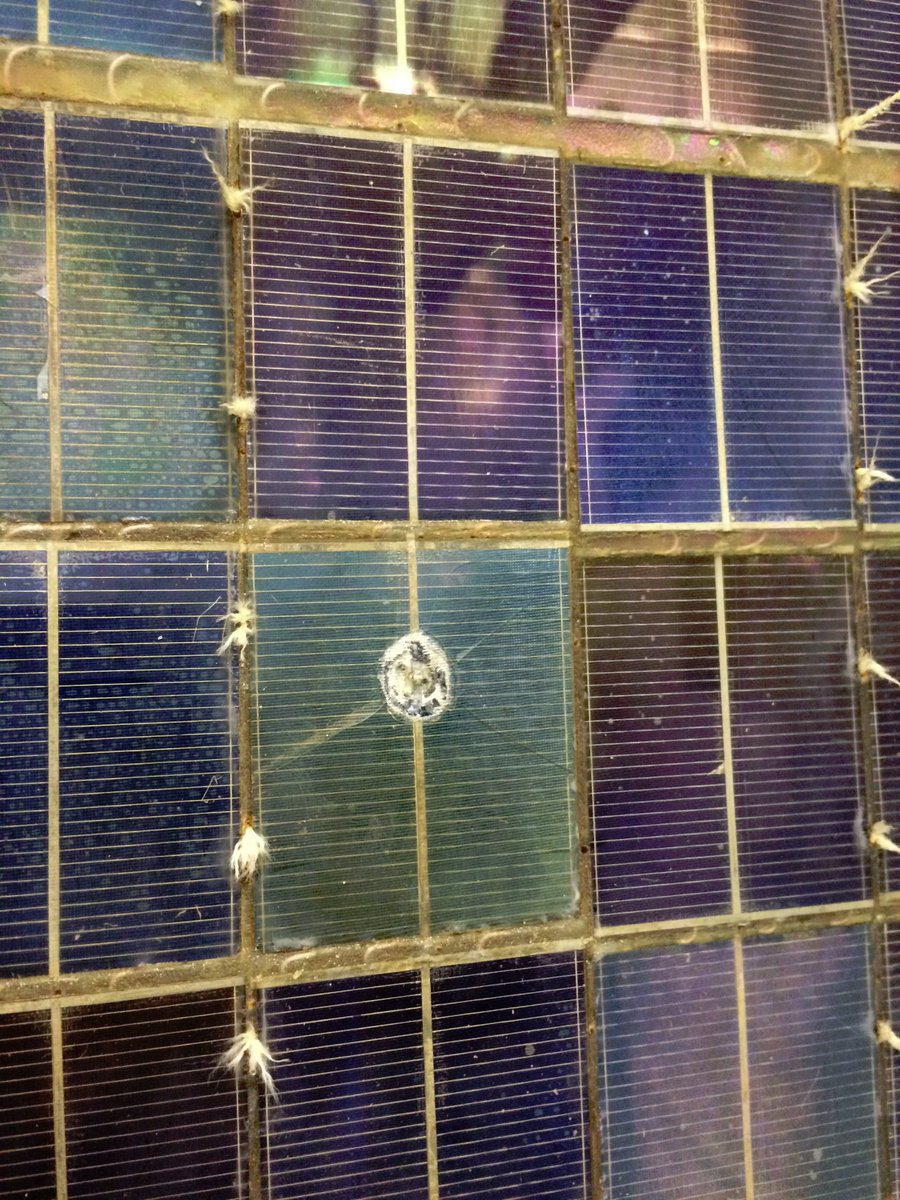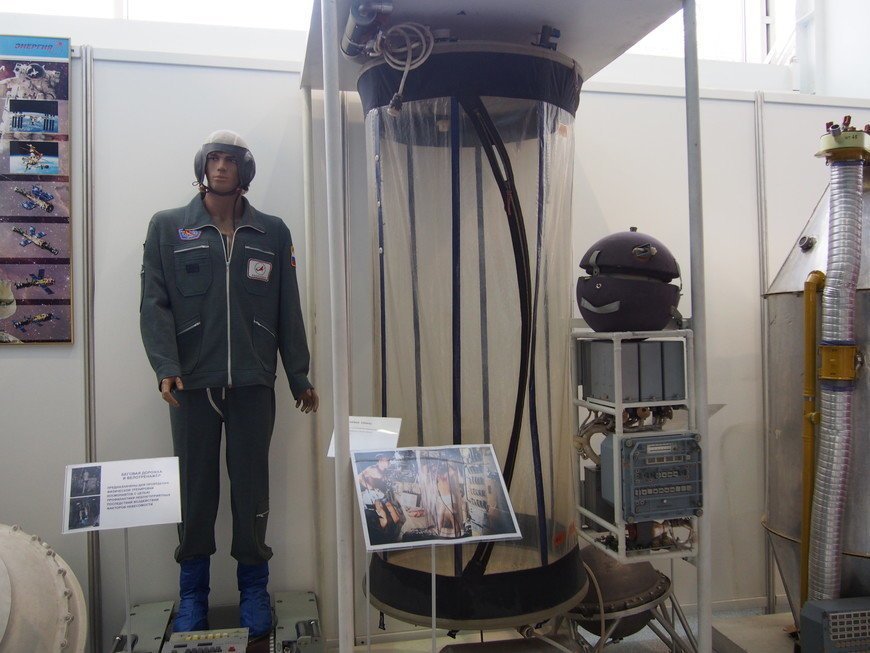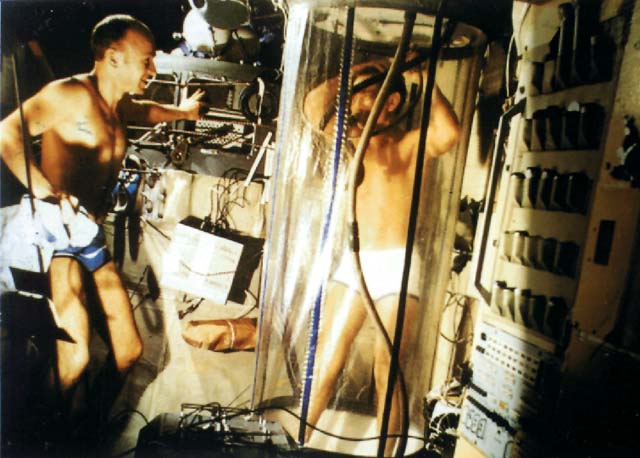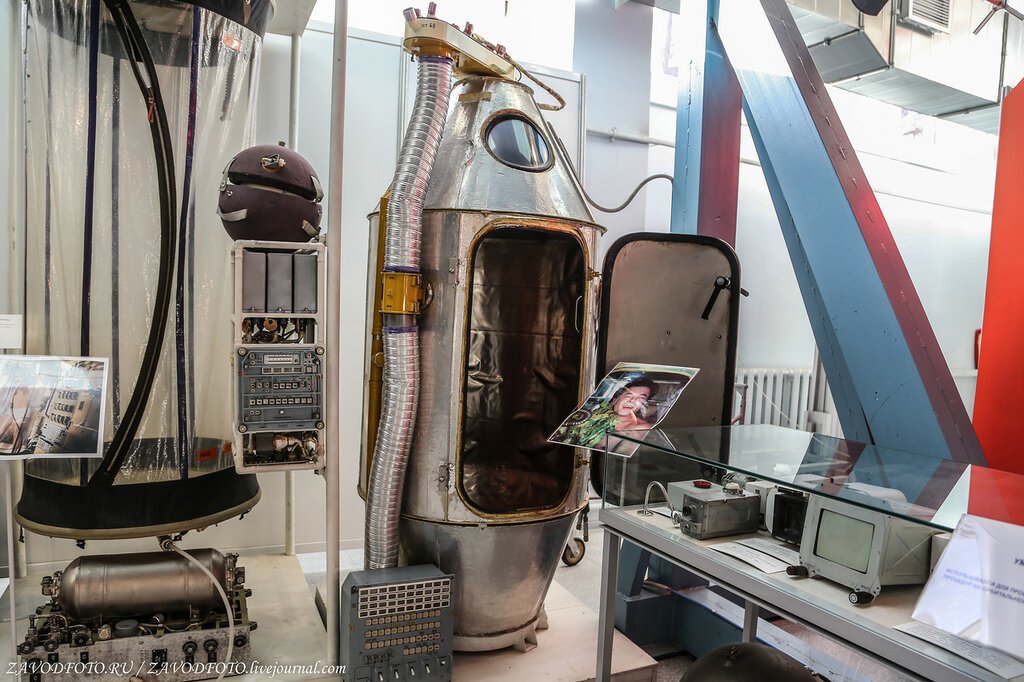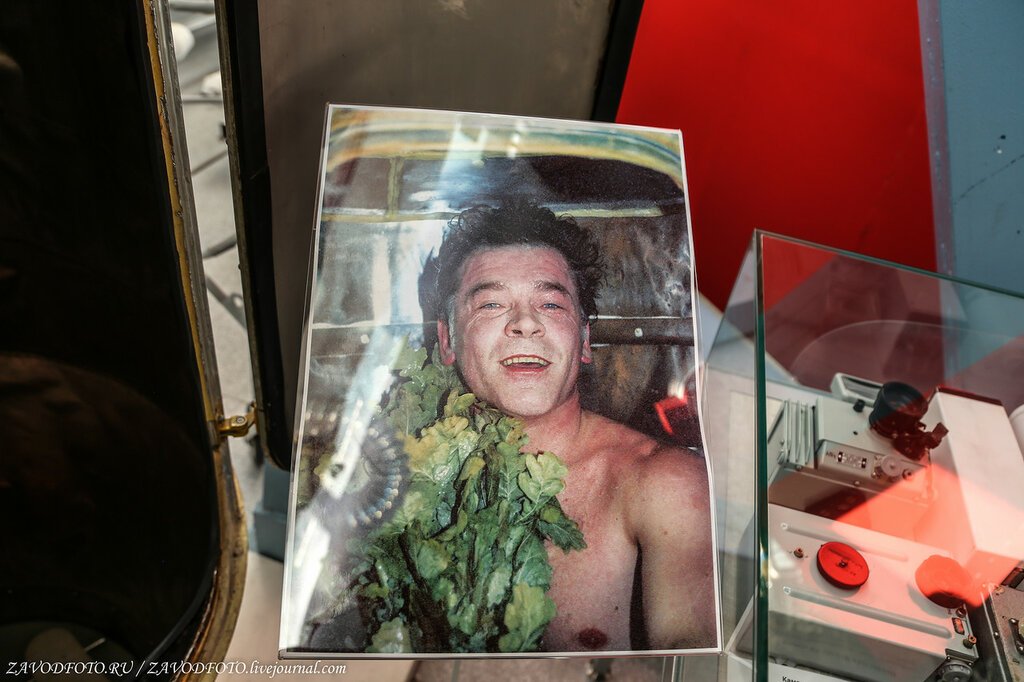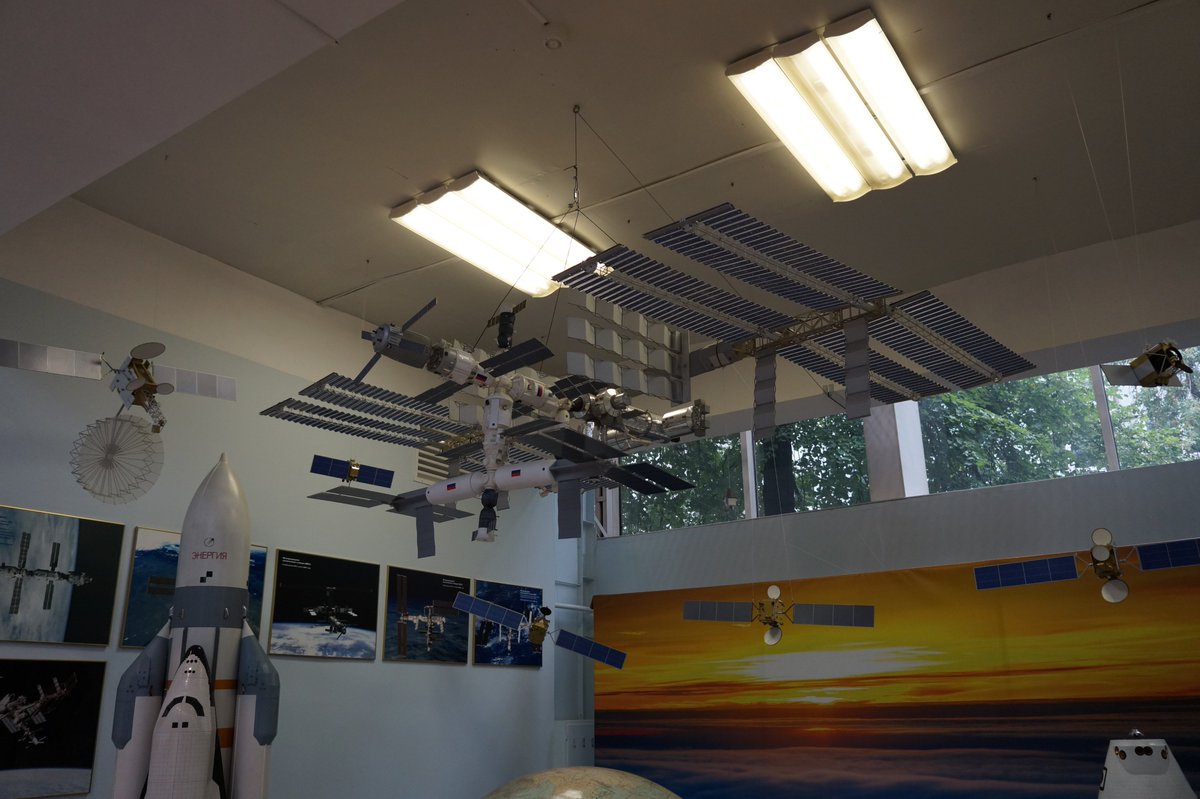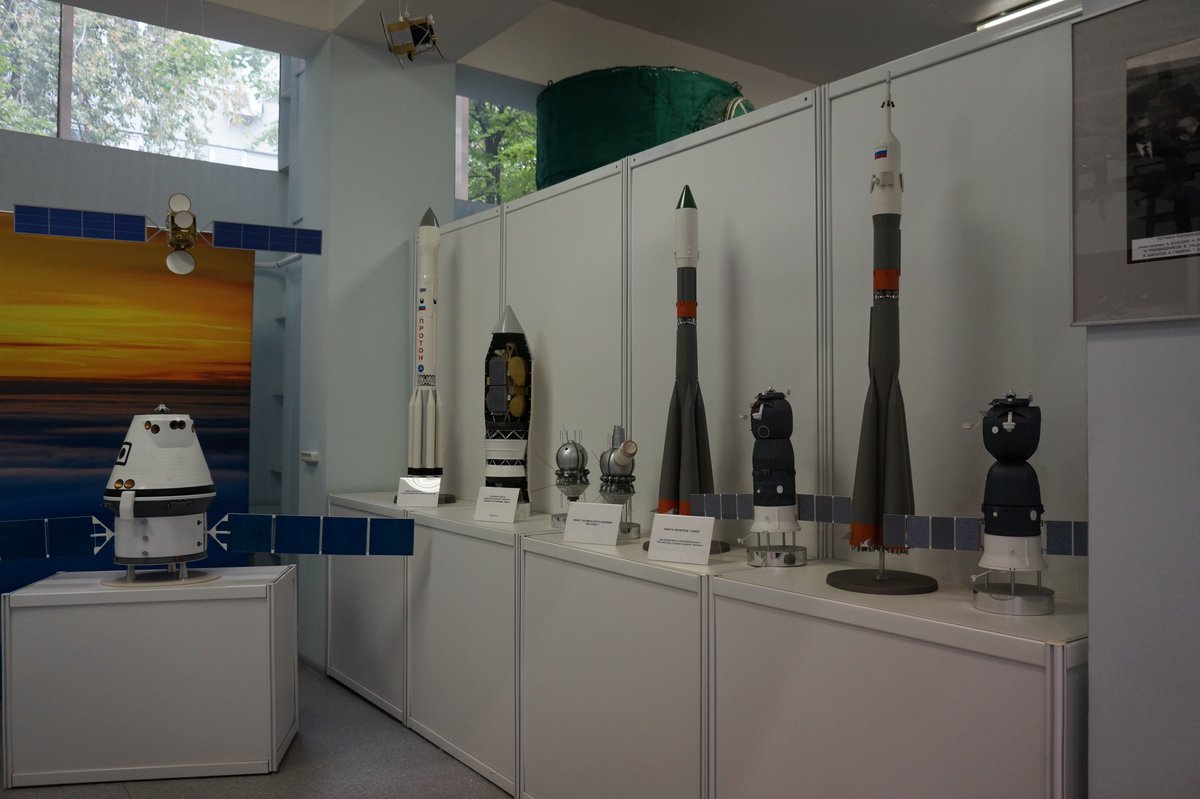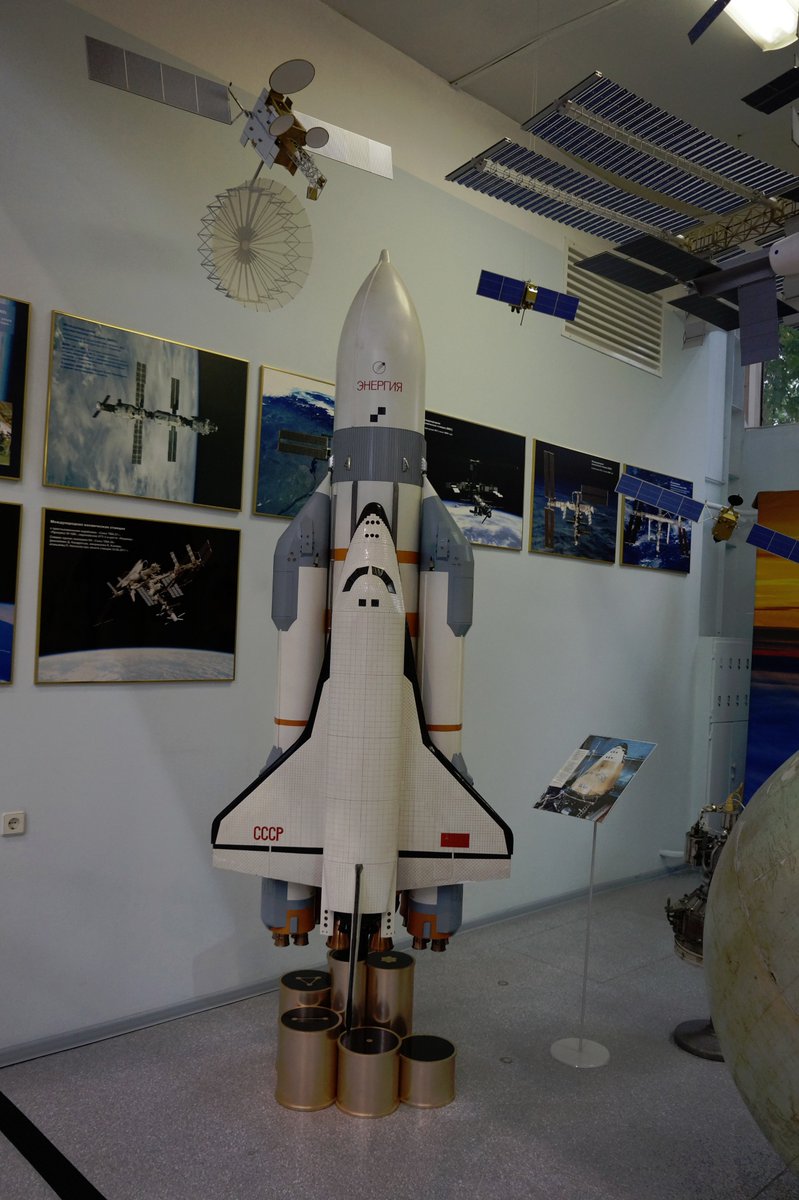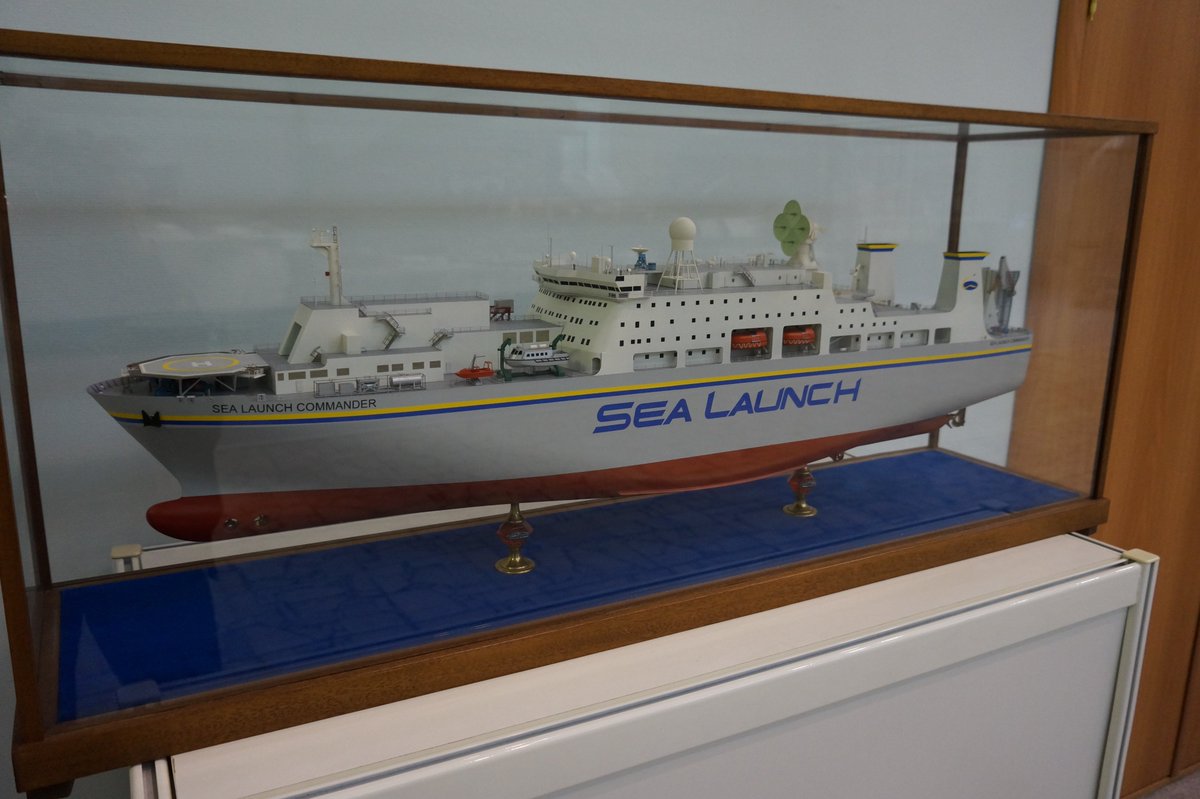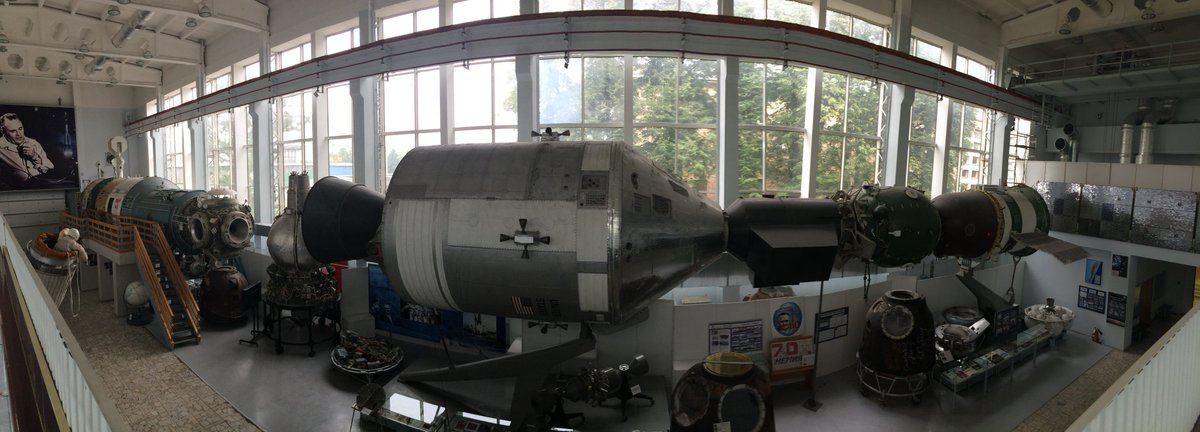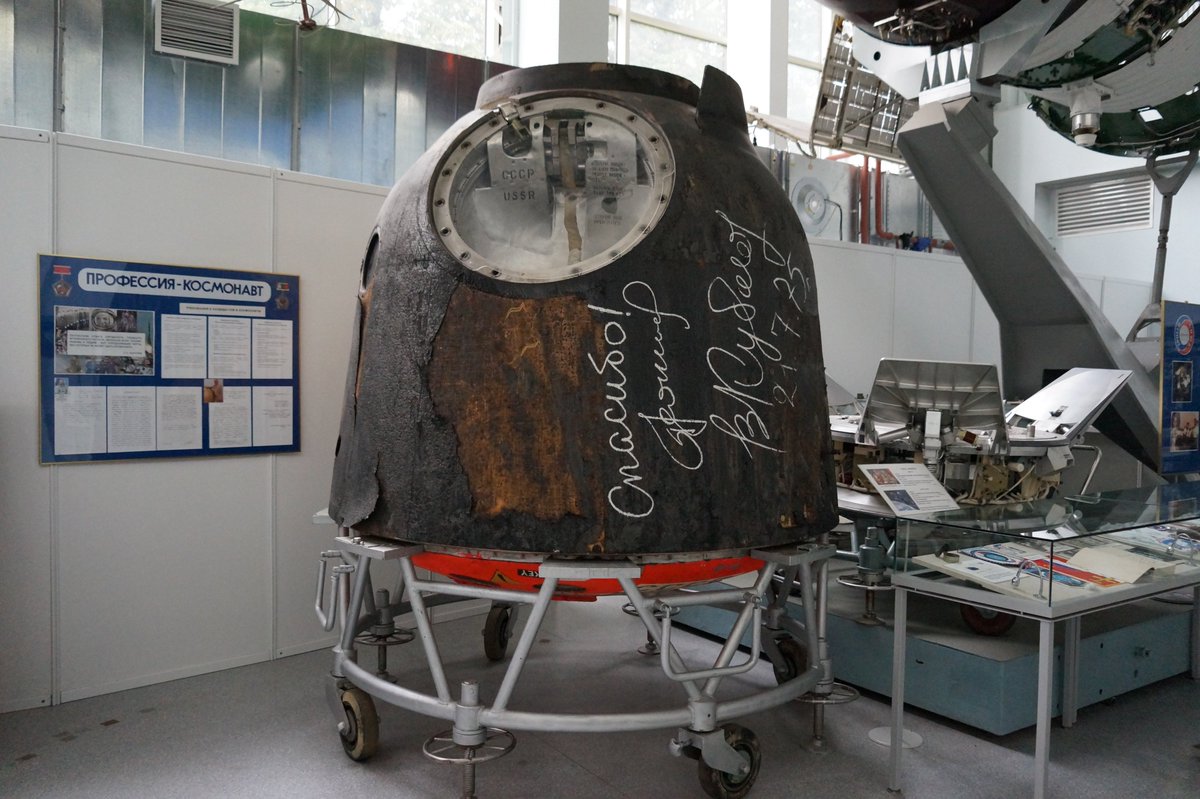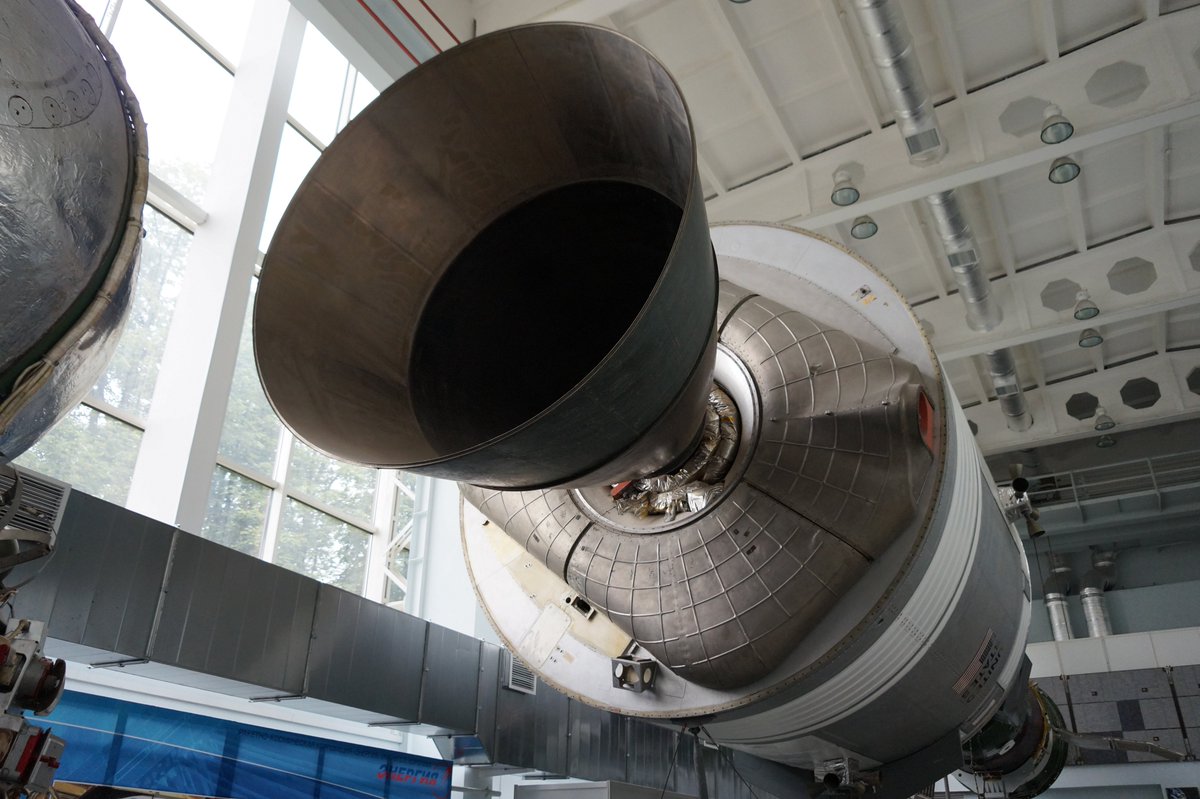Here is the thread about my visit to #RSCEnergia Museum with group of friends from #AlphaCentauri Channel. The Museum is located on RSC Energia territory in the city of Korolev, and it is not easy to get there due to the security level. But thanks to Evgeny we managed this quest!
It is forbidden to make photos inside the perimeter of RSC Energia, so I can show you only the entrance and the #Vostok rocket that stays on the territory. There is written on the entrance building: "Space begins here!".
This is the hallway of the Museum with beautiful photos of rockets and the 1:1 mock-up of #Sputnik, the first artificial Earth's satellite.
The Museum has a huge display hall (1300 m2), the Labour Glory hall and the Memorial room devoted to S.P. Korolev. I wish we had more time there! Here is the interior of Korolev's office in OKB-1. I was so excited and forgot to make photo, so here's an official photo for you :)
In the hall of Labour Glory big stands with photos, souvenirs and gifts are placed. Some of them are dedicated to the greatest designers of spacecrafts and rockets.
The 90's were hard times for Russian space industry. Every company tried to survive by producing something that can bring real money. The vacuum cleaner, water filter and food processor produced by #RSCEnergia are placed to the Labour Glory hall as a part of company's history.
The most interesting place is of course the big Display hall. Previously it was one of the assembly halls; the exhibits presented here are engineering mock-ups, which means they are working copies of spacecrafts that were used for tests. There are also some real-flown artefacts!
This is the engineering mock-up of #Sputnik, the first artificial Earth's satellite; there is Sputnik's nosecone copy presented and the original all-wave receiver that was used to receive its signals.
Will be continued later this evening after I take Proxy to the vet.
Too tired, will continue tomorrow. Good night (or day  ) to everyone!
) to everyone!
 ) to everyone!
) to everyone!
The engineering mock-up of #Sputnik-2, the second spacecraft launched into Earth orbit on November 3, 1957 with terribly natural looking #Laika inside. Of course it is not the real Laika because she died in space and Sputnik-2 burned up in the atmosphere during the reentry.
#Sputnik-3 was the first Soviet scientific satellite launched in 1958. It carried 11 scientific instruments. Housing and internals are presented separately and you can see the entire configuration in detail.
#Luna3, the first-ever mission to photograph the far side of the Moon, its instrument frame from different angles and the first photo of the dark side of the Moon this spacecraft made in 1959.
Here is the rather funny exhibit! This is one of the 1000 bottles of champaign that were presented to the designers of Luna-3 by the French winemaker Henri Maire who made a bet that no one will ever see the far side of the Moon. Here is the story: https://books.google.ru/books?id=B77YCgAAQBAJ&pg=PA13
An engineering mock-up of #Luna9 lander, the first spacecraft to achieve a soft landing on the Moon, in deployed position. on the last photo you can see the altimeter of Luna 9 spacecraft.
Another interesting exhibit. The copy of Sergey Korolev's resolution: "Landing of the spacecraft should be calculated on a solid surface like pumice." Before that, the scientists were arguing whether the lunar surface is hard, or whether it is covered in a thick layer of dust.
#Electron1 and #Electron2 satellites. Designed to be launched in pairs, they allowed simultaneous monitoring of the lower and upper Van Allen radiation belts.
The engineering mock-up of the #Molniya1 communication satellite.
This is #Venera3. It was launched on November 16, 1965 to explore the surface of Venus. Unfortunately, its communications systems had failed before it reached Venus. It was the last Venera probe operated by OKB-1, the next missions were operated by Lavochkin.
The satellite you probably can’t remember. It is #BelKA, a remote sensing satellite developed for National Academy of Sciences of the Republic of Belarus. It was launched on July 26, 2006, but the Dnepr rocket suffered an engine failure and crashed, destroying the satellite.
To be continued. Next time I’m going to show you the artifacts of piloted missions including the real Gagarin’s descent module and Tereshkova’s catapult seat.
I'm ready to continue to show you the treasures of #RSCEnergia Museum! Going down the stairs of the Display hall, you will see the most important exhibits of the Museum - the artifacts of the piloted missions. Here is the original engineering mock-up of #Vostok spacecraft.
Here are the capsules of famous Soviet space dog missions: Vostok-1K No. 2 (Belka and Strelka) on the left and Vostok-3KV No.5 (Veterok and Ugolyok) on the right. The flight of Veterok and Ugolyok took 22 days and and still stands as the longest space flight by dogs.
Thermal insulation layers of #Vostok capsule.
The most valuable artifact here is of course the real #Vostok1 descent module, the first crewed spacecraft in history, that took Yuri Gagarin into the orbit and brought him back to Earth.
And you know what's the most exciting? You are allowed to touch it! I'VE TOUCHED GAGARIN'S CAPSULE! 
 Unbelievable!
Unbelievable!

 Unbelievable!
Unbelievable!
Some details, the access cover of #Vostok1 capsule and Gagarin's personal survival kit.
Do you know why they don't have the #Vostok2 capsule? In 1964, it was reused as a ballast weight in a test of an experimental parachute system planned for the #Voskhod capsule. The prototype malfunctioned, shattering Vostok 2 into tiny pieces.
And here is the #Vostok6 capsule, launched on June 16, 1963 and carrying a first woman, Valentina Tereshkova, into space!
The first #Vostok spacecrafts consisted ejection seat. On reentry, the cosmonaut was ejected from the craft at about 7,000d m and descended via parachute, while the capsule landed separately. Here is one of the ejection seats used for tests.
Usually the ejection seats were completely destroyed after falling from the hight of 7 km. Only one remained in one piece: the ejection seat of Valentina Tereshkova, and here is it - or better to say what’s left of it.
The capsule of #Voskhod1, the 7th crewed Soviet space flight and the first space flight to carry more than one crewman into orbit. Crew members: V. Komarov, K. Feoktistov and B. Yegorov. The spacecraft was originally designed for 2 people, so there was no room for spacesuits.
Later that praxis - to launch three persons in a spacecraft that was originally designed for two - lead to a catastrophe of Soyuz-11, when the capsule depressurized during preparations for reentry, killing all the crewmembers, who had no spacesuits.
That’s all for today. Next time I’ll show you the working mock-up of Mir space station and the space “banya” (Russian sauna)!
I found out that we still have a lot of of photos of #Voskhod and #Soyuz spacecrafts, so I’m not sure we can finish today 

Let's continue our walk through the #RSCEnergia Museum! This exhibit you know for sure - the capsule of #Voskhod2 equipped with an inflatable airlock. You can see the mannequin presenting Alexei Leonov, the first man in outer space, climbing out of the airlock and waving at you!
The guide how to open the #Voskhod capsule if you found it, and let the cosmonauts out.
#Soyuz3 (Soyuz 7K-OK) capsule, flown by G. Beregovoy. The whole capsule is covered with groups of coloured marks, of different number and in different order. I don't know what they are for, the guide unfortunately couldn't answer this question. Can you help to solve this mystery?
The famous #Zond5 - the spaceship of the Soviet Zond program (a version of the Soyuz 7K-L1 crewed lunar-flyby spacecraft) that circled the Moon in September 1968 and returned safely to Earth. It carried two tortoises, fruit fly eggs, and plants.
This is #SoyuzT3 capsule. launched on 27 November 1980, and carried the 15th expedition to the #Salyut6 space station.
One of the hatches of this capsule is opened, so I put my phone inside and made a short video for you :) Caution, only for persons with good vestibular system!
Nearby you can see two cosmonaut’s seat with the mannequin in one of them. The second one is vacant and you are allowed to seat in it. Of course I did! Surprisingly it is very comfortable! So I’m ready to fly to the #ISS! 



The next step is the engineering mock-up of the Core Module of #Mir Space Station docked with #Kvant1 module. It is open for visitors, and many of its systems are operational. This mock-up was used to help the cosmonauts by reproducing on Earth the difficulties they faced.
I think it’s enough for today, let’s continue tomorrow! The “banya” is still awaiting :)
Let's continue our walk through the #RSCEnergia Museum! We're inside the mock-up of Core module of #Mir Space station. Here you can see the working table, the vacuum cleaner, and the cosmonauts at work and in the sleeping bag.
The mannequin presenting a sleeping cosmonaut is wearing headphones. We asked why, and in response, the guide put two of the fans on, that were used to mix the air on the station. Usually, four of them were working round the clock. I made a short video for you.
And this is a rare artifact - one of original #Mir solar panels that was brought back to Earth with one of the last visiting Shuttles before the station was deorbited. You can see the traces of micrometeorite impacts on it.
Different Soviet spacesuits, including the one that was created for landing on water, newer used, but some of the expeditions were equipped with that type of spacesuits.
The #Mir space station was equipped with space shower. It seemed like a good idea on Earth, but in orbit the cosmonauts found it pretty useless - the water was floating around and didn't help to clean the body. So on #ISS, they use wet wipes and dry shampoo. (photos are not mine)
There was a much more crazy thing, a space sauna aka Russian "banya". Some of the cosmonauts even took bath brooms to the station and used it! The cosmonauts liked it very much and asked to equip the #ISS with it, but it consumed too much water and energy. (photos are not mine)
Another part of the exhibition is dedicated to the more modern history of Soviet and Russian space: Energia launch vehicle, International Space Station, Federation spacecraft and Sea launch. It is small and there's no original artifacts, only mock-ups.
The last amazing exhibit is the full-scale mock-up of #Soyuz and #Apollo spacecrafts docked to each other as they did in orbit in July 1975.
Here are some details and the original capsule of #Soyuz19 signed by Alexei Leonov and Valeri Kubasov.

 Read on Twitter
Read on Twitter